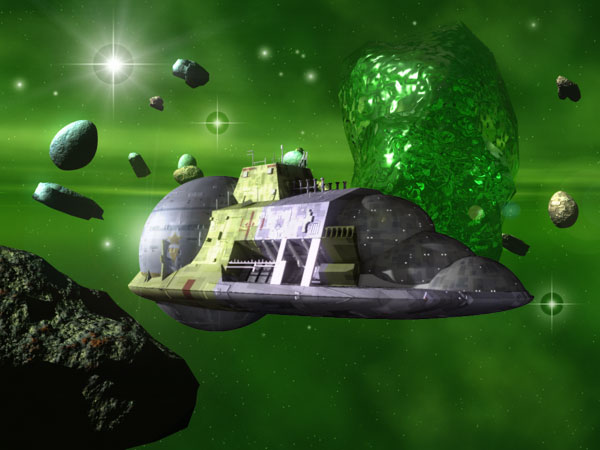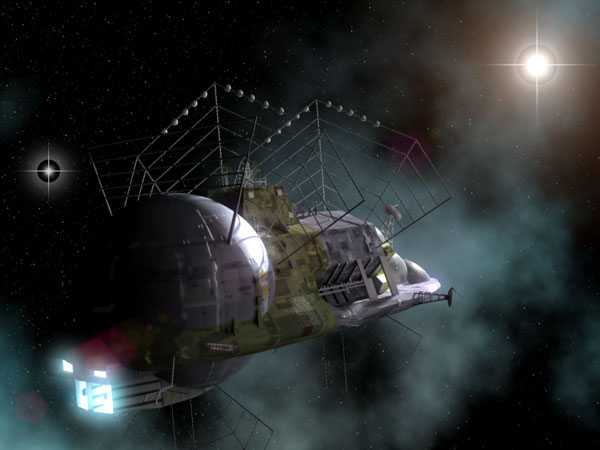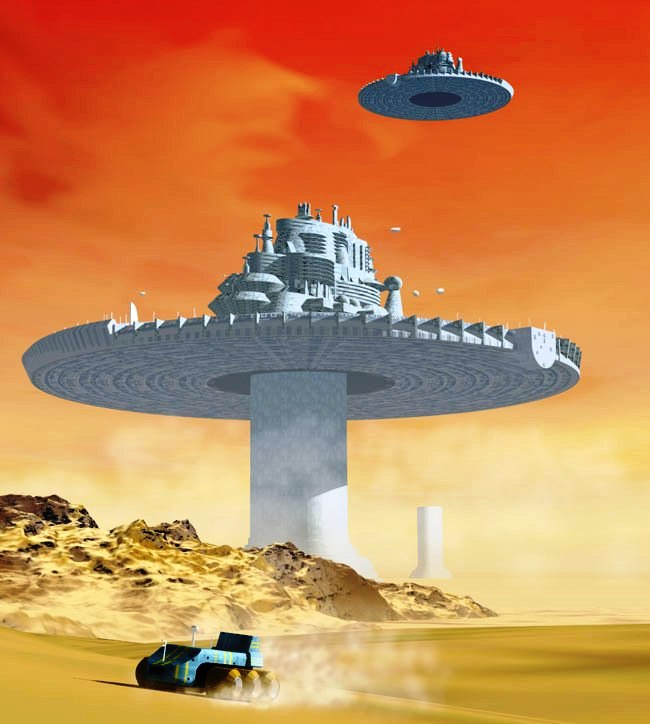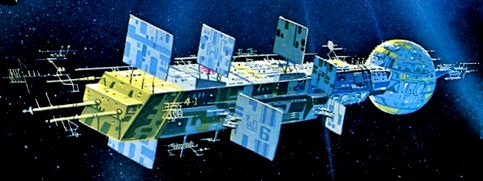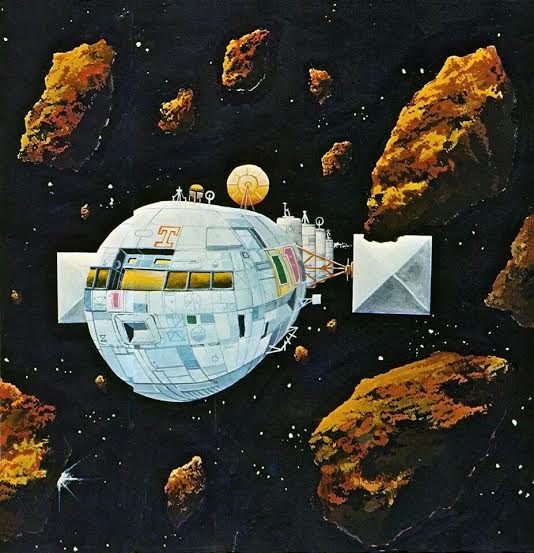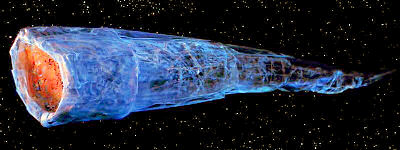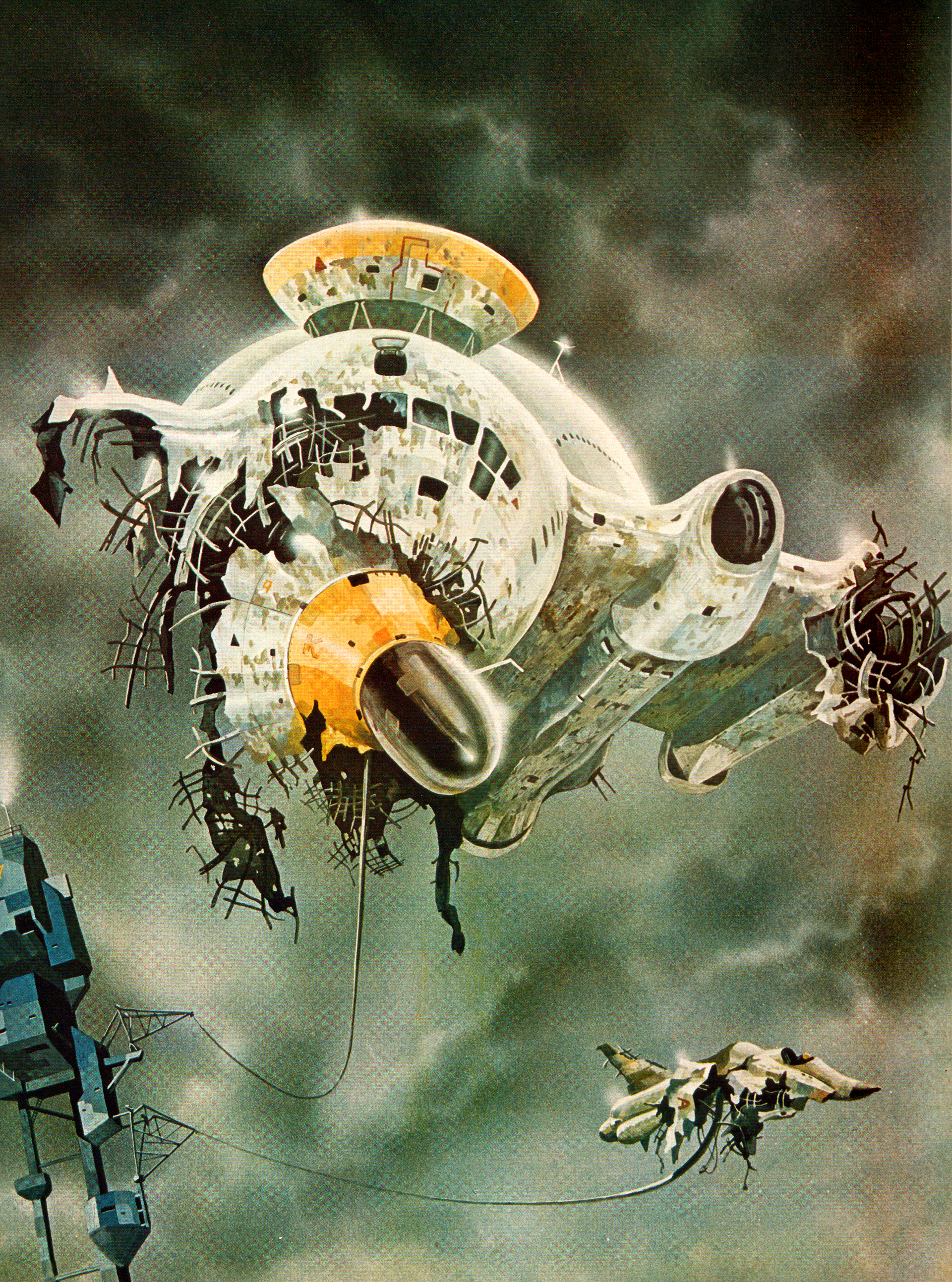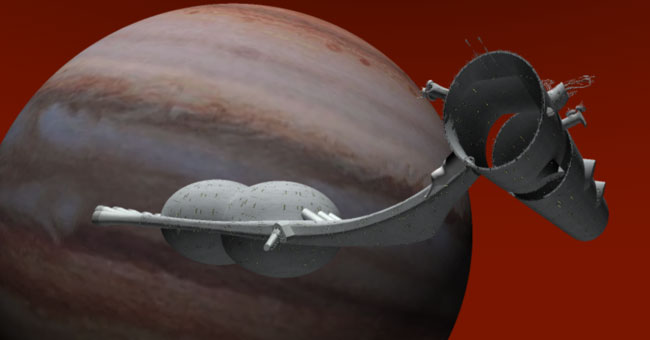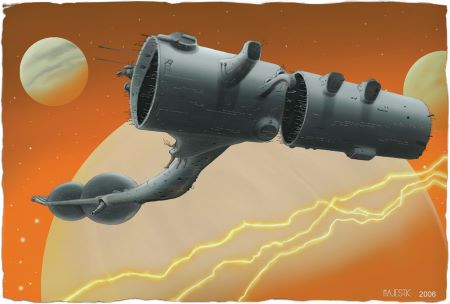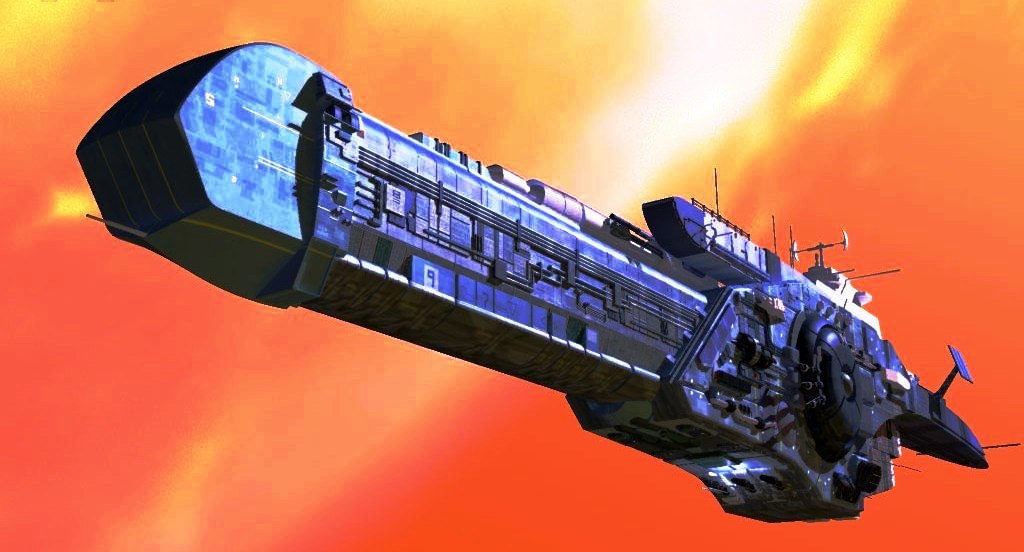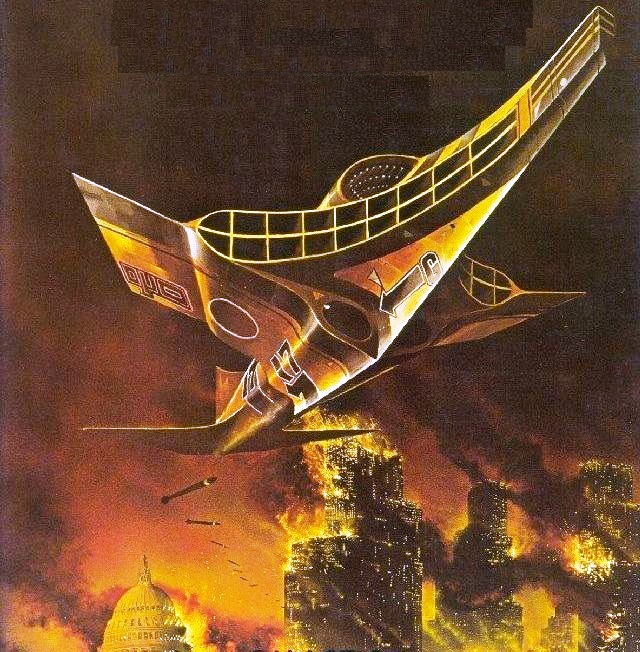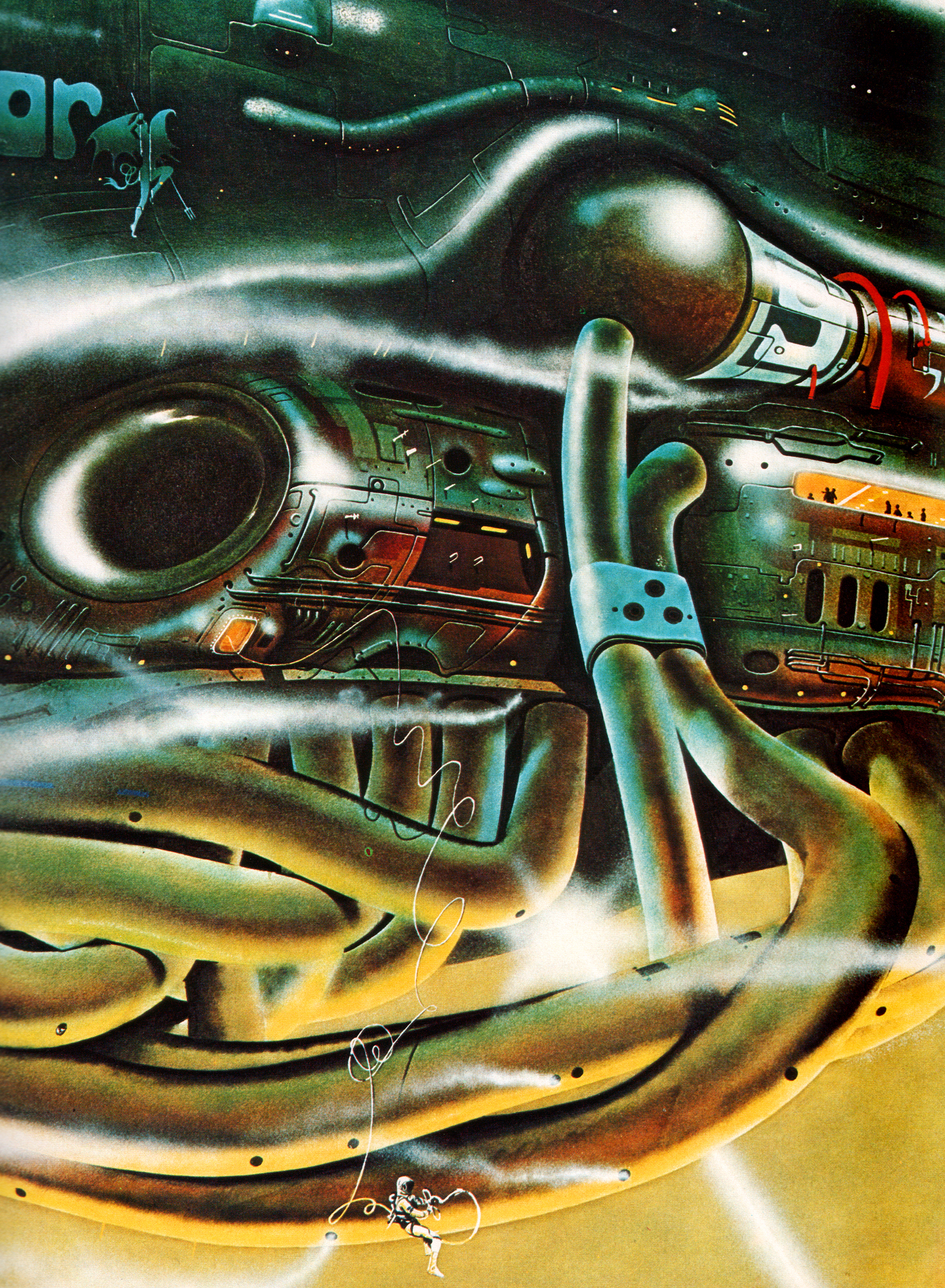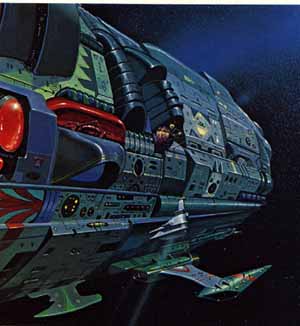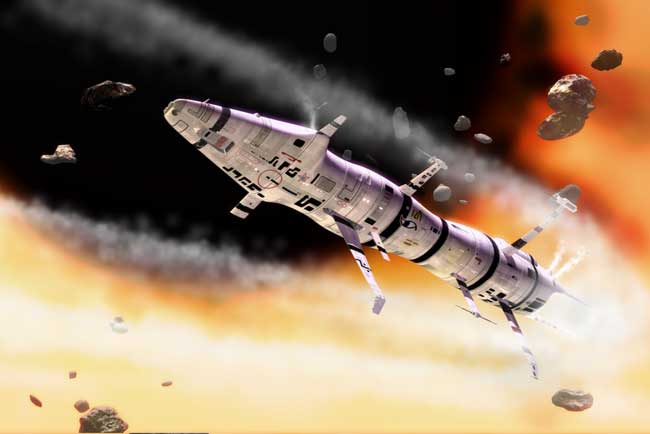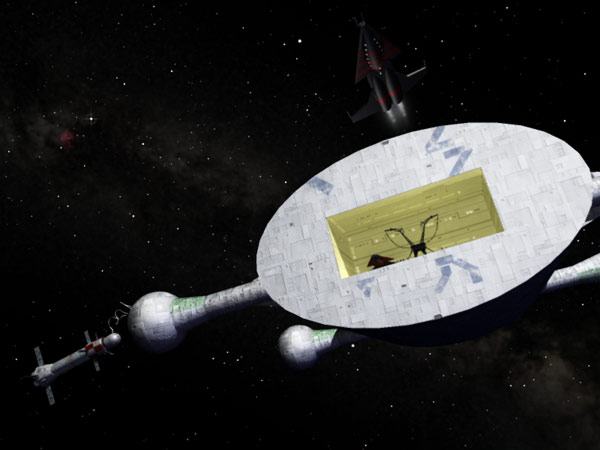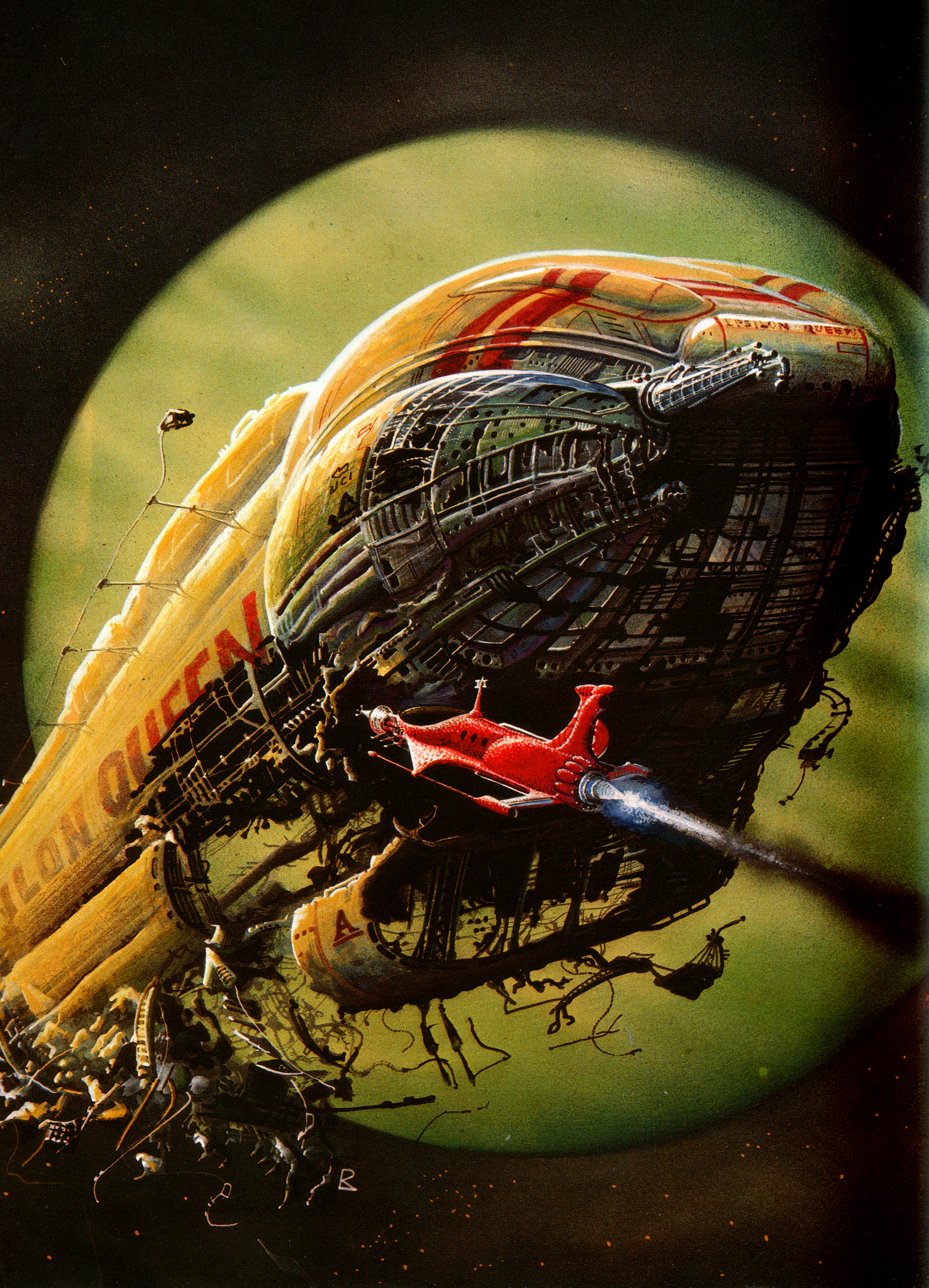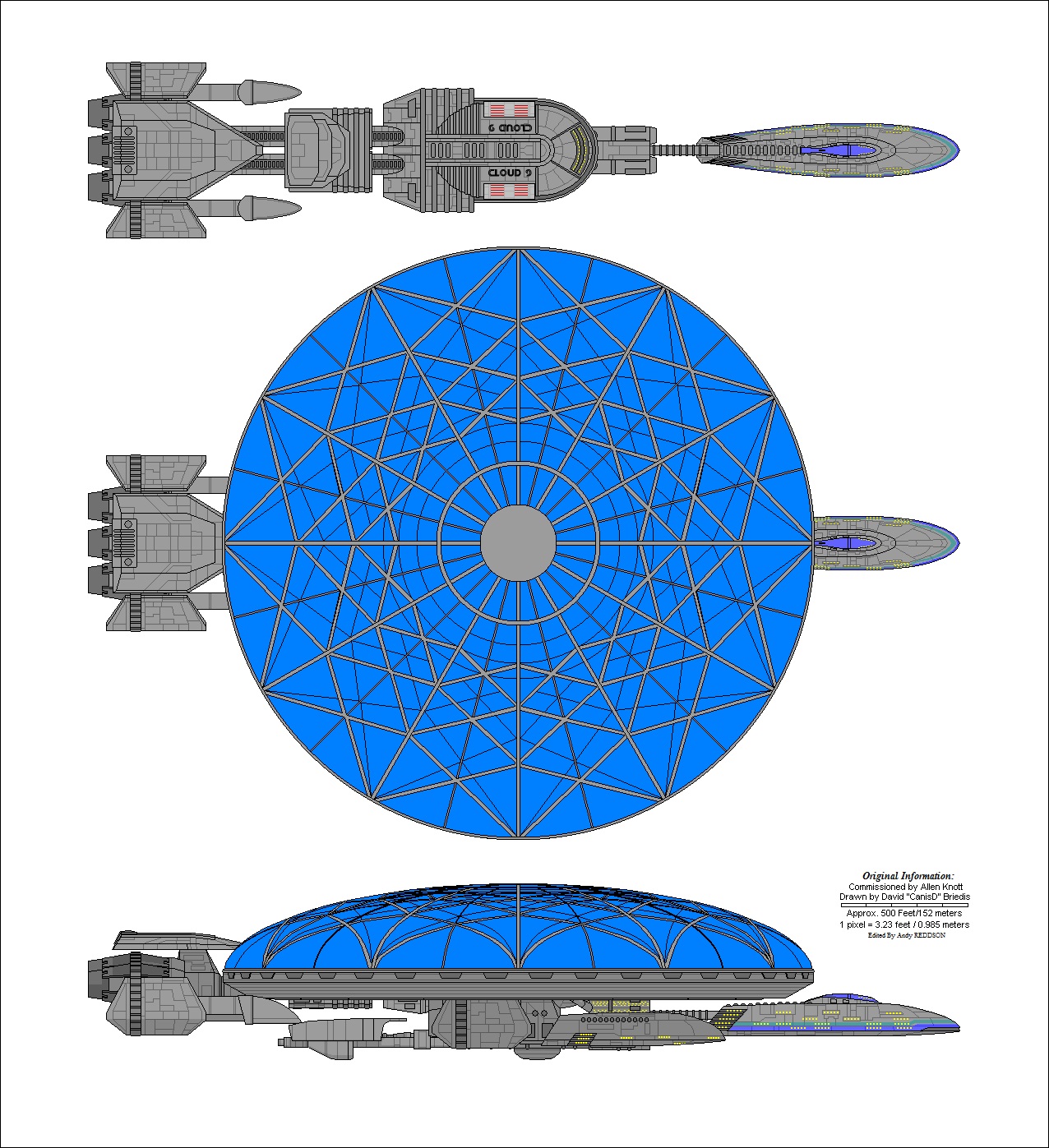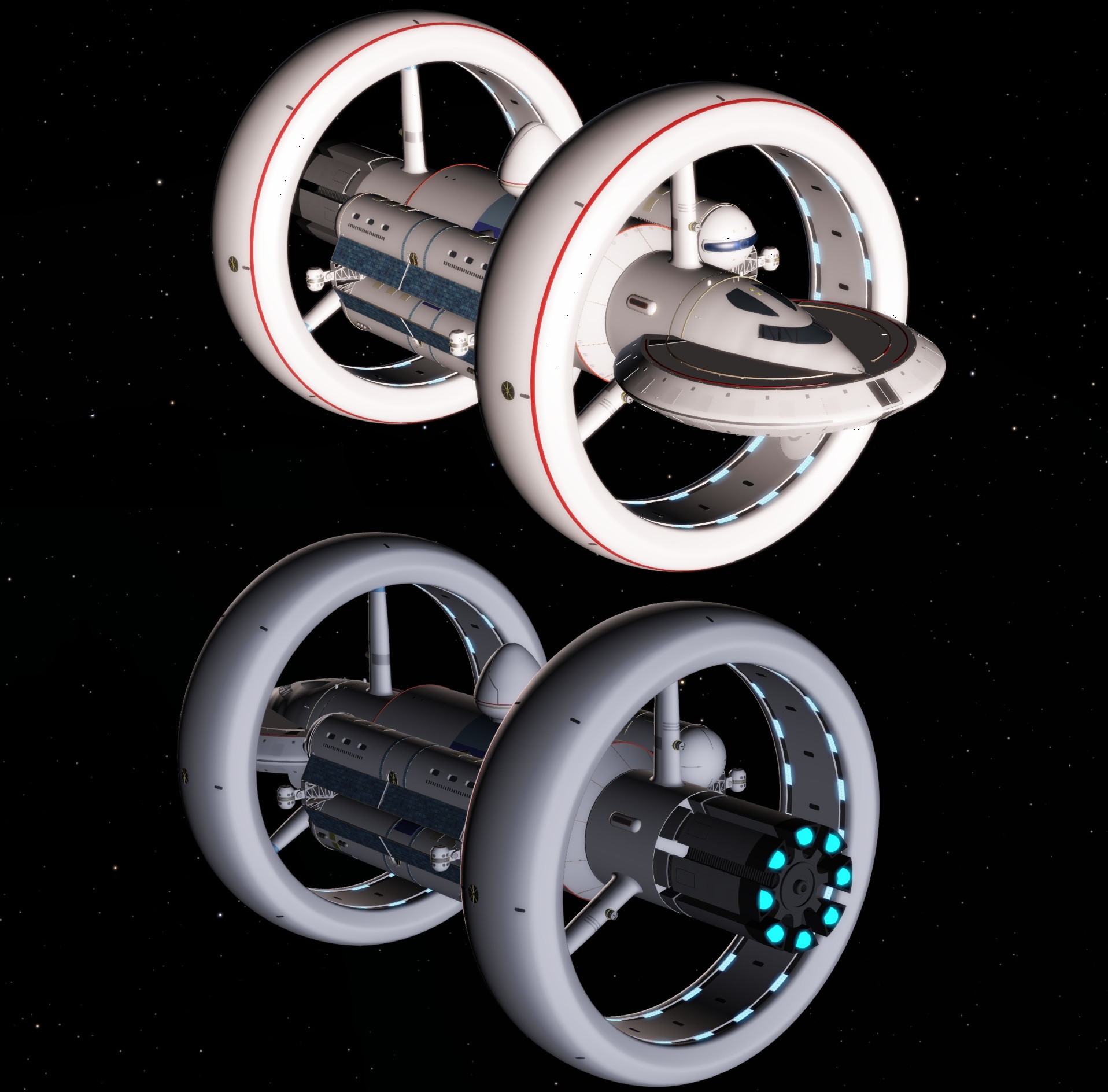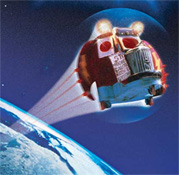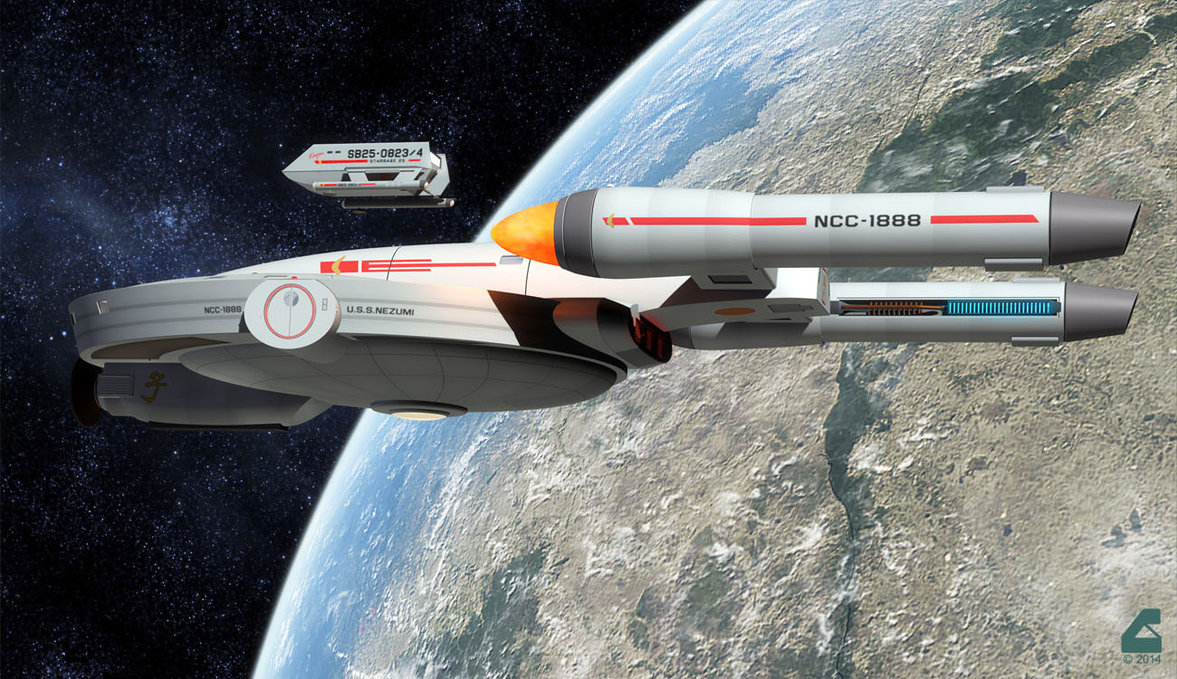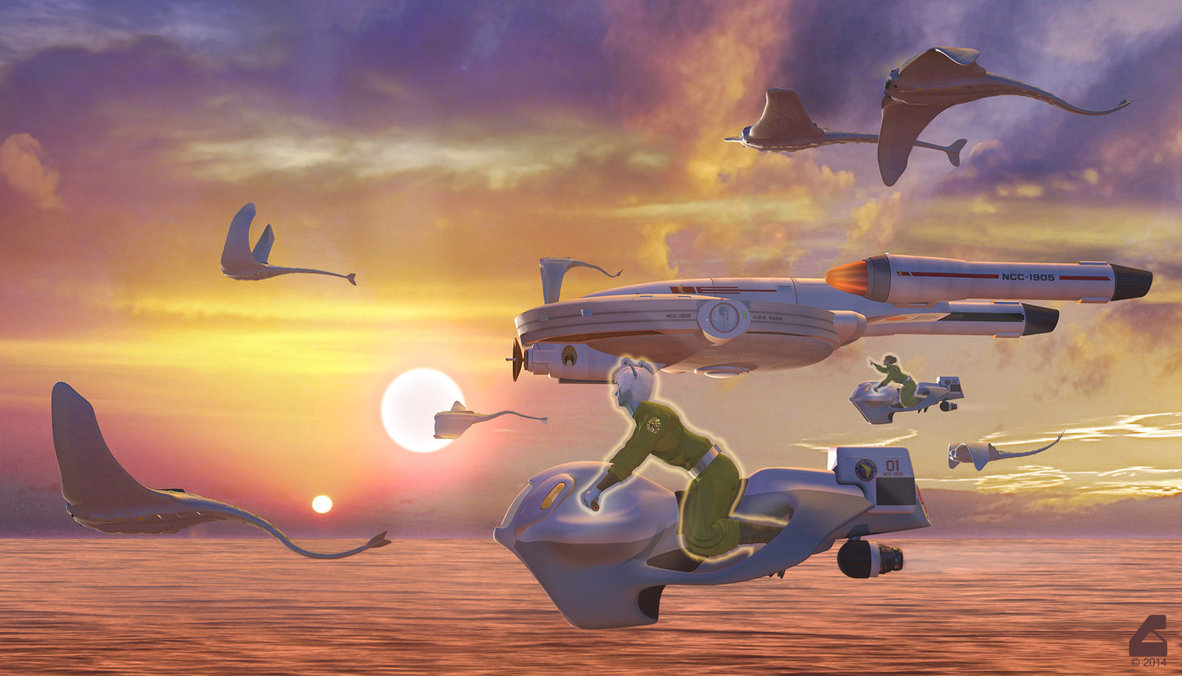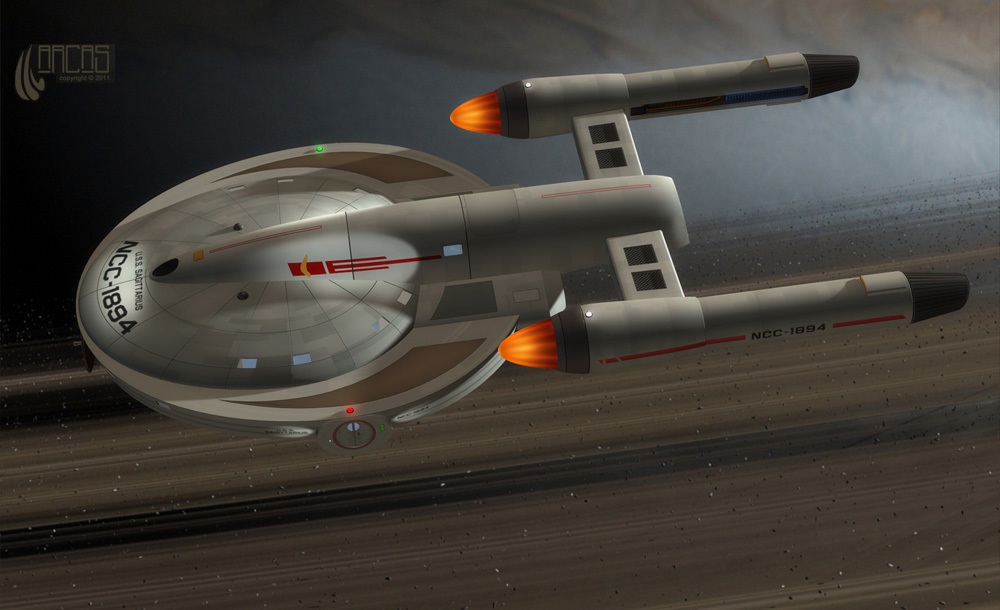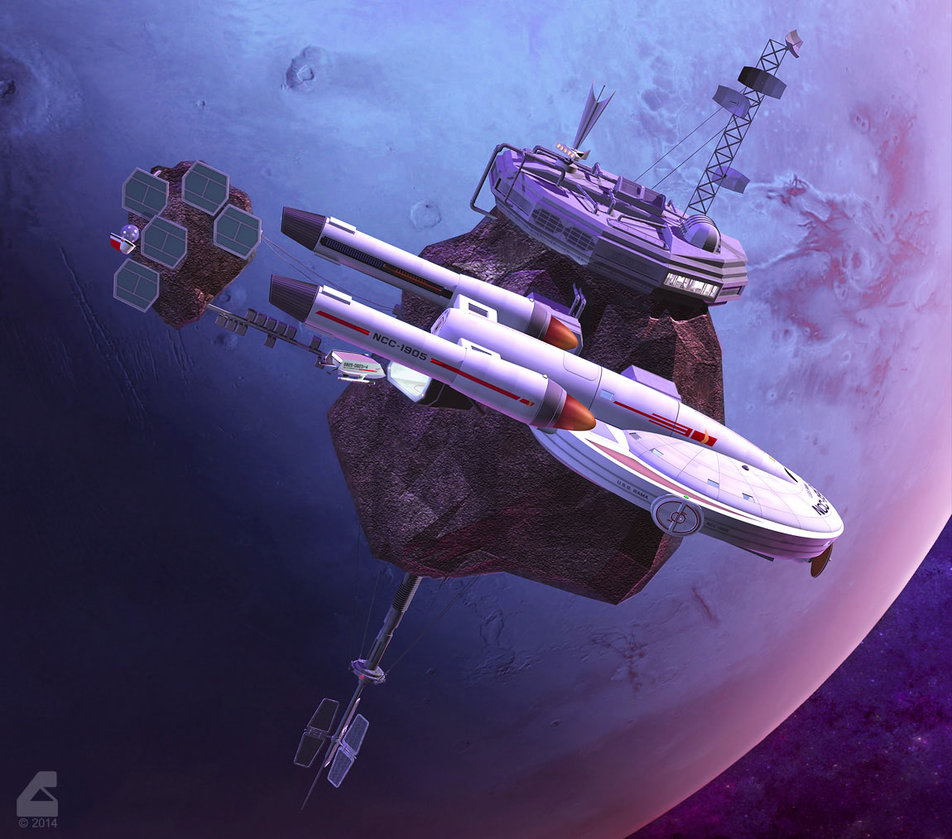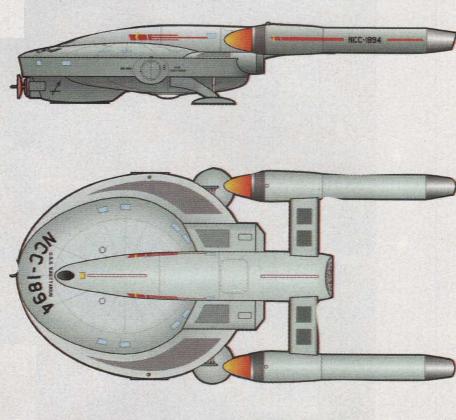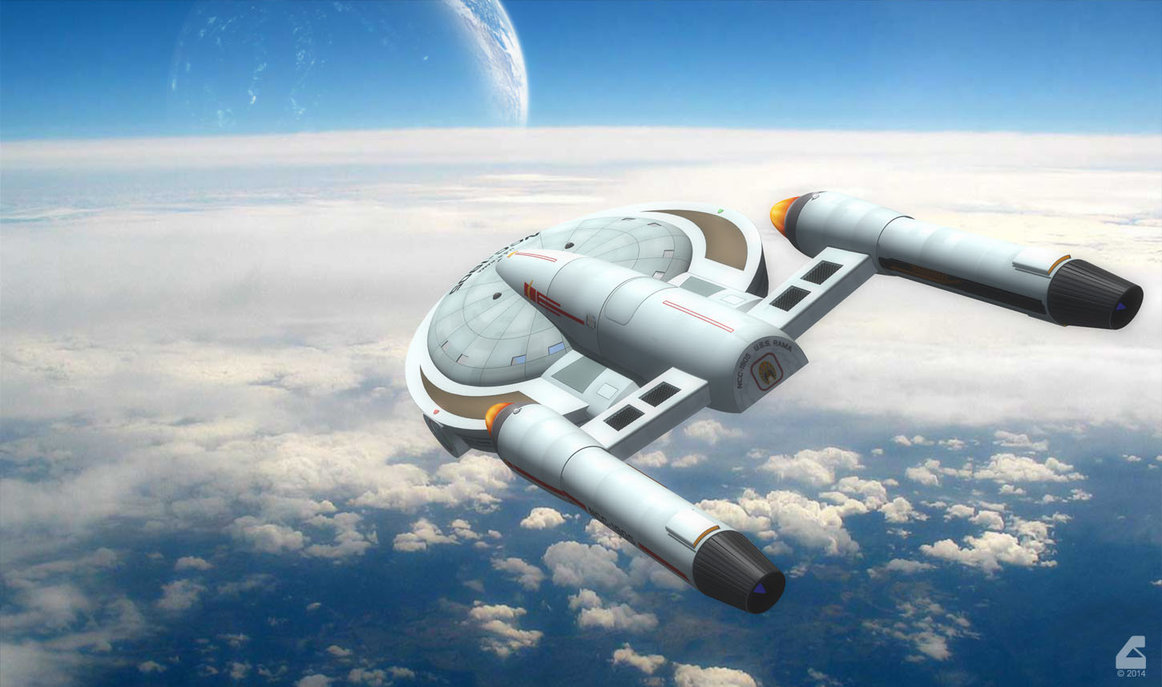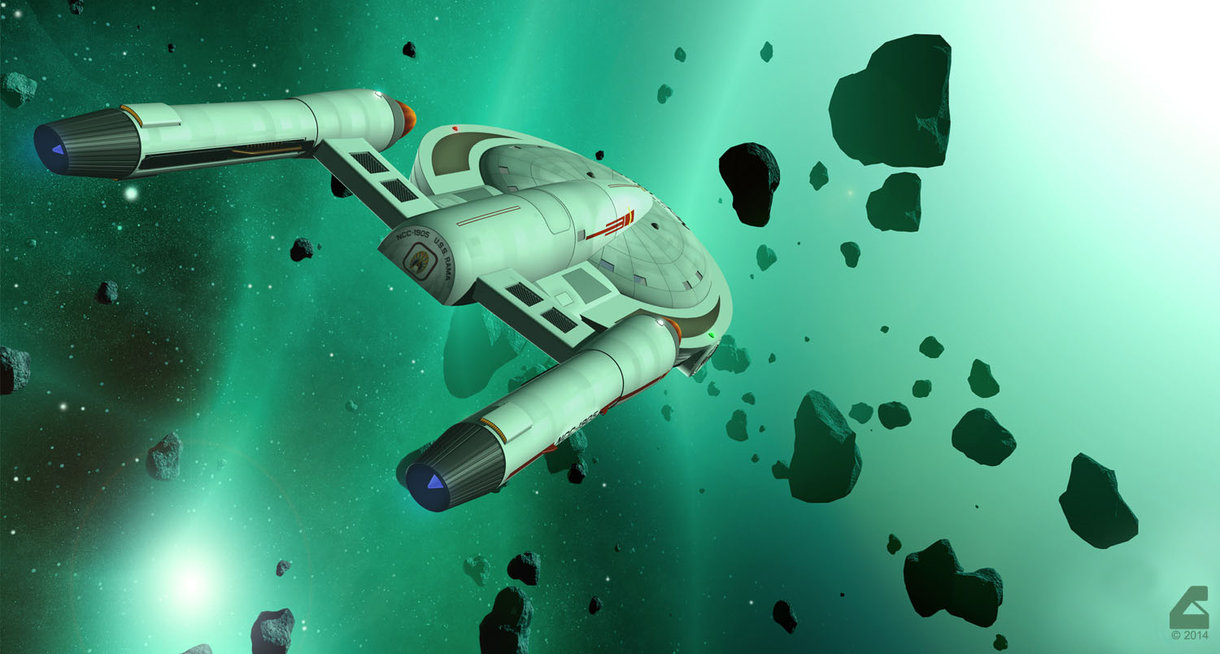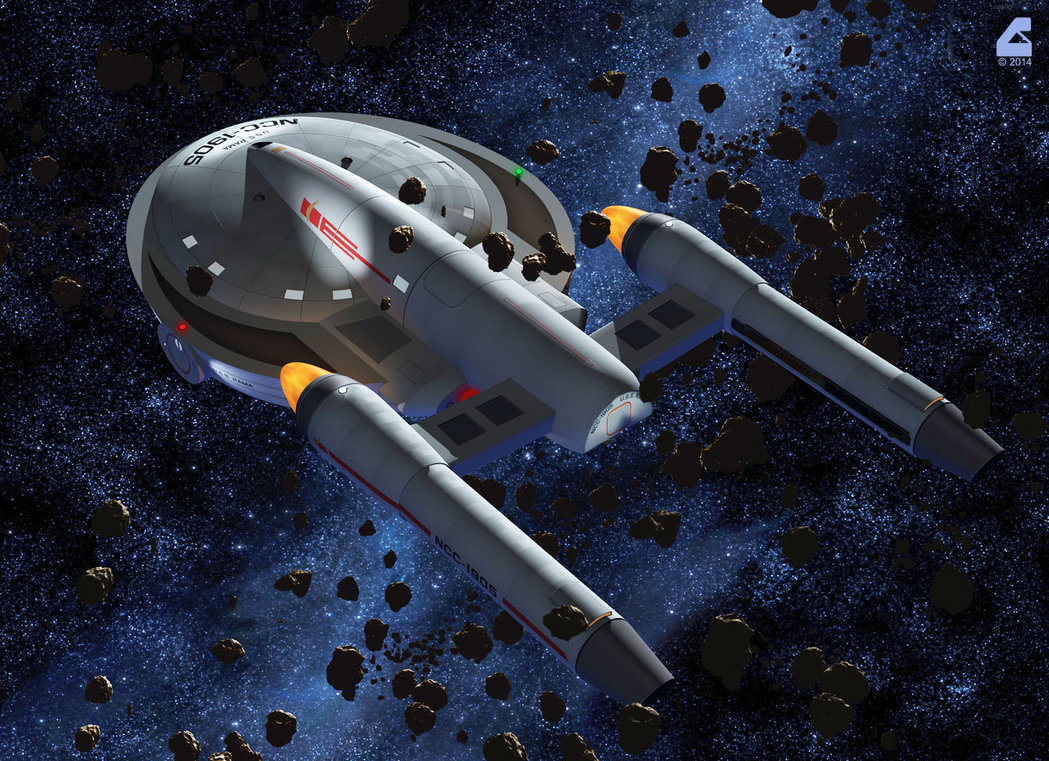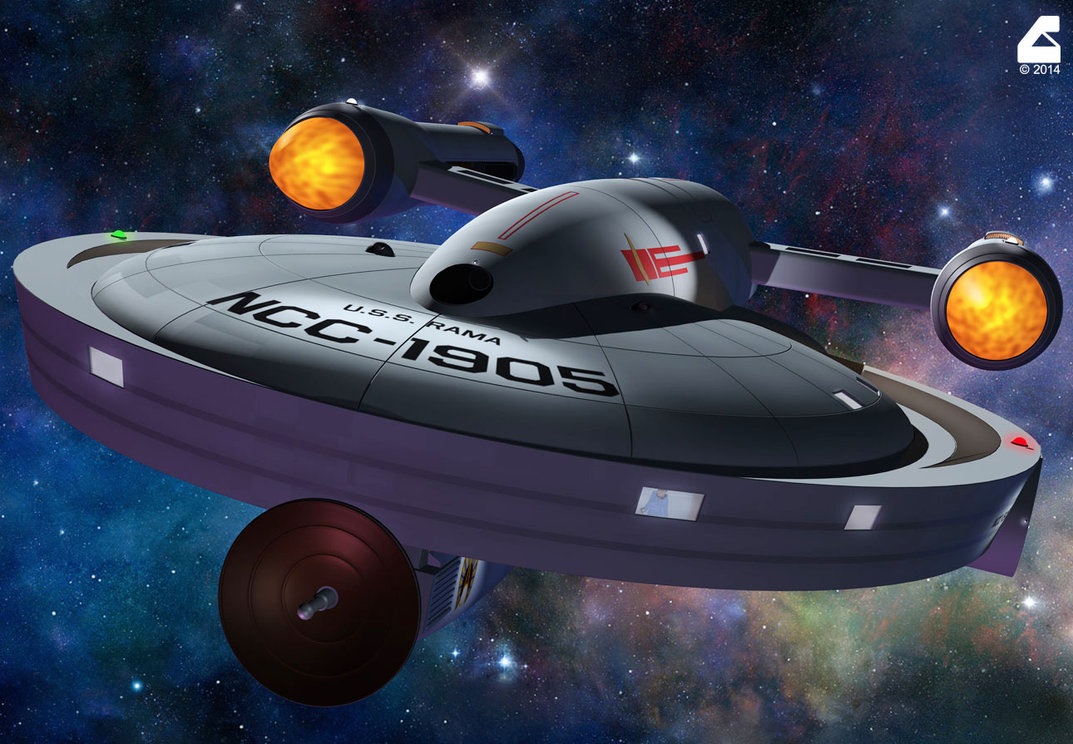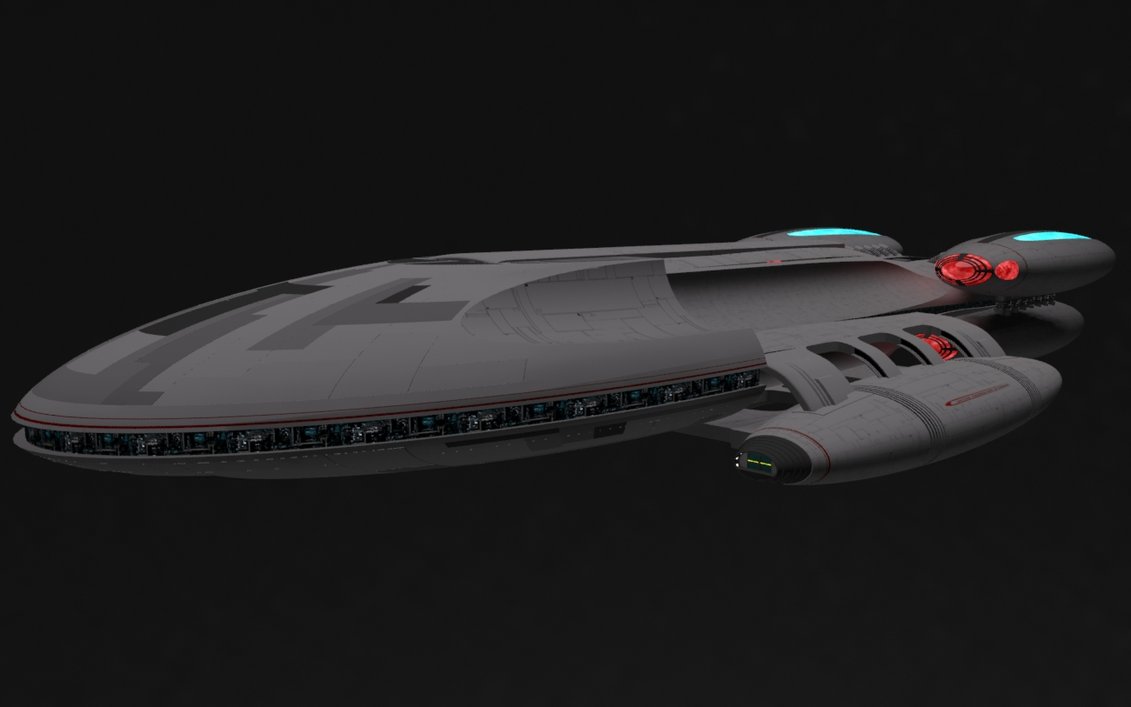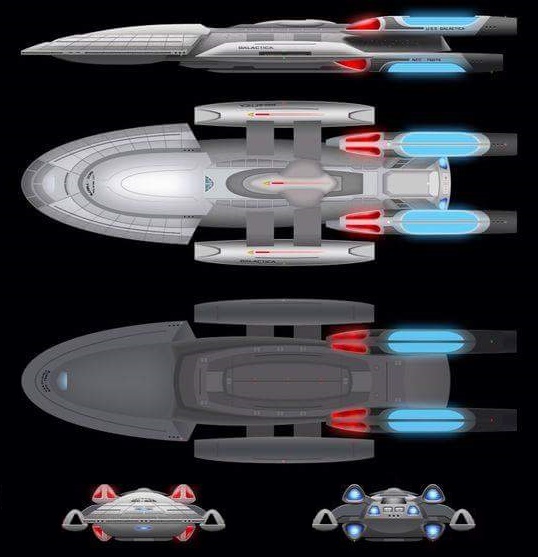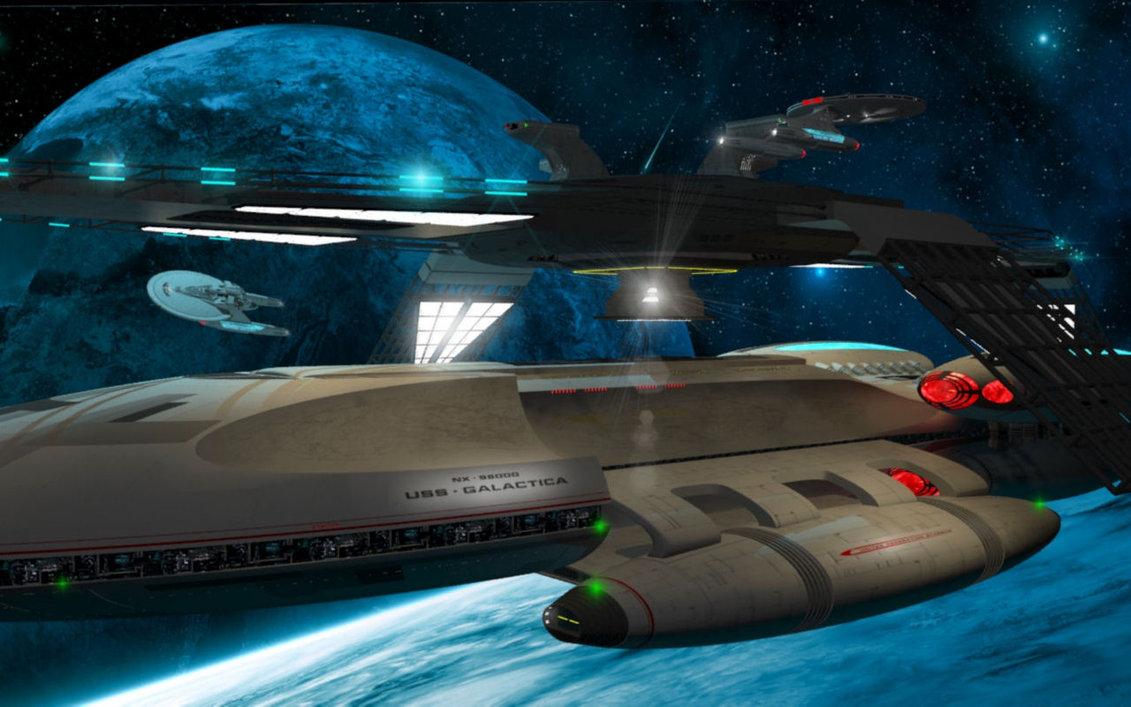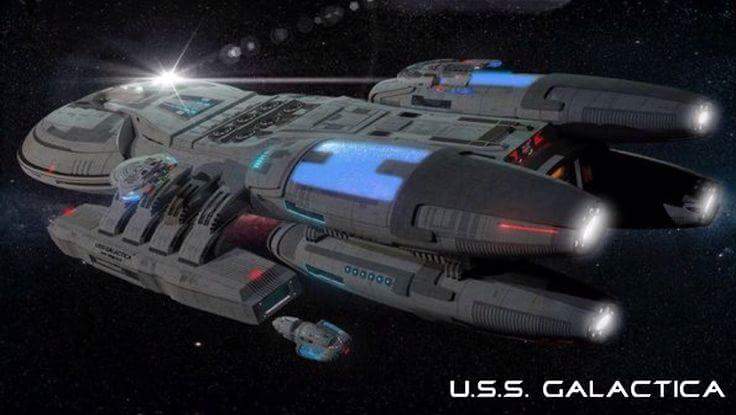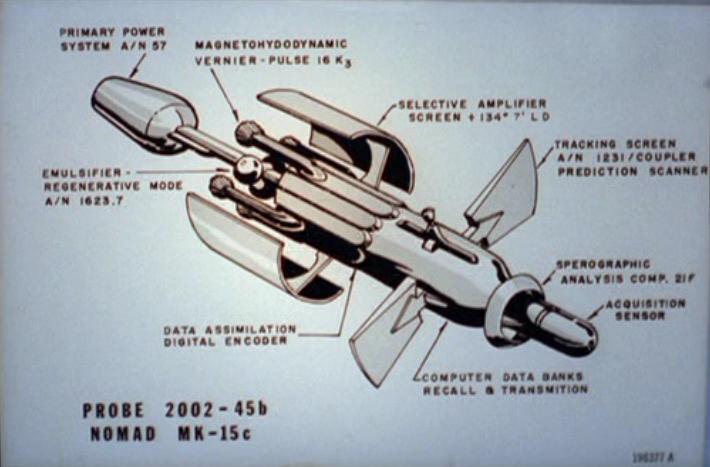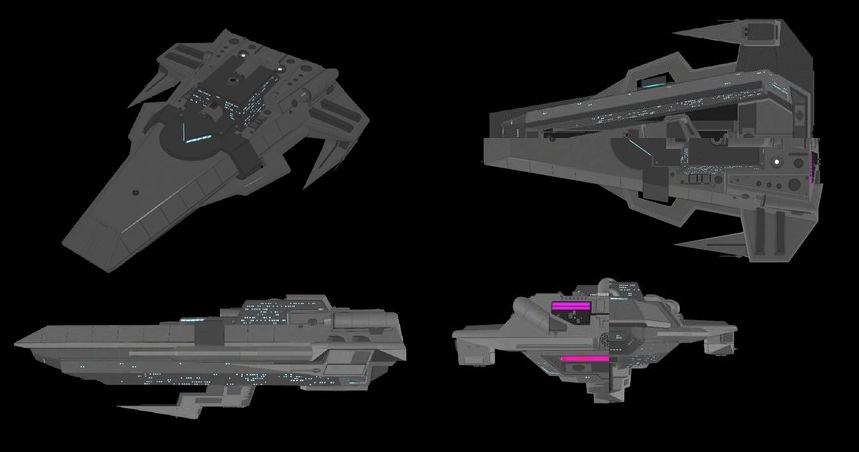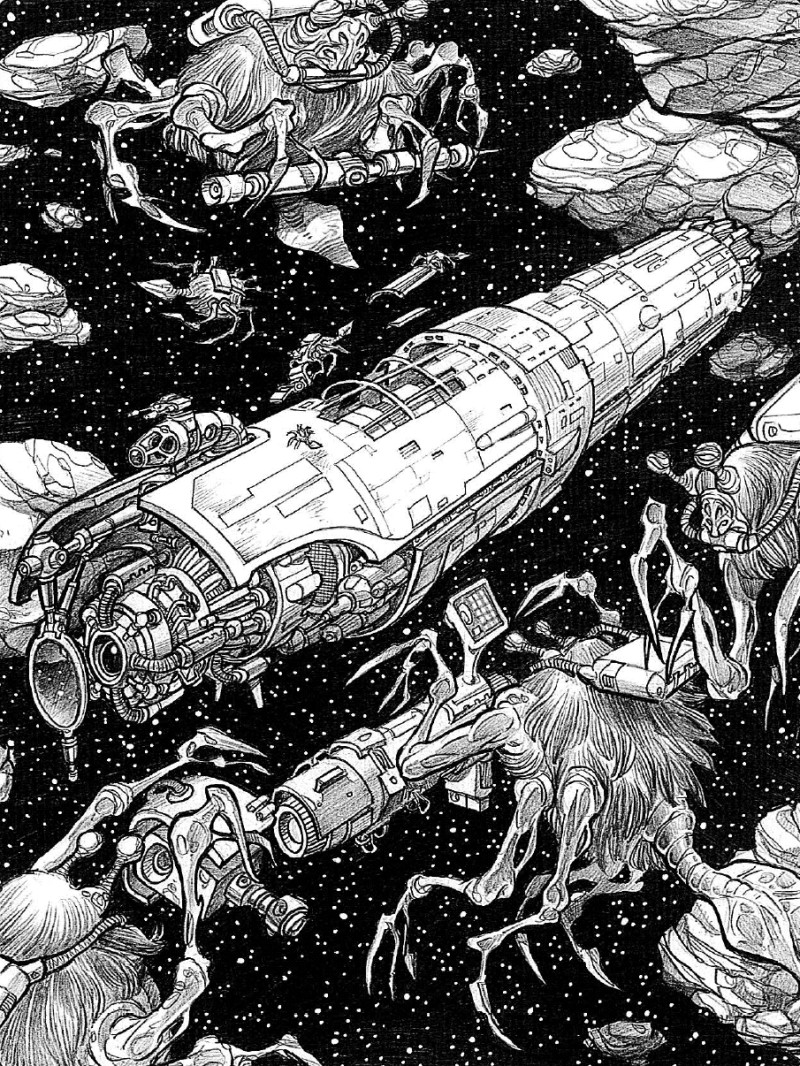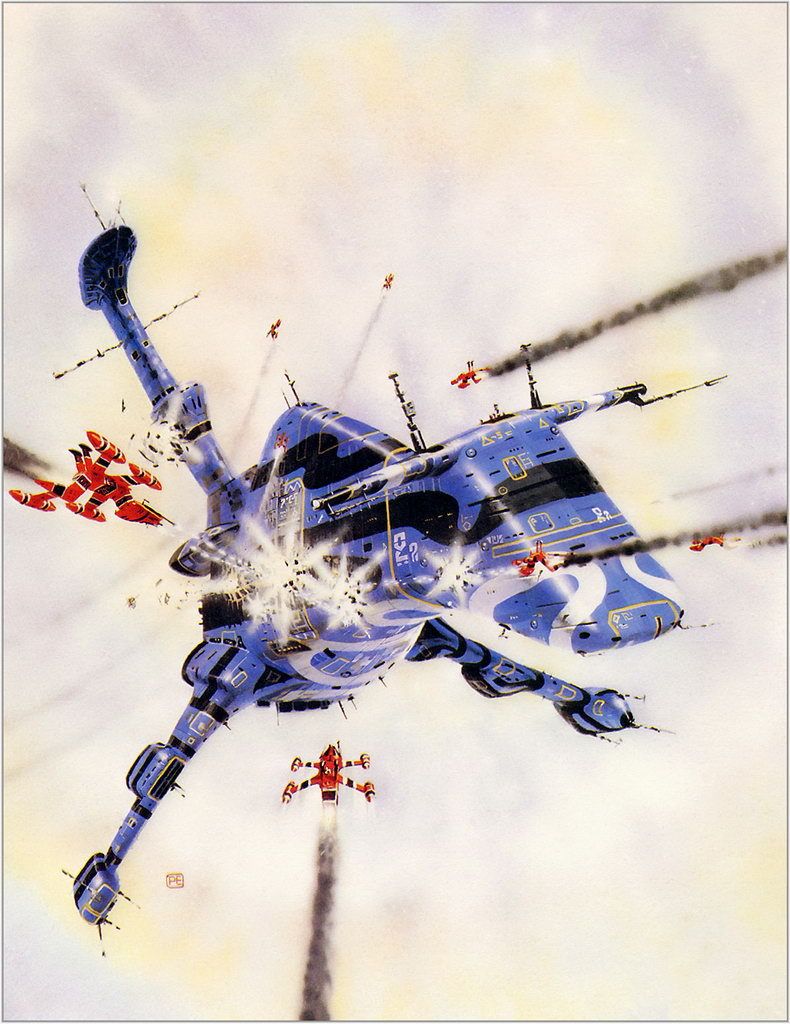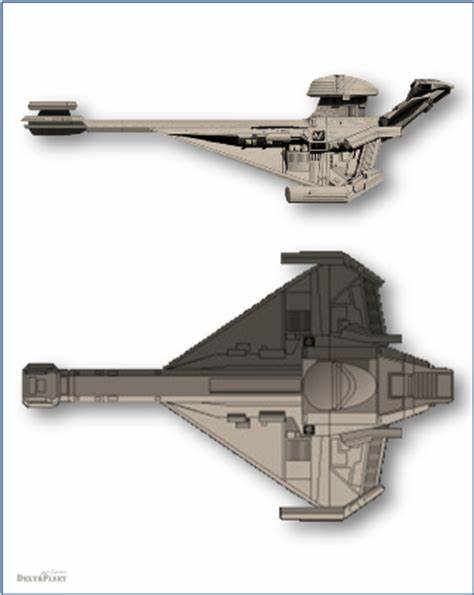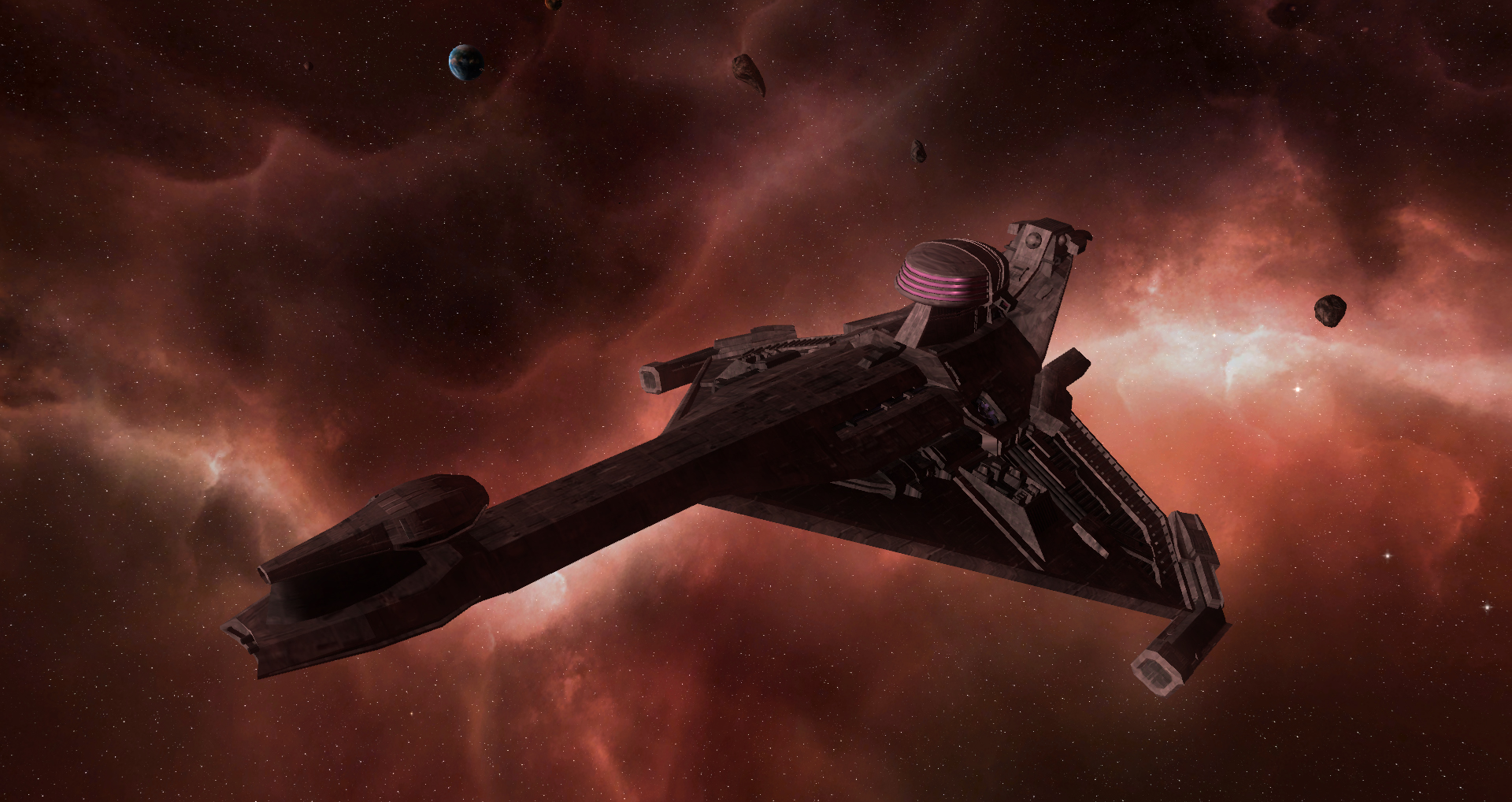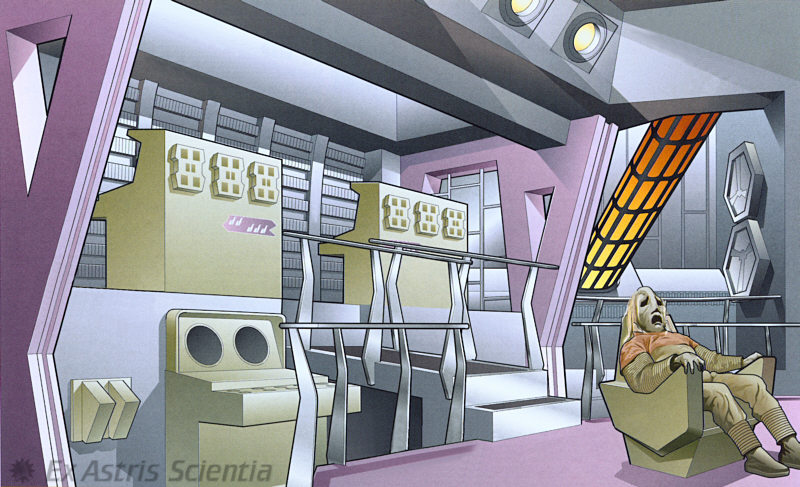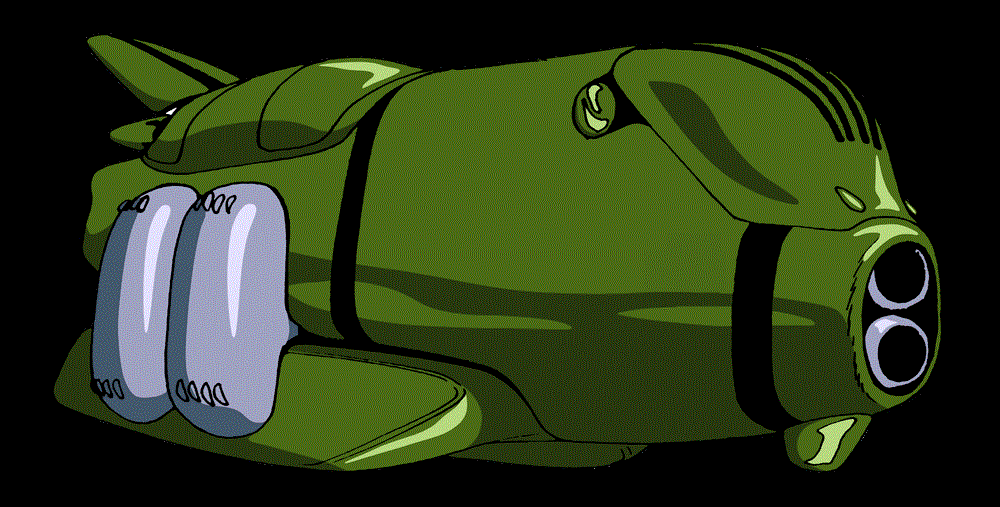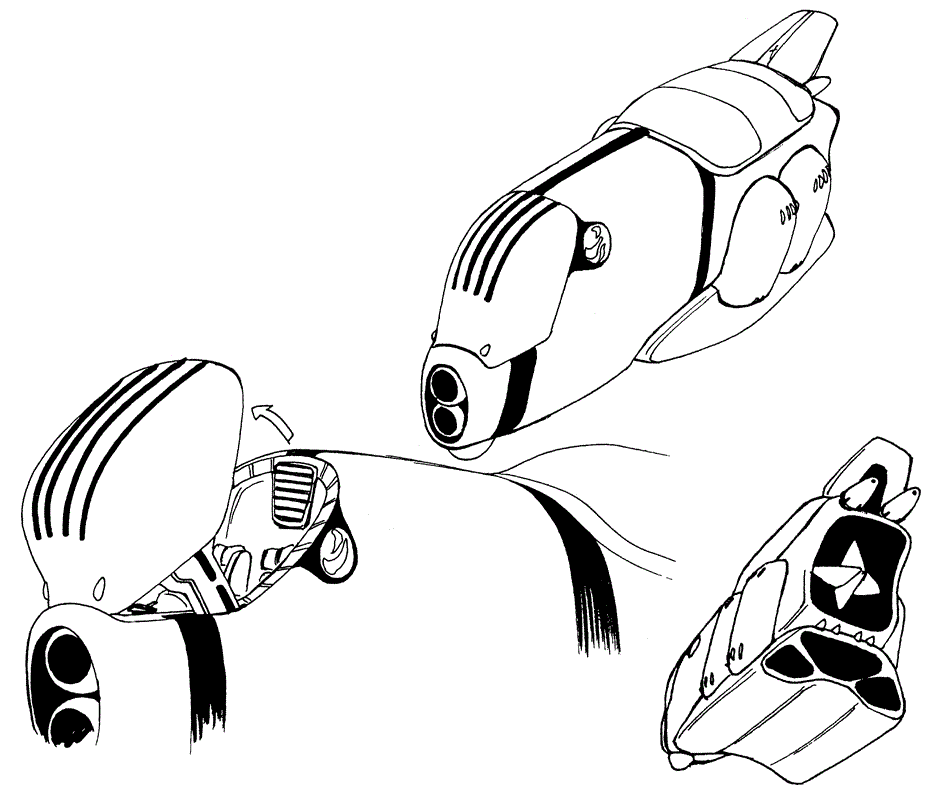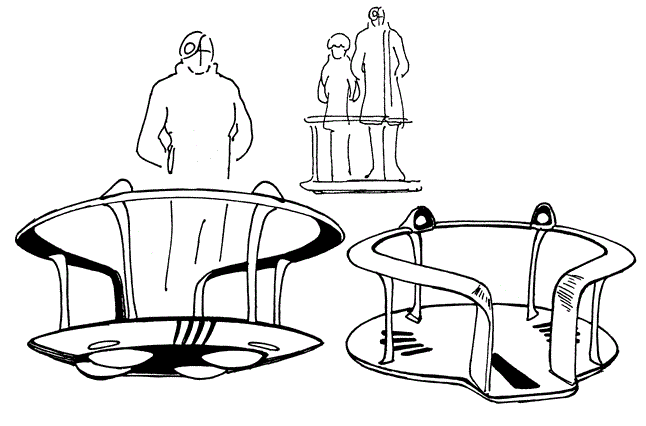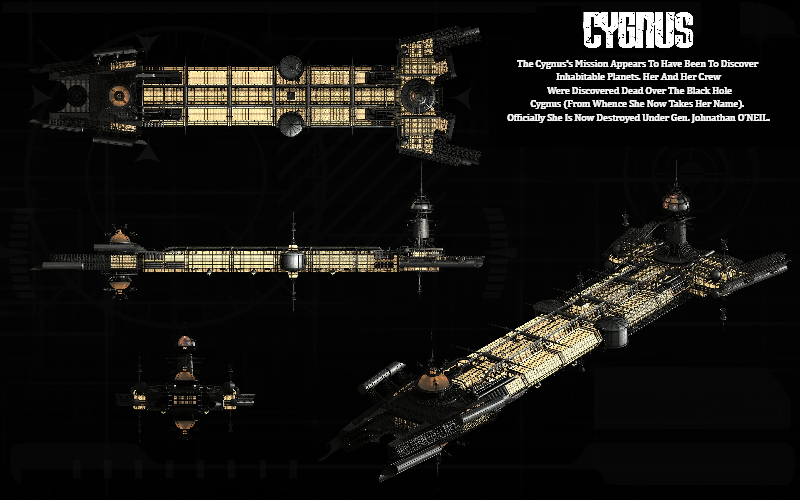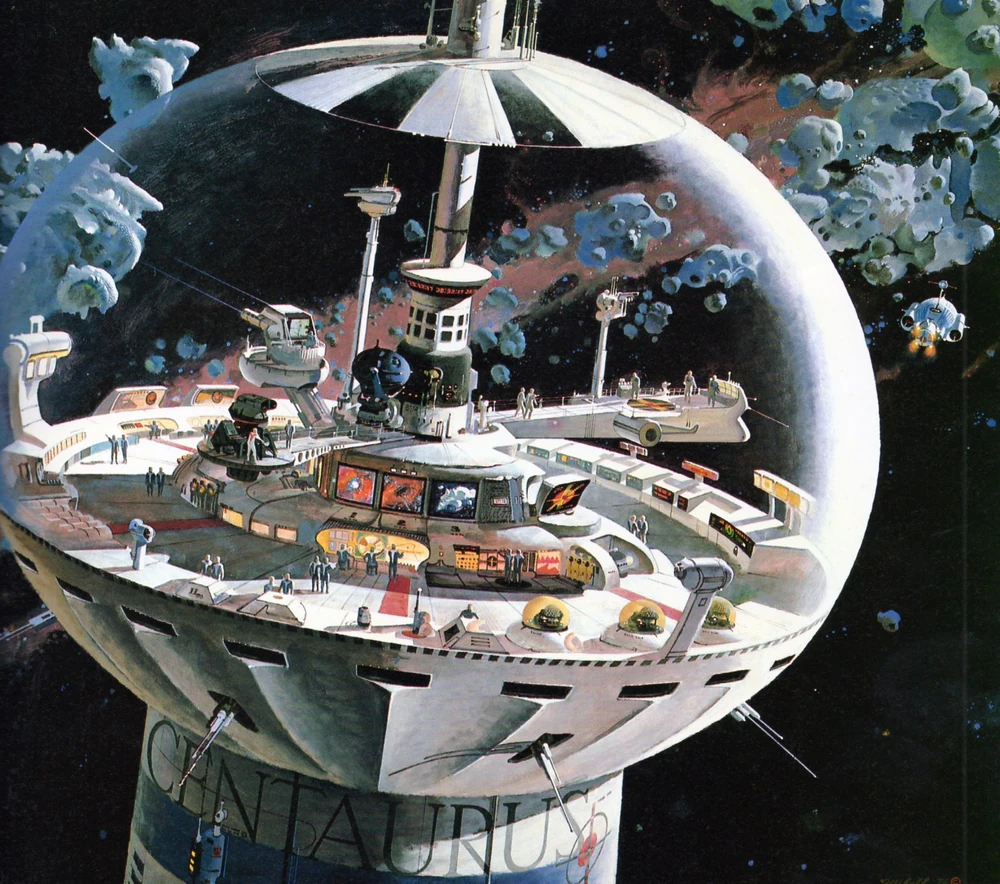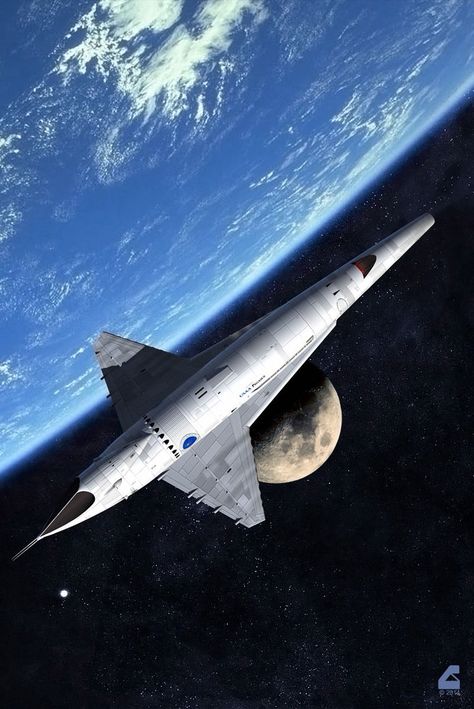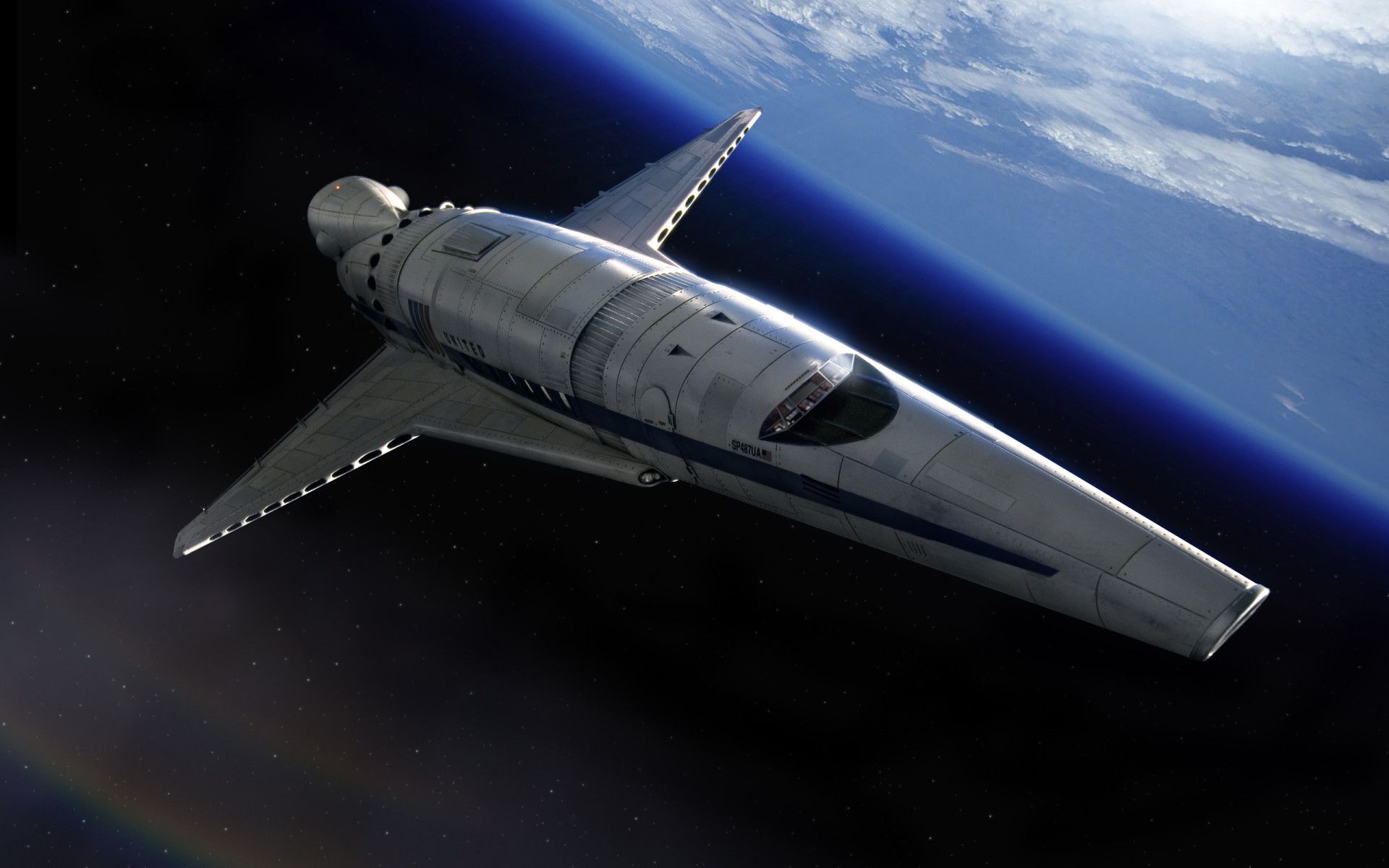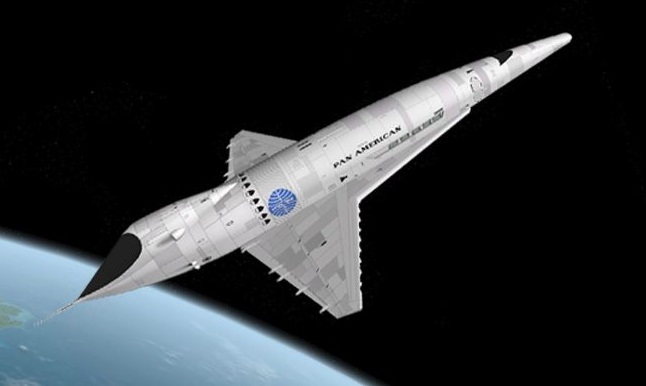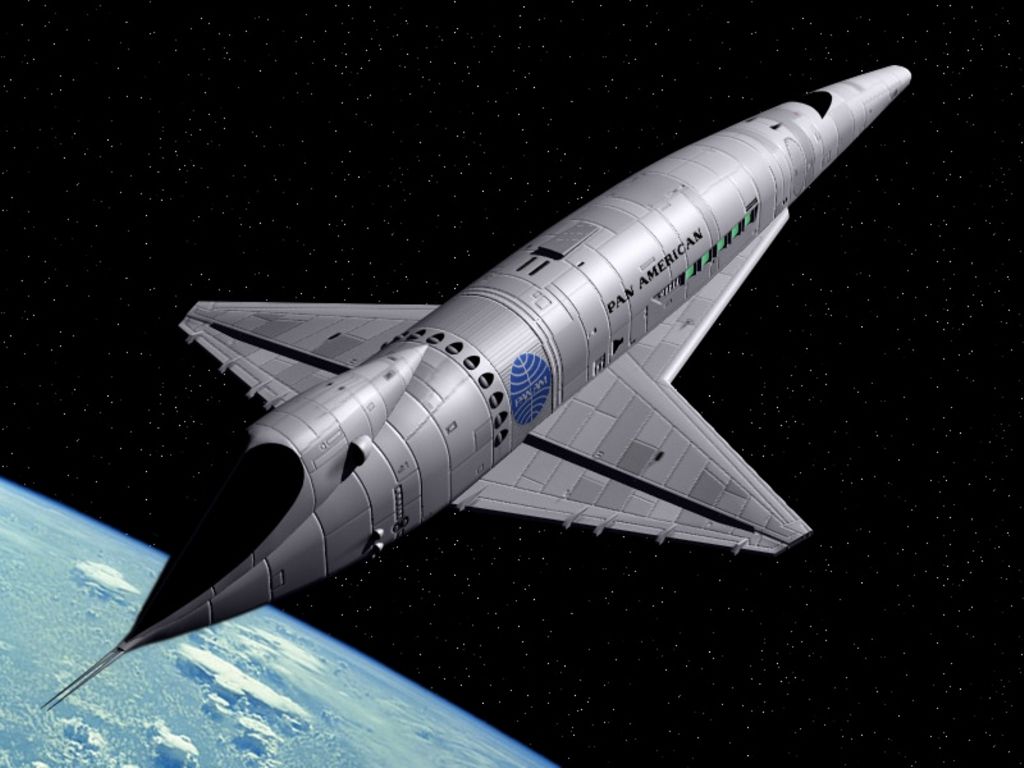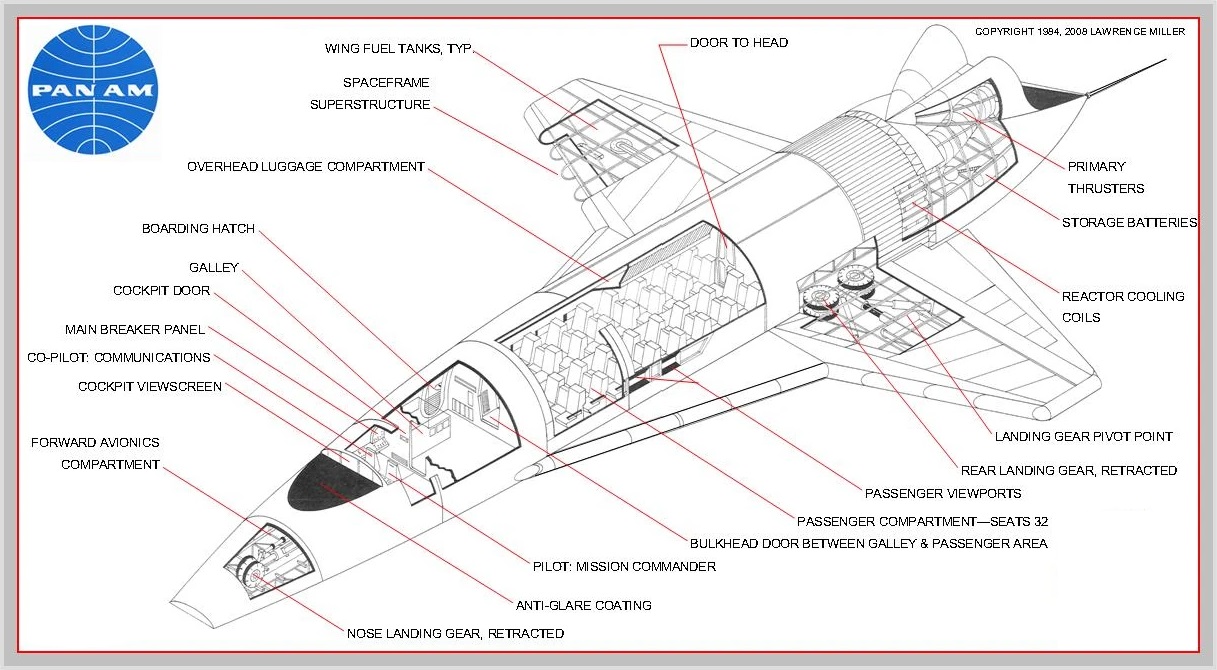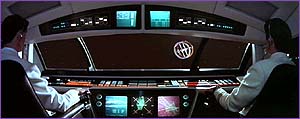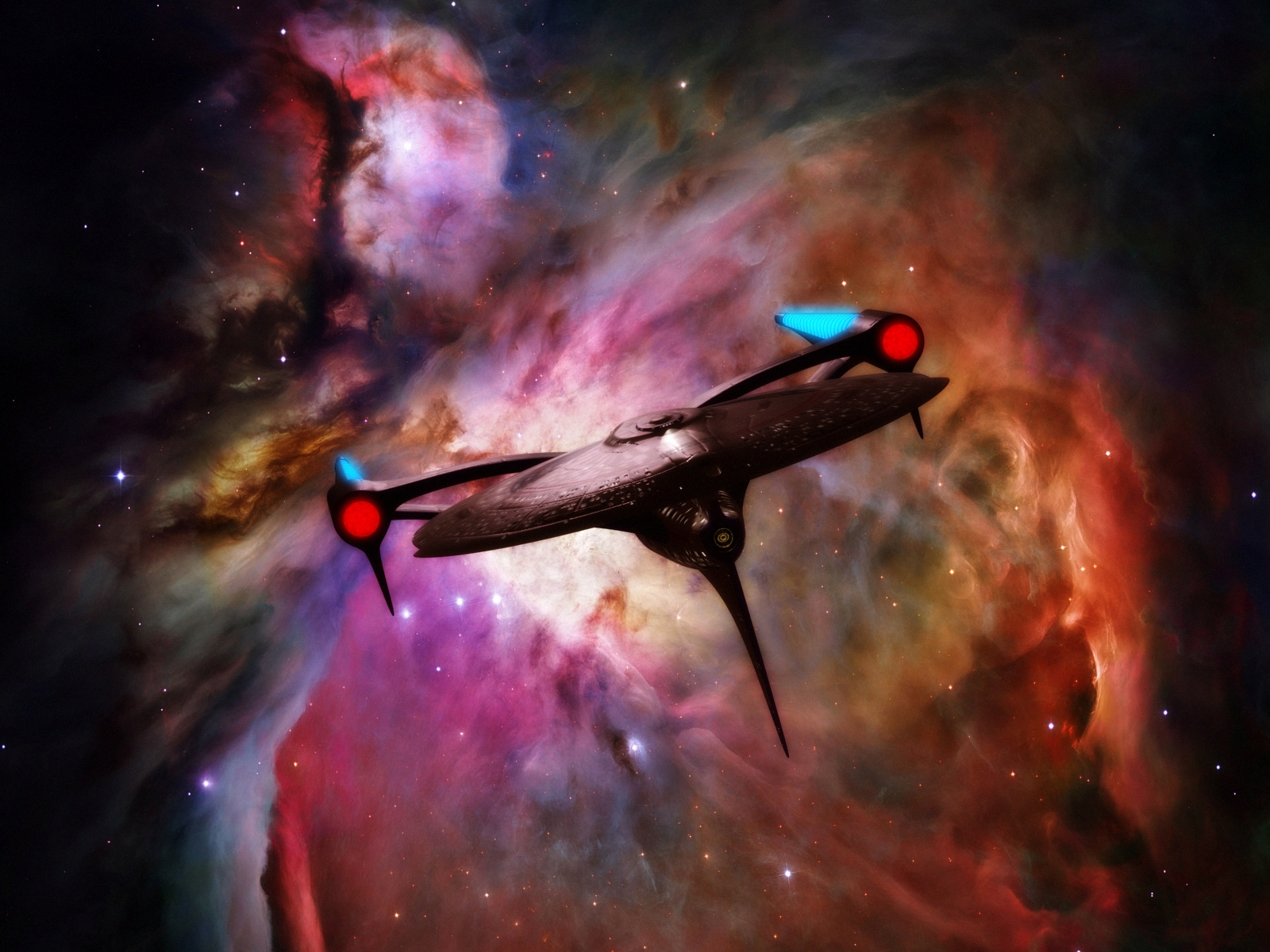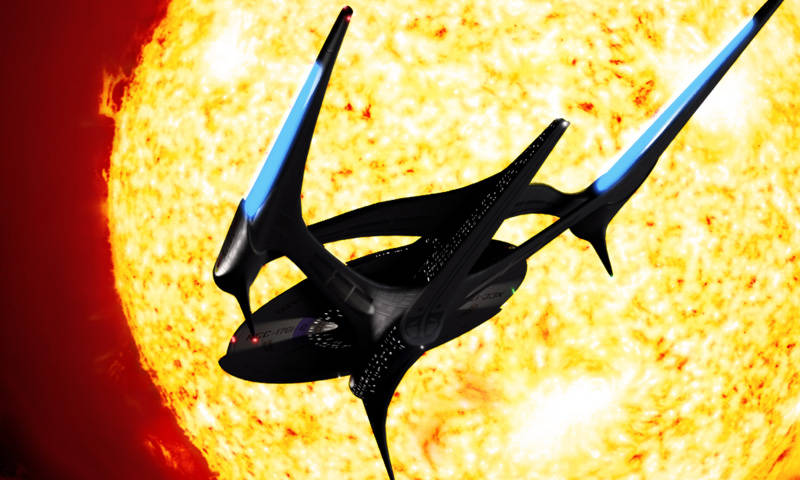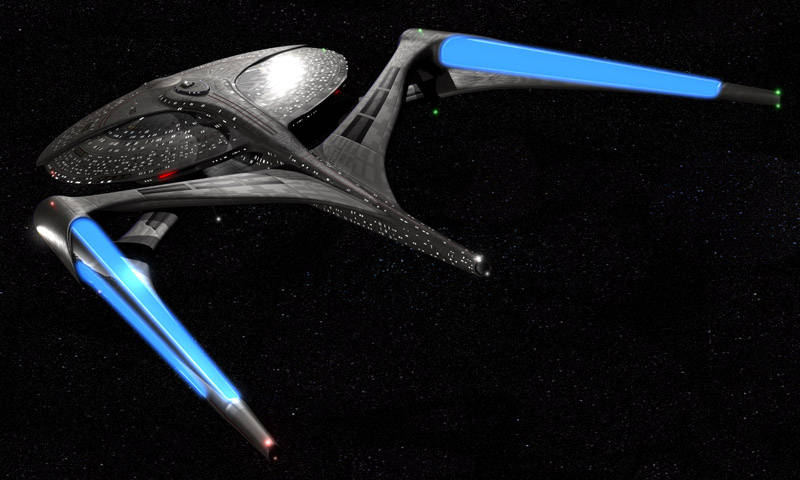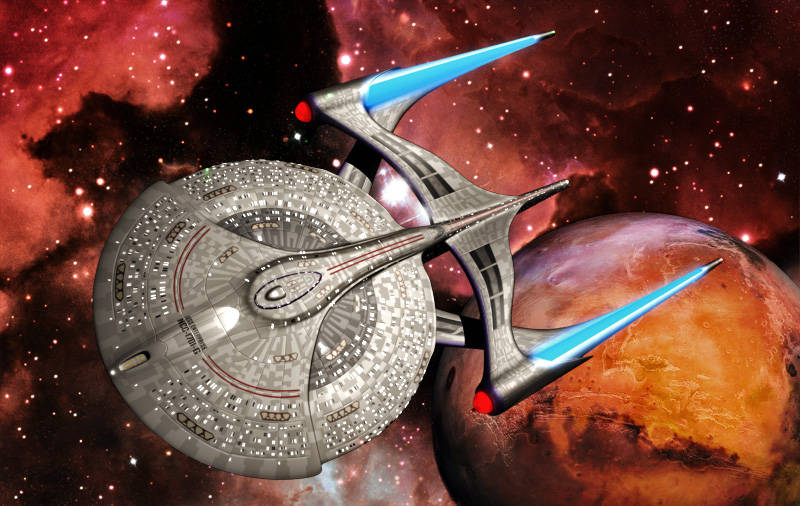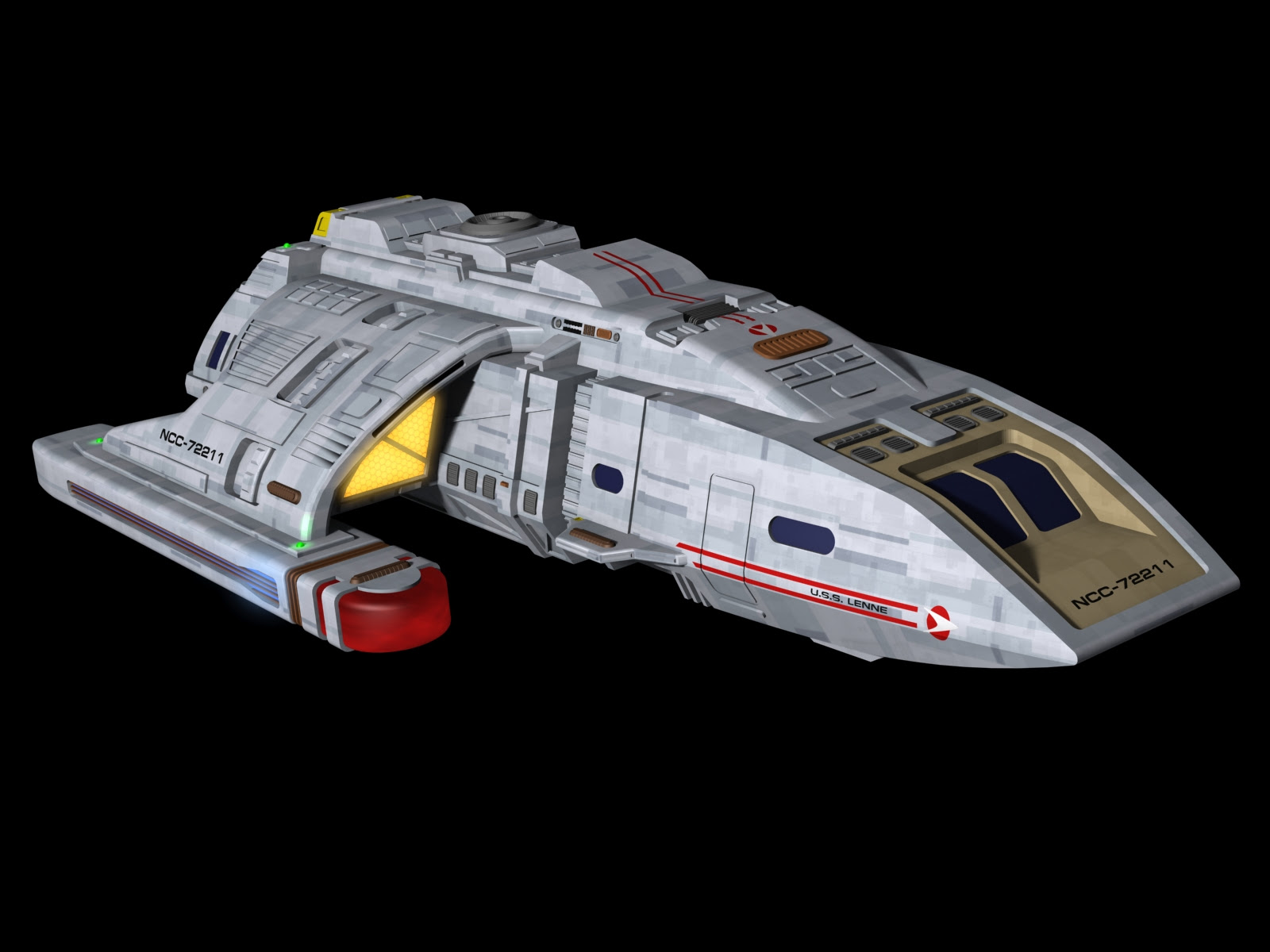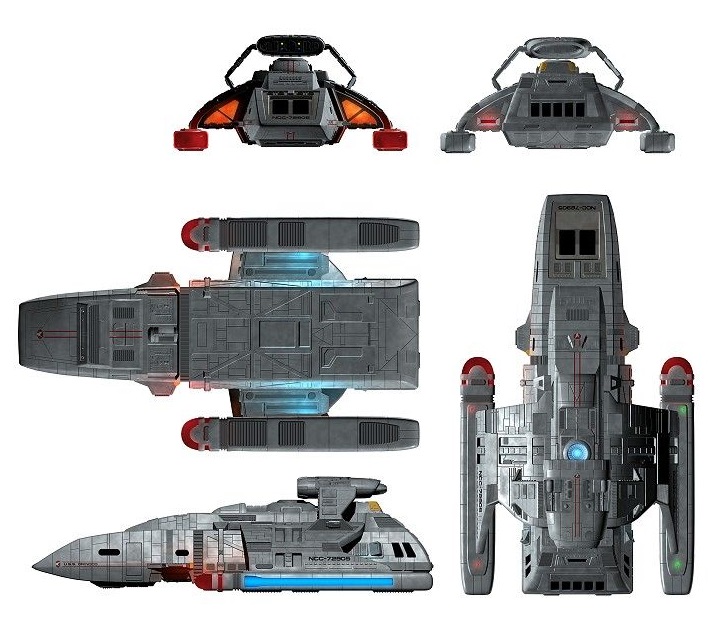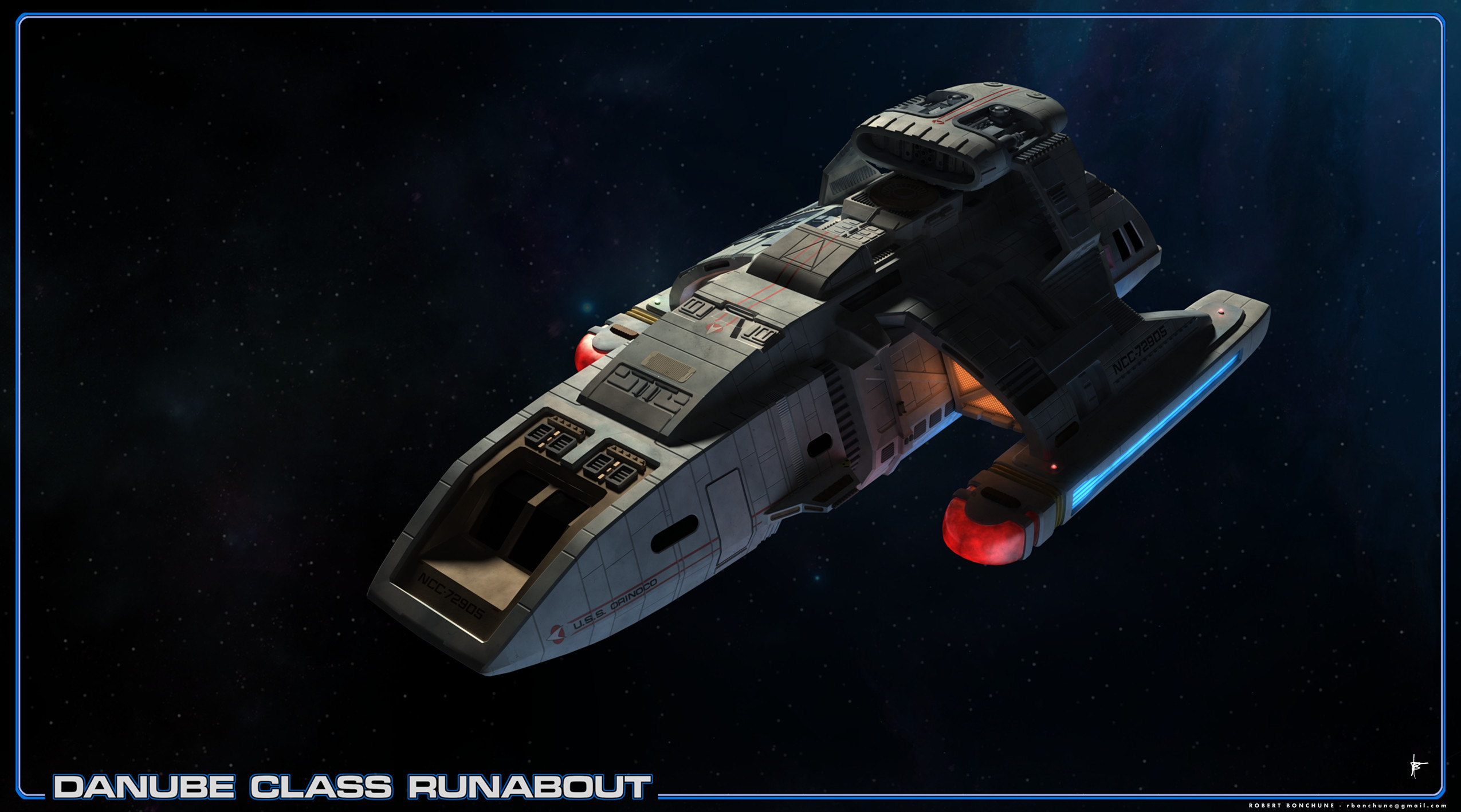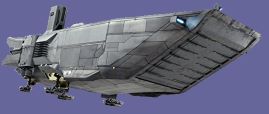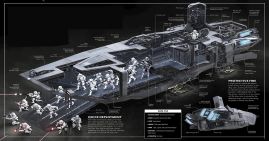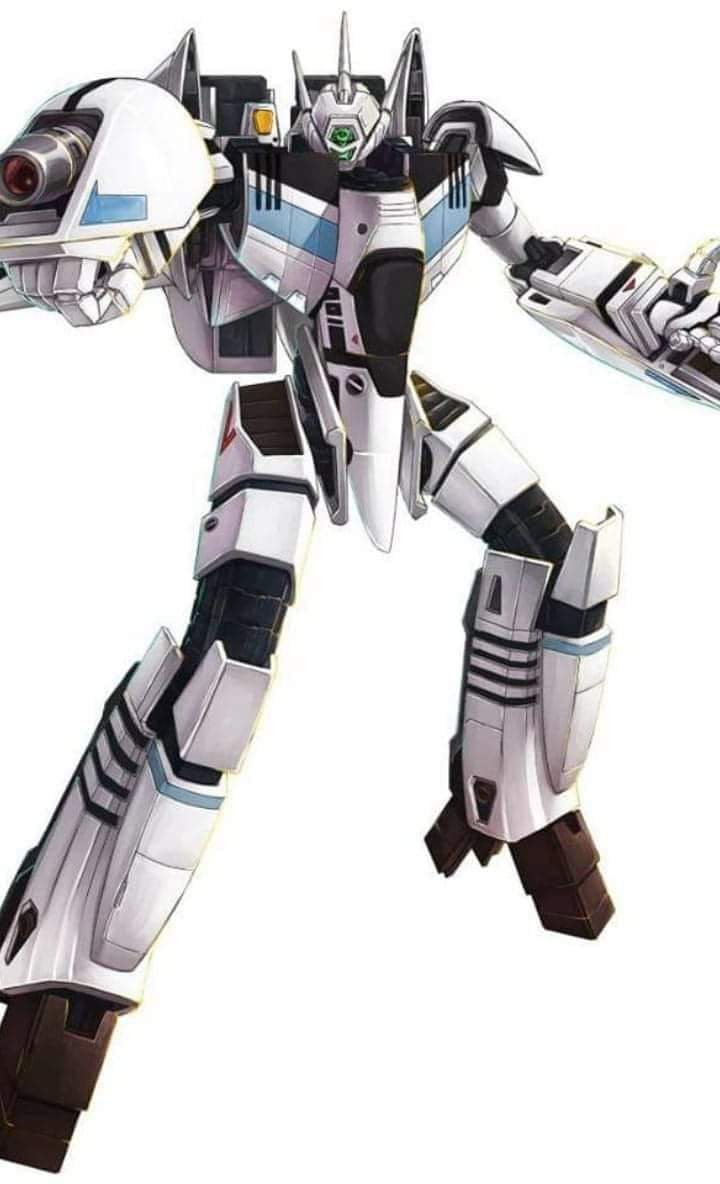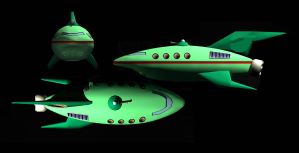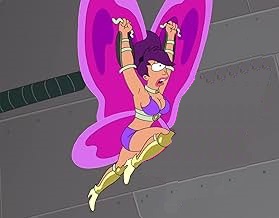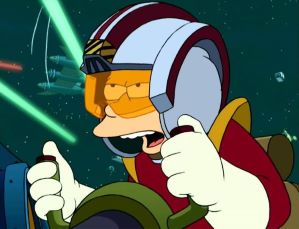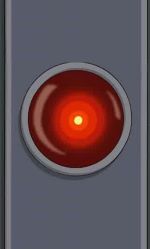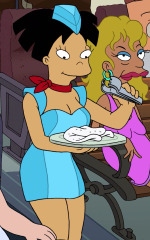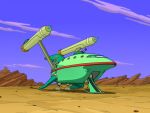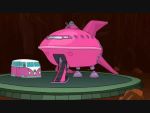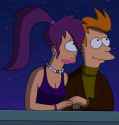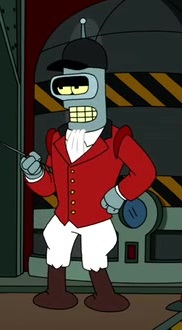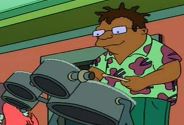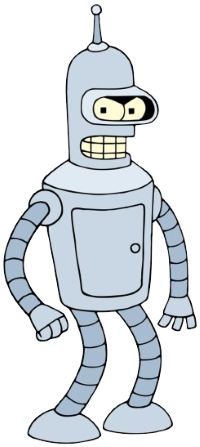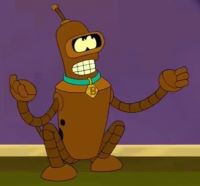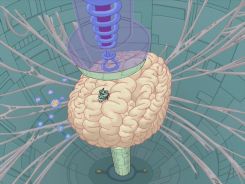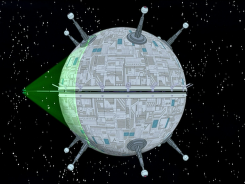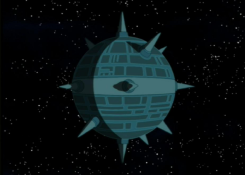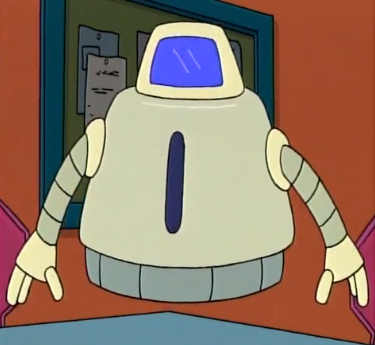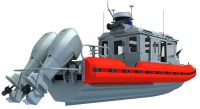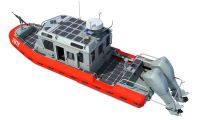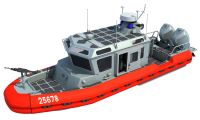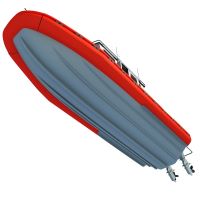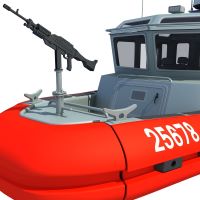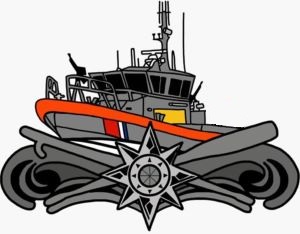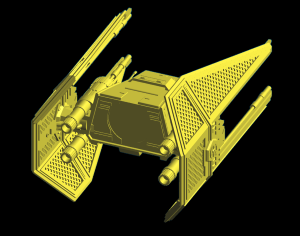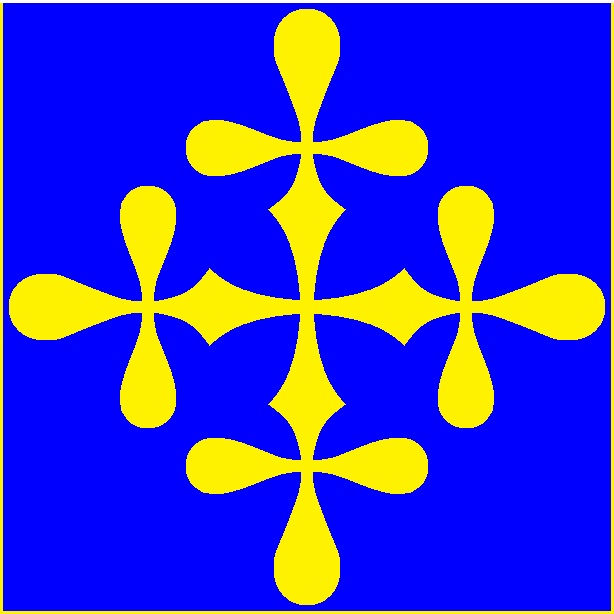 |  | |||||||||||||||||||||||||||||||||||||||||||||||||||||||||||||||||||||||||||||||||||||||||||||||||||||||||||||||||||||||||||||||||||||||||||||||||||||||||||||||||||||||||||||||||||||||||||||||||||||||||||||||||||||||||||||||||||||||||||||||||||||||||||||||||||||||||||||||||||||||||||||||||||||||||||||||||||||||||||||||||||||||||||||||||||||||||||
| The Astrolabs, of which there were nearly thirty thousand, are often mistaken by the casual observer for fueling stations. This is an understandable error as they were an adaptation of the fuel supply ships developed for the REF and which are still to be found Large numbers of these supply ships were manufactured to service the REF during the Robotecnh Wars (including the First), their job being to collect free hydrogen and other gases from space, process them, and store them until required. After the wars many of them became redundant and were thus available for other uses. Some were bought by commercial concerns to generate private liquid gas supplies or simply to provide storage facilities, and a number were allocated to the Research Council, which was short of funds and needed ships desperately. They were ideal for conversion into mobile research stations and could be modified fairly easily for this purpose. They had the added advantage of enjoying a high degree of independence, being naturally self-sufficient in terms of fuel supply. Whereas the original ships possessed a storage globe at either end, the Astrolabs retain only one, the other having been converted into living quarters able to accommodate up to two hundred personnel. Most of the central factory section was then reconstructed to provide laboratories and research facilities. Probably the most distinctive of the Astrolabs are those used for plotting radio emissions, which have been totally encased in a delicate tracery of antennae and receivers. They are an extraordinarily beautiful sight but are rarely seen as they operate far out on the Perimeter. The illustration shows one of the more usual units working in the rings of Saturn. This type can occasionally be seen by travelers around the galaxies. Motive power is provided by one of three nuclear piles coupled to fairly small ion drive engines for extended cruising potential rather than rapid acceleration. Only five of the Research Council's twenty-eight Astrolabs have been equipped with warp generators for interstellar research, including the three radio emission labs. Several of the ships are owned by the Galactic Information Bureau, and most of them feed data to the agency (whether they intend to or not). | ||||||||||||||||||||||||||||||||||||||||||||||||||||||||||||||||||||||||||||||||||||||||||||||||||||||||||||||||||||||||||||||||||||||||||||||||||||||||||||||||||||||||||||||||||||||||||||||||||||||||||||||||||||||||||||||||||||||||||||||||||||||||||||||||||||||||||||||||||||||||||||||||||||||||||||||||||||||||||||||||||||||||||||||||||||||||||||
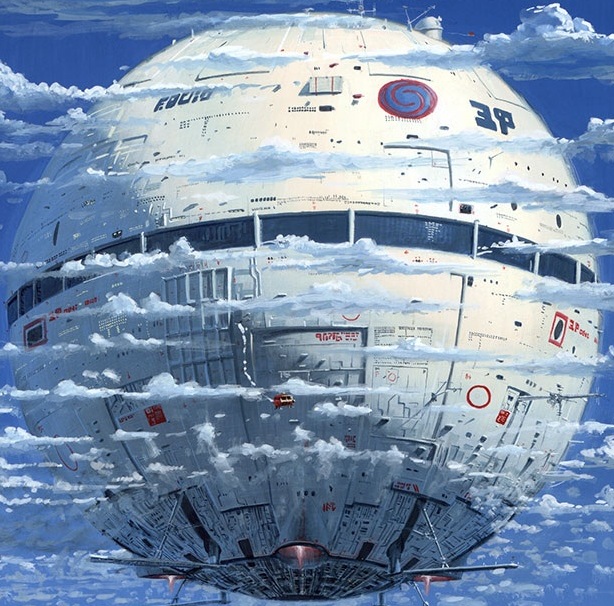 | Of Alpha. |  | ||||||||||||||||||||||||||||||||||||||||||||||||||||||||||||||||||||||||||||||||||||||||||||||||||||||||||||||||||||||||||||||||||||||||||||||||||||||||||||||||||||||||||||||||||||||||||||||||||||||||||||||||||||||||||||||||||||||||||||||||||||||||||||||||||||||||||||||||||||||||||||||||||||||||||||||||||||||||||||||||||||||||||||||||||||||||||
The first travelers to Alpha Centauri after the signing of the Trade Agreement in 2039 were scientific teams dispatched to work with their new colleagues in the exchange of knowledge which was to be so fruitful for both parties.
It is impossible to convey the overwhelming impact that these extraordinary constructions have on those who have seen them first hand. Situated in the vast, bleak desert region of Alpha One, they dominate the horizon until the curvature of the surface hides them from view. The closest known analogs are the cloud cities of the Rakatan Galaxy or Zalem on San Angeles, though neither comes anywhere near the awe inspired by these ships which are slightly smaller than the Rakatan examples when the pedestals are discounted, and in any case float continuously and therefore can't be seen in quite the same way. The Alpha Centurions themselves are uncertain of their exact age and origin as they have been there throughout recorded history and are shrouded in myth and legend. Three of these megalithic structures exist and are obviously inhabited, but there has never been any communications with their occupants as far as the Alpha Centurions are aware. Attempts to communicate have always failed, while landings on their upper surfaces have proved impossible as a protective field diverts any object making an approach. It is believed that the citizens of these strange edifices have never participated in the evolution of other lifeforms on the planet and have always remained within the perimeters of this otherwise lifeless region. The most remarkable and almost inconceivable aspects of the cities is that they are capable of flight. Every few years one or more of them rises silently from the huge pedestal on which it rests and moves through the thin atmosphere to a similar stone column in another area of the desert. These columns are scattered throughout the district, though never less than a thousand miles apart, and there seems no reason why one should differ from another. The Alpha scientists have tried to identify a pattern in these movements, but no consistencies can be found either in the journeys of the cities or in the siting of the columns. One thing which is certain is that they represent a level of technological knowledge that we can only guess at. Their means of propulsion, for example, obviously depends on a gravity-resist process of some kind but how the enormous power this would require is generated cannot be explained. It seems to be a natural law that conversion of energy must always result in a by-product, whether heat, light or converted matter. The by-product from such a level of energy must be correspondingly great, but what it is or where it goes is another question. Seismographic surveys have established that the columns consist of solid masonry, while their temperature, with that of the air surrounding the city, fails to show any untoward variation. Popular hypotheses abound, they are even, perhaps inevitably, regarded as the seats of deities and are a focus of a number of religious factions. Another view widely held is that the inhabitants are the ancestors of the humanoid races and are now quietly observing the evolution of their progeny. Only time, and probably a great deal of it, will tell whether we shall eventually be allowed contact with whatever intelligence has shaped these objects. Meanwhile they exist as awe-inspiring enigmas that have a profound and somewhat humbling effect on all who see them. Not surprisingly, of the visitors who have made the journey to the desert, a great number return to contemplate the City Ships again. A few attempts at forcible boarding have been made, with varying results. The Galactic Information Bureau's attempt was merely to paraglide in, land on the hull, and try to make contact with the occupants. The ship suddenly listed in a fashion that caused him to slide off- And right onto his butt. A private for profit concern attempted to force a boarding with guns drawn and cutting torches in hand- The entire team was vaporized. The UGC declared the ships off limits shortly after that fiasco, as the implications could have been war with an unknown enemy, possibly even Haydonites, and the ships 'seem' to understand this, though in what fashion remains to be seen. Current Legal Standing: The UGC's Pax Galactica says any empire other than the UGC is unlawful; However, the definition of "empire" is definitely multi-SYSTEM states, not merely multi-planet and much less multi-city states. Since the city ships seem to be oriented to each other, with basically no off-world travel (one ship was seen to transit around the local moon, in a seeming show of capability for the sake of observers), and have never been observed to have any kind of FTL capabilities (though it seems likely they do have such a system). With no reason to assume otherwise, the UGC is content to leave them be in general, with only a general watch to see if there is any significant change (which there hasn't been in over a thousand years, according to the Alpha Centurions' records). | ||||||||||||||||||||||||||||||||||||||||||||||||||||||||||||||||||||||||||||||||||||||||||||||||||||||||||||||||||||||||||||||||||||||||||||||||||||||||||||||||||||||||||||||||||||||||||||||||||||||||||||||||||||||||||||||||||||||||||||||||||||||||||||||||||||||||||||||||||||||||||||||||||||||||||||||||||||||||||||||||||||||||||||||||||||||||||||
 |  | |||||||||||||||||||||||||||||||||||||||||||||||||||||||||||||||||||||||||||||||||||||||||||||||||||||||||||||||||||||||||||||||||||||||||||||||||||||||||||||||||||||||||||||||||||||||||||||||||||||||||||||||||||||||||||||||||||||||||||||||||||||||||||||||||||||||||||||||||||||||||||||||||||||||||||||||||||||||||||||||||||||||||||||||||||||||||||
| The Lagunans built two of these signals disorientation ships, which caused the more modern, heavily automated Terran battlewagons to run amok and completely out of control until they were destroyed in the Sol System. How exactly The actual names of these vsls has never been determined, their crew size(s) can only be roughly guessed at the generally 300+/- range, and there may well be more of them out there in a forgotten anchorage, or in the hands of an unknown enemy. They have been called the DISORIENTATION SIGNAL-Class vsls for lack of a better name, and because it accurately describes their function. They have also been referred to as Transmitter Ships. Actually, not a single thing is known about these vsls, other than general specifications and what they do. Speculation has run amok about the ships, however. It is estimated, based on the best data the UGC can develop, that the ships possessed a thermal powerplant on the order of some 100 trillion terawatts, with a crew of between 100 and 1,000. The secondary explosions of the ship's powerplants failing tends to lead credence to this. As the ships made no apparent attempt to defend themselves once under direct attack, it is believed they may not have been armed; Certainly, the aforementioned secondary explosions would have erased any such evidence. What is known is that as the Laguna Wars began, the warships of Terra et el lost all self-control; The Ramming of the ACHILLES by the REMUS (and the death of her embarked troops) certainly lends credence to the dangers the Signals Disorientation Ships presented, an danger which has neither gone forgotten nor unlearned. Strategic Implications. The ships themselves appeared to be small by warships standards, roughly on par with an ADMIRALTY-Class Patrol Cutter, a disconcerting fact, since the kind of powerplant required (according to TDA/REF analysis) would have taken several times the amount of space available. The fact that the hulls were constructed in apparent secret is also troubling, though not as much so; Despite being several times the size of "average" unregistered (pirate) vsls, the simple fact that they were constructed is not nearly that surprising. It was mostly disconcerting that as much mat'eriel, most especially metals, could be collected without anyone the wiser, though comparing these ships to the massive city ships that slammed into Terra and having them utterly unknown gives much more perspective on the situation. Most importantly of all, though, the TDA and REF learned the critical lesson that the Landsraad League already knew all too well; Too much dependency on technology can be disastrous. For this reason, all UGC affiliated ships are now required to have auxiliary manual controls. While the ships WERE identical, they were not symmetrical; Along their port side were several objects, vaguely cylindrical in shape, placed vertical and side by side. Fighter pilots, who reported have a hard time keeping up with the ships, described them as fuel tanks, though this doesn't make sense as they were outside the hull, and therefore highly vulnerable to direct fire. The ships were indeed very fast, keeping up speeds as high as .2 of light when actively pursued, and fairly nimble, even going so far as to enter an asteroid field in their attempt to evade pursuit. The captains of the ships demonstrated some familiarity with REF and TDA tactics in this regard; Some of the fighter pilots reported that it reminded them of simulator training from the Battle Of Saturn during the FIRST ROBOTECH WAR Another effect is to renew interest in older ship designs, most especially the LG-223 STARRAKER-Class, though whether this goes anywhere or not is yet to be seen. | ||||||||||||||||||||||||||||||||||||||||||||||||||||||||||||||||||||||||||||||||||||||||||||||||||||||||||||||||||||||||||||||||||||||||||||||||||||||||||||||||||||||||||||||||||||||||||||||||||||||||||||||||||||||||||||||||||||||||||||||||||||||||||||||||||||||||||||||||||||||||||||||||||||||||||||||||||||||||||||||||||||||||||||||||||||||||||||
 |  | |||||||||||||||||||||||||||||||||||||||||||||||||||||||||||||||||||||||||||||||||||||||||||||||||||||||||||||||||||||||||||||||||||||||||||||||||||||||||||||||||||||||||||||||||||||||||||||||||||||||||||||||||||||||||||||||||||||||||||||||||||||||||||||||||||||||||||||||||||||||||||||||||||||||||||||||||||||||||||||||||||||||||||||||||||||||||||
Discovery In 2267, the CONSTELLATION-Class Batttleship BORTAS under the command of Commander Matt DECKER encountered massive destruction in system LIMA-370 during a routine patrol. All seven planets had been utterly destroyed. Proceeding to system LIMA-374 (stardate 4202.3), the ship found three intact planets, and a fourth in the process of breaking up. Orbiting the fourth planet was Object 1, firing a beam of pure antiprotons at the planet and consuming the planet's rubble. As the BORTAS approached, she was attacked by the planet killer. The ship's deflector shields were quickly overwhelmed by the onslaught, and the machine proved completely invulnerable to counterattack, because its hull was composed of pure neutronium. In addition, the machine projected a powerful dampening field, cutting off all communications with Spacy Command. Unable to continue the attack or escape, DECKER ordered the crew to evacuate to the third planet in the system, remaining onboard as the last man (in hopes of calling for re-inforcements). However, having finished consuming the fourth planet, the machine then turned towards the third planet. DECKER tried to retrieve his crew up, but the machine attacked again, destroying the shuttles. He could only watch helplessly as the machine consumed the planet below and killed his entire crew of 400 men and women. A short time later, the CONSTELLATION-Class ENTERPRISE received a faint and garbled distress signal. She entered the system and found her sister ship drifting and abandoned, with the captain the sole survivor aboard. Second Battle Of LIMA-374 As ENTERPRISE held alongside BORTAS, it was suddenly and swiftly attacked by Object 1. Although the ENTERPRISE was more maneuverable, the weapon was extremely fast and gaining on its target. In the first volley, the ENTERPRISE took heavy damage, with shields almost exhausted, engines and communications damaged, crew injured and killed, and even hull penetrated. The ENTERPRISE took the appropriate evasive action, then began a clever small-scale hit-and-run counter attack to stall Object 1 while repair parties aboard BORTAS effected partial repairs to the impulse engines and a single phaser bank. Fortunately Object 1 allowed both ships to escape- It apparently had a relatively simple and straightforward defensive computer program that only allowed it to engage single targets within a specific range, and resumed it's original intentions of consuming LIMA-374. What happened next is somewhat controversial; For reasons that will never be fully understood, Commander DECKER stole a Spacer Fighter and piloted it on a suicide course directly into Object 1's maw, where it was quickly destroyed. ENTERPRISE detected a small "dip" in the power output of Object 1- The fighter's explosion, however small, had in fact caused some minor damage to Object 1's insides. Based on this the decision to ram Object 1 with the remains of BORTAS and detonate literally everything she had- Even her missiles were rigged to detonate together after being bunkered down. Her Spacer fighter was even set up to fly into the maw slightly beforehand, firing all the way. the operation was a success, in that Object 1 shut down completely; However, due to the presence of the impenetrable neutronium hull, the hulk (or "corpse") of Object 1 was left intact, floating lifelessly in space. This has turned it into a scientific marvel and a minor tourist attraction. The researchers have determined that Object 1 once bristled with all sorts of "evil-looking weapons," but centuries of combat had taken their toll so that, by the time the BORTAS encountered it, only the superweapon itself remained. Some degree of evidence exists that Object 1 may have been used as an ancient race's last resort weapon against the Beorge; It was on a course that would have eventually carried it to Beorge space, had it not been intercepted. The remnants of Object 1 were too badly damaged to develop much out of to date, and most research on the hulk centers around trying to positively establish who built it, why, and when; Much suspicion has fell upon the Atorian Malcontents and the Syhith (the latter for no better reason than they refuse to even acknowledge the presence of the UGC). The device is so old, however, that most serious researchers believe if either of these groups ever had contact with the device, it was limited to trying to point it at their enemies. | ||||||||||||||||||||||||||||||||||||||||||||||||||||||||||||||||||||||||||||||||||||||||||||||||||||||||||||||||||||||||||||||||||||||||||||||||||||||||||||||||||||||||||||||||||||||||||||||||||||||||||||||||||||||||||||||||||||||||||||||||||||||||||||||||||||||||||||||||||||||||||||||||||||||||||||||||||||||||||||||||||||||||||||||||||||||||||||
 |  | |||||||||||||||||||||||||||||||||||||||||||||||||||||||||||||||||||||||||||||||||||||||||||||||||||||||||||||||||||||||||||||||||||||||||||||||||||||||||||||||||||||||||||||||||||||||||||||||||||||||||||||||||||||||||||||||||||||||||||||||||||||||||||||||||||||||||||||||||||||||||||||||||||||||||||||||||||||||||||||||||||||||||||||||||||||||||||
Objects 2 and 3 were detected by the Sedna Queen (an Interstellar Queen-Class transport) as she left the Sol System. #2 was the wreck with a wing/atmosphere engine left and a Baker F322 Banshee in her hold and #3 was the older wreck that 2 had collided (or possibly ollided) with. Frustrating
Note: In the image seen here is a smaller craft (lower and to the right). This is in fact the Banshee (and obsolete class of pre-Tiresian Empire fighter, possibly even Haydonite). Object 3 is in fact the grey collection of apparent junk to the left. The crafts are currently being held at "The Yard", a top-secret shipyard where recovered, discovered, or otherwise acquired objects of unknown origin are held for research. It is alleged that "The Yard" is not only not within the Azumption Galaxy, but in fact in another dimension. | ||||||||||||||||||||||||||||||||||||||||||||||||||||||||||||||||||||||||||||||||||||||||||||||||||||||||||||||||||||||||||||||||||||||||||||||||||||||||||||||||||||||||||||||||||||||||||||||||||||||||||||||||||||||||||||||||||||||||||||||||||||||||||||||||||||||||||||||||||||||||||||||||||||||||||||||||||||||||||||||||||||||||||||||||||||||||||||
 |  | |||||||||||||||||||||||||||||||||||||||||||||||||||||||||||||||||||||||||||||||||||||||||||||||||||||||||||||||||||||||||||||||||||||||||||||||||||||||||||||||||||||||||||||||||||||||||||||||||||||||||||||||||||||||||||||||||||||||||||||||||||||||||||||||||||||||||||||||||||||||||||||||||||||||||||||||||||||||||||||||||||||||||||||||||||||||||||
Early in 2088 a Perimeter Beacon in the Proxima system signaled the approach of an artificial object that refused to acknowledge requests for identification, and two security ships were dispatched to investigate. Within a few
Assistance was called for and when it arrived lines were attached and the craft towed into a stationary orbit round Proxima One. It was certainly a bizarre object, made more so by its prodigious size, and unlike any spacecraft ever seen. Scientific teams from all three systems set up temporary research stations to study it and to attempt communication with any passengers it may have had. When all attempts failed it was decided to force entry, upon which the craft was found to be entirely deserted. That it had been equipped for life forms of some kind was easily determined from the nature of the internal fittings and equipment, but whatever these beings were like, it is doubtful that they were humanoid. Although it has been possible to identify many of the craft's features, much remains a mystery even after nearly twenty years of study. It is known, for instance, that the basic power source was nuclear fission, and that the equipment operated on similar principles to that in current use. Also, the two massive spheres forming part of the hull contained plant life of some kind, as the presence of organic debris in them indicates. These spheres were fed with a rich oxygenated atmosphere distributed throughout the ship via a network of ducts. The implication is that this represented their required atmosphere and therefore that they were a carbon based lifeform like us. The hull itself appears to be organic in composition and is formed by an atrophied cellular structure. This suggests that the outer body of the ship was itself a living organism at some time. Whether this was before or during its function as a spacecraft has not been established. One further conclusion generally accepted by the investigating teams is that the entire structure was originally attached to something else. There is a number of projections with fittings of various kinds which appear to have no obvious function other than to connect with another body of similar construction. This view is reinforced by the fact that the hull carries no engines or any other possible source of motive power. If this is the case then the complete assembly must have been an awe inspiring sight, particularly as this portion would probably have been no more than a smaller appendage of the main body. | ||||||||||||||||||||||||||||||||||||||||||||||||||||||||||||||||||||||||||||||||||||||||||||||||||||||||||||||||||||||||||||||||||||||||||||||||||||||||||||||||||||||||||||||||||||||||||||||||||||||||||||||||||||||||||||||||||||||||||||||||||||||||||||||||||||||||||||||||||||||||||||||||||||||||||||||||||||||||||||||||||||||||||||||||||||||||||||
 |  | |||||||||||||||||||||||||||||||||||||||||||||||||||||||||||||||||||||||||||||||||||||||||||||||||||||||||||||||||||||||||||||||||||||||||||||||||||||||||||||||||||||||||||||||||||||||||||||||||||||||||||||||||||||||||||||||||||||||||||||||||||||||||||||||||||||||||||||||||||||||||||||||||||||||||||||||||||||||||||||||||||||||||||||||||||||||||||
| The UMBERTO was a battleship in the Terran Defense Forces launched no later than 2109. It took place in over a century of colonial conquest, and was decommissioned and placed in storage in the Braun UMBERTO was particularly noteworthy for her experimental EMP Pulse Cannons; These would in theory have disabled another vsl without significantly damaging her and with minimal injury to the crew. It was thought these would disable Tiresian warships; However, the Tiresians malcontents she was built to hunt down were never in a position to be targeted, and her cannons went untested in battle. Despite the limits of her service, UMBERTO did serve long and honorably, and even in her death throws continued to serve, her crew fired a full broadside of nuclear missiles into the city-ship killing her. | ||||||||||||||||||||||||||||||||||||||||||||||||||||||||||||||||||||||||||||||||||||||||||||||||||||||||||||||||||||||||||||||||||||||||||||||||||||||||||||||||||||||||||||||||||||||||||||||||||||||||||||||||||||||||||||||||||||||||||||||||||||||||||||||||||||||||||||||||||||||||||||||||||||||||||||||||||||||||||||||||||||||||||||||||||||||||||||
 |  | |||||||||||||||||||||||||||||||||||||||||||||||||||||||||||||||||||||||||||||||||||||||||||||||||||||||||||||||||||||||||||||||||||||||||||||||||||||||||||||||||||||||||||||||||||||||||||||||||||||||||||||||||||||||||||||||||||||||||||||||||||||||||||||||||||||||||||||||||||||||||||||||||||||||||||||||||||||||||||||||||||||||||||||||||||||||||||
Unfortunately, during Harcourt APSELEY'S ill-fated Great Rebellion at least one of these craft was stolen from the TDF dockyard (where she was under repair) and was one of at least two craft used to bomb the Terran Authority Central Administration Complex in the former Basse-Kotto prefecture of the Central African Republic. Because of the poor publicity surrounding this incident (the death of millions of people in only a few minutes generally sours relations), the UGC refused even to allow the craft to compete for a new generation of UGC light-to-medium strike craft, and in fact the TDF decommissioned their fleet and ordered them scrapped immediately. There are currently 04 surviving examples; Two are static displays (one at the Kyhron KRAVSHEEVA Militry Museum/UGS BREETIA TULL, Terra, the other the Henry GLOVAL Militry Museum, Fantoma/Tirol), one is a "research unit" (Lackland Station), and the last is reported to be at "The Yard" in a flight-ready condition (her existence is public knowledge, but her disposition is listed as "classified"). For all the sheer stark naked horror of the Striker, they are surprisingly vulnerable to counter-strike; They had minimal armor, no shield, and only very short-range laser batteries for defense (the average infantryman carried heavier firepower). They were extremely long-range and high-speed bombers, but that was their only defense, and they still were no faster than a fighter under the best of circumstances. There is some talk about giving the Striker time for the scars of the Great Rebellion to wear off, then some minimal cosmetic changes and put them into service. | ||||||||||||||||||||||||||||||||||||||||||||||||||||||||||||||||||||||||||||||||||||||||||||||||||||||||||||||||||||||||||||||||||||||||||||||||||||||||||||||||||||||||||||||||||||||||||||||||||||||||||||||||||||||||||||||||||||||||||||||||||||||||||||||||||||||||||||||||||||||||||||||||||||||||||||||||||||||||||||||||||||||||||||||||||||||||||||
 |  | |||||||||||||||||||||||||||||||||||||||||||||||||||||||||||||||||||||||||||||||||||||||||||||||||||||||||||||||||||||||||||||||||||||||||||||||||||||||||||||||||||||||||||||||||||||||||||||||||||||||||||||||||||||||||||||||||||||||||||||||||||||||||||||||||||||||||||||||||||||||||||||||||||||||||||||||||||||||||||||||||||||||||||||||||||||||||||
| The monstrous 46 mile, 3,182 foot, 11.9 inch Nomad Industrial Complex (NIC) are multi-purpose manufacturing facility built by the UGC and moved to an outer systems. Nomad Industries constructed this legacy before it folded. As part of Nomad's bankruptcy the blueprints and technical specifications for the Nomad Industrial Complex was offered on auction. The winning bid was submitted by the UGC (the exact amount was never disclosed, but is rumored to have been 185 billion credits). The Council then proceeded to build the facilities for their own use, contracting out operation and maintenance to various manufacturers on a low bid basis, who are then at their leisure to use the facilities at their own cost. When the Council determines a need for a colony in some system, a Nomad may be manufactured and placed in the system as part of the preparation. The facilities are the property of the Council, but is used by the colony in the way that best supports their needs. Most use them as factories and mining facilities, using them to build new mining and factory ships for system use, but this is not an absolute by any measure. One system used them to build Skybases, with no explanation ever given. The REF Spacy has a small fleet of 8 of these ships for shipyards strictly for Spacy and Patrol ships, but even those are operated by civilian contractors. One is part of the Khyron Kravsherra Militry Academy for training purposes. The Galactic Information Bureau also has three of these ships at "the yard." used to maintain the ships there. Around 200 of these are floating around in various private hands. Legally the blueprints are UGC property, but a licence to build such a facilitiy by private concerns are easily obtained, the Council can only charge actual cost to government (about 2 man hours at minimum wage). | ||||||||||||||||||||||||||||||||||||||||||||||||||||||||||||||||||||||||||||||||||||||||||||||||||||||||||||||||||||||||||||||||||||||||||||||||||||||||||||||||||||||||||||||||||||||||||||||||||||||||||||||||||||||||||||||||||||||||||||||||||||||||||||||||||||||||||||||||||||||||||||||||||||||||||||||||||||||||||||||||||||||||||||||||||||||||||||
 |  | |||||||||||||||||||||||||||||||||||||||||||||||||||||||||||||||||||||||||||||||||||||||||||||||||||||||||||||||||||||||||||||||||||||||||||||||||||||||||||||||||||||||||||||||||||||||||||||||||||||||||||||||||||||||||||||||||||||||||||||||||||||||||||||||||||||||||||||||||||||||||||||||||||||||||||||||||||||||||||||||||||||||||||||||||||||||||||
The LG-223 STARRAKER-Class was a highly successful (and therefore eventually famous) class of light gunship, entering service in 2103 as light gunships, lightly armed but extremely fast and agile in both space and atmosphere; However, they had been replaced by more efficient, computer-linked ships by 2150. The ship had a displacement of 2 million tons, a beam of 2,000 feet (609.6 meters), and a clearance of 150 feet (45.72 meters), tremendously fast but lightly armored, and very agile in both space and atmosphere. They represented the final development of strictly manual controlled ships when they were built. During the Laguna War, the last ship to lift off from the Braun Group was Commander Bernd GERLING'S flagship (her name is lost to antiquity), the sole surviving example of the LG-223 when she was returned to active duty 70 years after original construction, and so selected because her modest proportions would not give it away as the flagship. GERLING'S disappointment that no further examples had been found in the Braun Group graveyards was intense, as he was eventually was forced to transferred his flag to the interceptor-carrier LYONS, a retrofitted computer controlled ship. Although heavily damaged during the battle with the Laguna cityships as they attempted to break out of the Earth blockade, she was later salvaged after the final defeat of the Laguna's armed forces and after restoration was given a place of honor in the Mars orbital Starship Museum, albeit in static condition; Though she has a drive system, it's just barely enough to keep her moving along, thus preventing entry into the Martian atmosphere and total loss. In the wake of the Laguna Wars, the surviving STARRAKER-Class, dubbed the BERND GERLING, has been the site of intermittent research to discover her secrets of construction, as the blueprints were utterly lost. There has been talk of resurrecting the class as a corvette or even possibly a destroyer, though the money to do so seems never to materialize. Of interest to the more tech head types, the "Berger Gravity Resist" was a crude early version of Terra's cloning of T'sentraedi anti-gravity technology by Dr Hans BERGER that was eventually abandoned in favor of the much more efficient Ferhan grav pods. The blueprints for Berger Gravity Resist still exists, though none have been made in several centuries, and even the tools to do so can not be found in any one place so far as anyone currently knows. The "DeVass Warp Generator" was essentially a miniature 'black hole' generator developed in the 2000's by Dr Henri DEVASS as a simplified version of a standard space fold system. The hope was that by developing such a system, more of the galactic community could participate in said community; However, the system proved insufficiently stable, and was abandoned. Neither technology is now in service, but the STARRAKER-Class, if it is resurrected, will be fitted with newer, comparable technologies. | ||||||||||||||||||||||||||||||||||||||||||||||||||||||||||||||||||||||||||||||||||||||||||||||||||||||||||||||||||||||||||||||||||||||||||||||||||||||||||||||||||||||||||||||||||||||||||||||||||||||||||||||||||||||||||||||||||||||||||||||||||||||||||||||||||||||||||||||||||||||||||||||||||||||||||||||||||||||||||||||||||||||||||||||||||||||||||||
 |  | |||||||||||||||||||||||||||||||||||||||||||||||||||||||||||||||||||||||||||||||||||||||||||||||||||||||||||||||||||||||||||||||||||||||||||||||||||||||||||||||||||||||||||||||||||||||||||||||||||||||||||||||||||||||||||||||||||||||||||||||||||||||||||||||||||||||||||||||||||||||||||||||||||||||||||||||||||||||||||||||||||||||||||||||||||||||||||
Probably 80% of these constructions were fitted out as supply and repair depots, and within a few years constituted a wide and efficient interstellar system. By the closing years of the war any damaged or depleted ship could find refuge within a fairly short period of time. Although very vulnerable to attack due to their lack of any effective defense system Skybases could be replaced quickly and economically, and were a welcome sight to many a ship's captain. Those not equipped as maintenance depots provided facilities for rest centers, hospitals and regional command posts, and were home at one time or another to practically every Spacer on active service. Their physical similarity to an artefact from an antiquated communication system led to their widely used nickname of 'Letterboxes'. The first Skybases were constructed of real metals and probably no more than two or three of these still exist. There is certainly one example in perfect working order in the Galactic War Museum off Jupiter and another, rather more dilapidated, in the Centaurian system. These models were soon replaced by those formed from the more familiar Plastalloy in the search for greater durability. All bases except those near habitable worlds or with specialized functions were without human personnel and relied entirely upon a crew of Mechtecks or Roboserves. There was one amusing incident reported in which a meteorite strike had damaged the central control of a Skybase and a patrol ship was unable to dock due to the entry being obstructed by the entire complement of Mechtecks executing a slow waltz. After the war a huge number of Skybases was dismantled for materials, which were by then in short supply. Nevertheless, there are many still of operational status, particularly in the region of the trade perimeter, and a large number which have been sold and adapted for local commercial use. The illustration depicts a prewar, realmetal Skybase which differs from later versions only in that power was drawn from solar collectors situated in the side facing the nearest sun, whereas subsequent bases were fitted with all round bands of highly sensitive Photomax Transducers. Incidentally the illustration also shows Panther pursuit ships of the Federal Law Enforcement Authority (or 'The Flea' to use its popular name) and an Avery C14 Transporter, taking on fuel, both models now long obsolete. Current Status: The SkyBase is still common enough that no UGC citizen will go their entire lives without being aboard one, but the UGC decommissioned the program nearly 900 years ago, meaning no more will be built with Council funding (they can still be built without Council funding). The Council continues operational support funding for SkyBases built before that point. The single largest user of the design is the Galactic Information Bureau who have over a thousand at "the yard." Officially, the GIB funds the construction in-house, but the reality is all GIB funding is controlled by the Council making the GIB's Skybases the last funded ones. | ||||||||||||||||||||||||||||||||||||||||||||||||||||||||||||||||||||||||||||||||||||||||||||||||||||||||||||||||||||||||||||||||||||||||||||||||||||||||||||||||||||||||||||||||||||||||||||||||||||||||||||||||||||||||||||||||||||||||||||||||||||||||||||||||||||||||||||||||||||||||||||||||||||||||||||||||||||||||||||||||||||||||||||||||||||||||||||
  | ||||||||||||||||||||||||||||||||||||||||||||||||||||||||||||||||||||||||||||||||||||||||||||||||||||||||||||||||||||||||||||||||||||||||||||||||||||||||||||||||||||||||||||||||||||||||||||||||||||||||||||||||||||||||||||||||||||||||||||||||||||||||||||||||||||||||||||||||||||||||||||||||||||||||||||||||||||||||||||||||||||||||||||||||||||||||||||
It is thought that Epsilon Queen came out of spacefold too close to a cosmic string, which sliced open her ventral aspect wide open- "Like a hot knife through butter." Salvage of the Epsilon Queen proved daunting; The accident had actually cut open her reactor piling, exposing this to hard vacuum (along with the half-dozen crewmen who were on watch at the time of the accident). Before anything else could be done, this had to be stabilized. Because it was exposed to hard vacuum, the reactor was bleeding excess radiation into space, preventing runaway. However, this also meant that the ship was being painted (soaked) in radiation. To stabilize the reactor, it was simply buried in cement, thus preventing much of anything happening. An series of electromagnets were run over the effected area to remove as much material as possible; Then a specially built neocell bag was then constructed, a "body sock" that the ship was literally shoved into; It was ill-fitting, but didn't have to fit properly. She was then drug into the light, and the neocell set. This provided a temporary shelter, over which water was sprayed by the tons. As it froze, it sealed the ship, giving the salvers space to work. Once they could they started spot welding any loose girders, etc., in place, making the ship safe to move. At this point the reactor was removed and permanently sealed; It was eventually dumped on an uninhabitable world (and buried under a million tons of rock for added measure) while the hull was hauled off to a decontamination yard, where she spent the next 25 years being cleaned. Once safe for handling, she was broken down and scrapped; The bodies that could be recovered and identified were returned to their families, but those that couldn't be identified were buried in a special cemetery reserved specifically for this accident (named The Epsilon Queen Memorial Garden; an actual garden was planted in the cemetery dedicated to the victims of the accident). Survivors: One 20-year-old female actually did survive the accident. Most of those on board were killed instantly, but many died as a result of radiation sickness, but Amber LYHINT survived because (oddly) she was locked up in the ship's brig (which doubled as a dry foods locker). The brig happened to be shielded against radiation (some contents do not react well to radiation of any sort). She suffered some vacuum sickness, but made a full recovery latter on. | ||||||||||||||||||||||||||||||||||||||||||||||||||||||||||||||||||||||||||||||||||||||||||||||||||||||||||||||||||||||||||||||||||||||||||||||||||||||||||||||||||||||||||||||||||||||||||||||||||||||||||||||||||||||||||||||||||||||||||||||||||||||||||||||||||||||||||||||||||||||||||||||||||||||||||||||||||||||||||||||||||||||||||||||||||||||||||||
 |  | |||||||||||||||||||||||||||||||||||||||||||||||||||||||||||||||||||||||||||||||||||||||||||||||||||||||||||||||||||||||||||||||||||||||||||||||||||||||||||||||||||||||||||||||||||||||||||||||||||||||||||||||||||||||||||||||||||||||||||||||||||||||||||||||||||||||||||||||||||||||||||||||||||||||||||||||||||||||||||||||||||||||||||||||||||||||||||
 The UGC knows big. It understands BIG. It does BIG. The so called "Basestar-Class" throw's "big" into disarray. The UGC knows big. It understands BIG. It does BIG. The so called "Basestar-Class" throw's "big" into disarray.The first of these massive 100 mile long battle fortresses was found in late 2491 by the Galactic Information Bureau 'survey ship' Evening Tea in the Paroma Sector, adrift and clearly in distress. There were no signs of life; In fact, the ship was soon enough discovered to have been abandoned over 1 million years before- Making her probably a Haydonite construct. A boarding team was dispatched to examine her interior; There wasn't much left to find. The computer core had long ago rotted to nothing, as had much of her works. The remains were towed to "The Yard" and for the time being forgotten; There were dozens of other candidates for study in far better shape. Then a second ship turned up, in somewhat better shape- Enough that she could, at least in theory, be inspected to determine how she was arranged. But then a third and fourth ship turned up at virtually the same time; The third was in fairly good shape. The fourth was operational. She was sailing under her own power, but without a crew. These three were taken back to the Yard as well to be studied as carefully as possible. All three showed they, two, had been abandoned, though the fourth one appears to have been carefully and thoughtfully abandoned, as if her crew had intended to return later- And later never came. The planet over which she was circling was inspected, and some artifacts were recovered but not enough to make any significant headway. It was very clear the crew had NOT abandoned ship simply by transferring down to the planet- At least some degree of survival equipment would have been found in such a case. Only minor artifacts, and most of this trash at that, was located. It's been speculated by some that perhaps she was a time capsule of some sort, intentionally abandoned to be found- Certainly, the crumb trail lead to her. Another theory is that these were the ships the Haydonites used in their trans-dimensional travels to our universe, and as they no longer became necessary they were stripped of whatever was onboard and abandoned- The first ship was clearly involved in a great deal of violence, the other three had lesser signs, as if perhaps the first one was never meant to make the transit but had managed to escape nonetheless. The Haydonite's odd language made deciphering the computer core's contents impossible, and very little else has been gleaned- The systems that were identified were all of known construct, and only the framing was new- One hundred miles of "new" and "impossible" especially in what was clearly a vsl of militry applications. The pure size of the ships is shocking enough, but the applications, and more importantly implications, of such a huge weapons platform has actually scared hardened UGC scientists; Even Dr SHELDON was called in to work on this (mistrust of his discretion notwithstanding). It was decades later that the ship was determined to be of Kobolese ancestry, Cylon Civil War era ships that had escaped from the Colonies, the first being one that was too badly damaged to go any further and was probably lucky to have made it as far as she did, the second and third having escaped but then were stripped of their useful equipment to keep the fourth running. The assessment that the fourth was deliberately abandoned with intention to return turned out to be exactly correct; The Cylons had in fact abandoned the ship with the intention to return. A scout party was sent to Kobol to test the Kobolese willingness to allow the Cylons to return, when the scouts discovered a massive civil war raging. The Cylons loaded up into smaller shuttles and other ships, racing to the colonies to quell the civil war, but as that took decades they forgot to go back for their ship. Backtracing the course of the ships actually led to the Kobolese Royal Empire, which probably would never have happened otherwise (being within the pocket of the Dahist Galaxy where it is, no one would have bothered to look there). | ||||||||||||||||||||||||||||||||||||||||||||||||||||||||||||||||||||||||||||||||||||||||||||||||||||||||||||||||||||||||||||||||||||||||||||||||||||||||||||||||||||||||||||||||||||||||||||||||||||||||||||||||||||||||||||||||||||||||||||||||||||||||||||||||||||||||||||||||||||||||||||||||||||||||||||||||||||||||||||||||||||||||||||||||||||||||||||
 |  | |||||||||||||||||||||||||||||||||||||||||||||||||||||||||||||||||||||||||||||||||||||||||||||||||||||||||||||||||||||||||||||||||||||||||||||||||||||||||||||||||||||||||||||||||||||||||||||||||||||||||||||||||||||||||||||||||||||||||||||||||||||||||||||||||||||||||||||||||||||||||||||||||||||||||||||||||||||||||||||||||||||||||||||||||||||||||||
A few attempts were made to reconstruct her in her original form, but all such ships suffered the same terminal problem; The essentially triple-hull design was far too flimsy for the metals and struts to support. A UGC engineer suggested building her as a uni-hull with the dome section being semi-independent. This idea was tried and passed all but one major test; The religious test. The Kobolese believed it was a sacred duty to re-create Cloud Nine (though they can't say why exactly, they don't even really know), and the finished design does NOT match that of the original (of which many pictures remained). The Kobolese God Emperor have consistently declared the design to be not in accordance with scripture, and while they can be built and used, they are NOT the sacred design, and may not carry that title. The Cloud-Class however did influence the Olympic-Class as well as other ships, both those sponsored by the UGC and others. The only known current Cloud-Class ships are the colony of Void, itself located in a space void, and is an extremely upper-crust colony; "Mere" scullery workers come from the same stock that, in other colonies, would produce trust fund babies. A Supra Cloud-Class, the Void herself, centers the colony, while dozens of these surround her like fiefdoms orbiting a king's court. | ||||||||||||||||||||||||||||||||||||||||||||||||||||||||||||||||||||||||||||||||||||||||||||||||||||||||||||||||||||||||||||||||||||||||||||||||||||||||||||||||||||||||||||||||||||||||||||||||||||||||||||||||||||||||||||||||||||||||||||||||||||||||||||||||||||||||||||||||||||||||||||||||||||||||||||||||||||||||||||||||||||||||||||||||||||||||||||
 |  | |||||||||||||||||||||||||||||||||||||||||||||||||||||||||||||||||||||||||||||||||||||||||||||||||||||||||||||||||||||||||||||||||||||||||||||||||||||||||||||||||||||||||||||||||||||||||||||||||||||||||||||||||||||||||||||||||||||||||||||||||||||||||||||||||||||||||||||||||||||||||||||||||||||||||||||||||||||||||||||||||||||||||||||||||||||||||||
| A ship from an unknown sector of space; Where she was from and what should happen now that "they" know of the UGC are questions that could not remain unanswered. Nothing is known about this ship except that she entered into UGC space without transmitting so much as a "Fuck you" before passing through. She's clearly NOT from the UGC and was acting under apparent intelligent control. She measured about 2,500' and was traveling at FTL Factor 8, but not in a straight line (a first for the UGC). Strategic Implications. The ship was clearly built by an organization with a SIGNIFICANT technology base; Her size also means they have a significant industrial base. Worse still, the UGC didn't know who they are. Commander Mo MIKISS, one of the most experienced and respected operational officers in the Spacy, was selected to command a mission to determine who this was and from where they'd come. This would eventually result in the discovery of the Phalan Empire. While that empire per se was eventually annexed, it showed how easily an empire could exist in the UGC's own back yards unknown and undiscoverable, a fact that would repeat a few decades later with the Kobolese Empire. Img by Peter ELSON. | 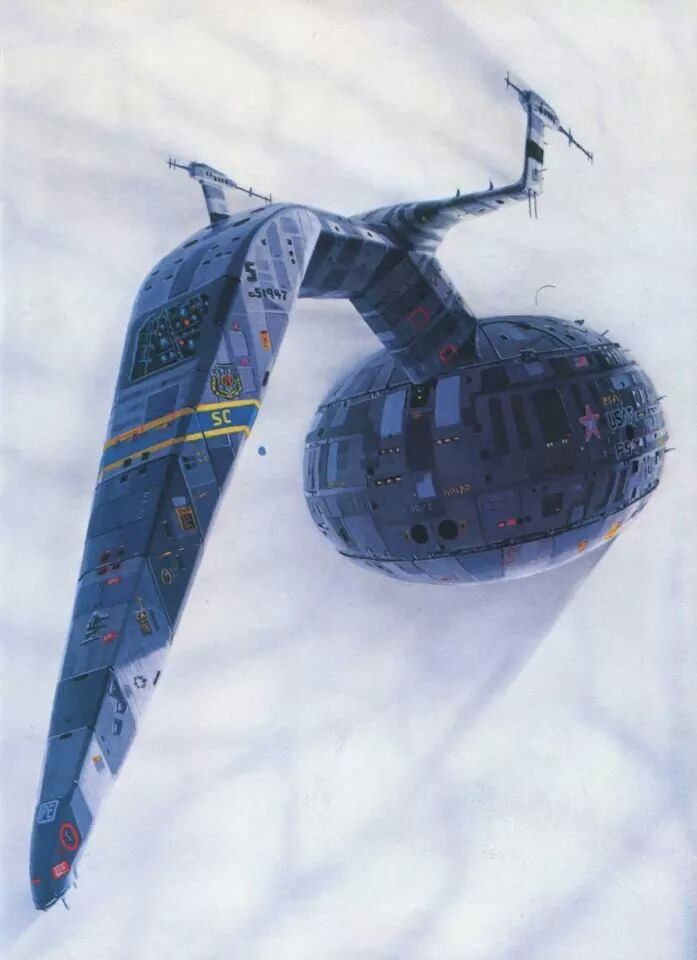 | |||||||||||||||||||||||||||||||||||||||||||||||||||||||||||||||||||||||||||||||||||||||||||||||||||||||||||||||||||||||||||||||||||||||||||||||||||||||||||||||||||||||||||||||||||||||||||||||||||||||||||||||||||||||||||||||||||||||||||||||||||||||||||||||||||||||||||||||||||||||||||||||||||||||||||||||||||||||||||||||||||||||||||||||||||||||||||
 |  | |||||||||||||||||||||||||||||||||||||||||||||||||||||||||||||||||||||||||||||||||||||||||||||||||||||||||||||||||||||||||||||||||||||||||||||||||||||||||||||||||||||||||||||||||||||||||||||||||||||||||||||||||||||||||||||||||||||||||||||||||||||||||||||||||||||||||||||||||||||||||||||||||||||||||||||||||||||||||||||||||||||||||||||||||||||||||||
IXS Enterprise was popularized after a series of media outlets reported on the conceptual artwork done by Dutch artist Mark RADEMAKER in collaboration with NASA. The energy required to power the warp drive according to WHITE was approximately the negative (negative energy is required for the Alcubierre drive concept to function) mass-energy equivalence of Voyager 1, which has a mass of 1,544 pound (about 3/4 ton). Using E=mc2, 1,544 pound of mass is about -17.5 million gigawatt hour (15,058 megatons). The ship had two thick outer rings (to reduce required energy) that generate the warp field, a contraction of space ahead, and expansion of space behind it. The space inside the rings was optimized to fit more space for cargo, crew and equipment. Enterprise was actually launched many years before it was announced; In fact, she was commissioned, in secret, in the 1980's, with her unmanned shakedown superluminal cruise 18 December, 1983 as a Terra/Pluto transit, then an unmanned Sol/Sirius (the Dog Star) transit in 1984; The successful return of Enterprise from that trip resulted in a second, manned, expedition later the same year. By luck alone, Enterprise's arrivals at Sirius went unnoticed, which is quite fortunate, for the during the second mission an object 19,000 feet long was observed moving along at 3,500 mph (based on bearing/distance indications on Enterprise's radar). This was not in and of itself particularly interesting, until the "asteroid" made a total 90 degrees course change (the advance and transfer being less than 10,000 feet). This was Terra's first indication of the true nature of their neighbors- A NUPETIET VERNITZS-Class T'sentraedi Flagship. IXS; "Interstellar Experimental Ship." | ||||||||||||||||||||||||||||||||||||||||||||||||||||||||||||||||||||||||||||||||||||||||||||||||||||||||||||||||||||||||||||||||||||||||||||||||||||||||||||||||||||||||||||||||||||||||||||||||||||||||||||||||||||||||||||||||||||||||||||||||||||||||||||||||||||||||||||||||||||||||||||||||||||||||||||||||||||||||||||||||||||||||||||||||||||||||||||
 |  | |||||||||||||||||||||||||||||||||||||||||||||||||||||||||||||||||||||||||||||||||||||||||||||||||||||||||||||||||||||||||||||||||||||||||||||||||||||||||||||||||||||||||||||||||||||||||||||||||||||||||||||||||||||||||||||||||||||||||||||||||||||||||||||||||||||||||||||||||||||||||||||||||||||||||||||||||||||||||||||||||||||||||||||||||||||||||||
The 'crew' consisted of Ben CRANDALL, 12 years of age, Wolfgang MULLER, 13 years of age, and Darren WOODS, 12 years of age. If it should be discovered this vsl ever actually existed, the crew (CRANDALL, MULLER, and WOODS) might be charged with various criminal acts (including unauthorized flying of an aircraft over a residential area, operating an unlicensed spacecraft, etc.) or they might be rewarded. It's hard to know. To date, these persons names have been recorded, yet they haven't been be located. Update; While the craft itself has been located in a badly deteriorated state, the crew has undoubtable passed away by now. The remnants of the craft revealed only limited information, but critically did reveal how the force field was created. | ||||||||||||||||||||||||||||||||||||||||||||||||||||||||||||||||||||||||||||||||||||||||||||||||||||||||||||||||||||||||||||||||||||||||||||||||||||||||||||||||||||||||||||||||||||||||||||||||||||||||||||||||||||||||||||||||||||||||||||||||||||||||||||||||||||||||||||||||||||||||||||||||||||||||||||||||||||||||||||||||||||||||||||||||||||||||||||
 |  | |||||||||||||||||||||||||||||||||||||||||||||||||||||||||||||||||||||||||||||||||||||||||||||||||||||||||||||||||||||||||||||||||||||||||||||||||||||||||||||||||||||||||||||||||||||||||||||||||||||||||||||||||||||||||||||||||||||||||||||||||||||||||||||||||||||||||||||||||||||||||||||||||||||||||||||||||||||||||||||||||||||||||||||||||||||||||||
During the Remulous Occupation, the Federate shipyards were restricted to manufacturing parts for various ships, with only occasional shipbuilding; The equipment had atrophied over the course of 3 centuries. While the United Galaxies COUNCIL invested heavily into rebuilding the shipyards, the Spaceway Patrol And Enforcement Services ("the Patrol") refused to issue the various certificates needed to begin building the ships themselves; The Federate Reconstruction- Spaceways Office liaison, Rear Admiral (lower) Jerhick DEMHAAL put it rather bluntly- "Build a boat before you try to build a ship." To this end, the Federate shipyards went back to the fundamental basis of the Federate's ships, taking the design of the first "space fleet" and building up from those. Amongst other things, the new concept, being built from newer alloys and MUCH more powerful powerplants and drive systems, allowed what had in the past been a ship generally restricted to gravitational anchoring to actually soft-land as easily as any shuttlecraft, while carrying a shuttle on-board (though only ONE, and not the potentially dozens of ships of yore). To save costs, the designers used older, simpler ship lines, with lots of simple rounded edges rather than the later designs with their gracefully rounded edges. Two of these ships were accepted each in the UGC Spacy and Patrol for testing and evaluation purposes; Both found the ships to be solid, steady designs, but unexceptional and unsuitable for any extended combat operations, being too slow to intercept smugglers, too lightly armed and armored for escort purposes, and too large for the passenger size for Assault Shuttles. The Spacy did find that they "could" be useful for routine patrol and as courier and VIP transport (provided there was every reason to expect there wouldn't be combat), but the ship-starved Patrol reported they couldn't be used in any significant fashion; Both reported "difficulties" in training crews to understand and effectively utilize the "alien" technologies (especially the powerplant) involved. Despite the difficulties, RA (u) DEMHAAL did sign off on the development of larger vsls; She used an actual stylus/pen to sign off on the Rama-Class as having "successfully completed sea trial" on a hard copy laid over a signature pad (a rare honor indeed, the original hard copy, with her actual hand-written signature, now sits in a Federate Interplanetary vault as a "historic artifact" accessible only rarely, to specially authorized people). Powerplant DDR-453 Anti-Matter powerplant; Lifespan is 2 years. Drive System Pl/M Impulse Drive. Warp Drive UPSY Type XXII; Output approximately 12.75B gigawatts. Complement Crew Enlisted: 20 Officers: 3 Passengers Up to 30 Marines and an armored vehicle, or 50 Marines. Current Status There is now only one of these ships left, SS Dumont, which is kept as museum ship and as the corporate offices of Federate Interplanetary. | ||||||||||||||||||||||||||||||||||||||||||||||||||||||||||||||||||||||||||||||||||||||||||||||||||||||||||||||||||||||||||||||||||||||||||||||||||||||||||||||||||||||||||||||||||||||||||||||||||||||||||||||||||||||||||||||||||||||||||||||||||||||||||||||||||||||||||||||||||||||||||||||||||||||||||||||||||||||||||||||||||||||||||||||||||||||||||||
 | Heavy Cruiser. |  | ||||||||||||||||||||||||||||||||||||||||||||||||||||||||||||||||||||||||||||||||||||||||||||||||||||||||||||||||||||||||||||||||||||||||||||||||||||||||||||||||||||||||||||||||||||||||||||||||||||||||||||||||||||||||||||||||||||||||||||||||||||||||||||||||||||||||||||||||||||||||||||||||||||||||||||||||||||||||||||||||||||||||||||||||||||||||||
| When the UGC annexed the Remulous Homogeny and Clingohn Empire, a first order of business was 'liberating' the defunct Federate. The second order of business was pacifying the three former empires; Easier said than One step in that process was rebuilding the Federate economy; Having essentially been vassal states to the Clingohn Empire and slave states to the Remulous Homogeny, rebuilding their economy was a daunting challenge; Which designs were Federate, which were the property of their occupier states? Splitting these distinctions was much easier said than done, especially for "derivative" technologies. Into the equation came a salvation of sorts: The Kobolese Confederation offered to assist the Federate to redevelop their technology base. One of the results was the ADAMA-Class, which is CLEARLY a hybrid of the Galactica-Class Exploration ships and Federate technologies. Three major hull styles have been seen, the Arrowhead, the Dimpled Arrowhead, and the Oblong Saucer. So far, the Arrowhead has proven most popular there are no subclasses, however; With only a few weeks yard time, any of the three types could be converted to the others. Powerplant DDR-453 Anti-Matter powerplant; Lifespan is 2 years. Drive System Pl/M Impulse Drive. Warp Drive UPSY Type XXII; Output approximately 12.75B gigawatts. Complement Crew Enlisted: 20 Officers: 3 Passengers Up to 30 Marines and an armored vehicle, or 50 Marines. Current Status The Federate Yards and the Kobolese Yards each produce about a dozen of these ships a year for internal use, but have found essentially no buyers. | ||||||||||||||||||||||||||||||||||||||||||||||||||||||||||||||||||||||||||||||||||||||||||||||||||||||||||||||||||||||||||||||||||||||||||||||||||||||||||||||||||||||||||||||||||||||||||||||||||||||||||||||||||||||||||||||||||||||||||||||||||||||||||||||||||||||||||||||||||||||||||||||||||||||||||||||||||||||||||||||||||||||||||||||||||||||||||||
 |  | |||||||||||||||||||||||||||||||||||||||||||||||||||||||||||||||||||||||||||||||||||||||||||||||||||||||||||||||||||||||||||||||||||||||||||||||||||||||||||||||||||||||||||||||||||||||||||||||||||||||||||||||||||||||||||||||||||||||||||||||||||||||||||||||||||||||||||||||||||||||||||||||||||||||||||||||||||||||||||||||||||||||||||||||||||||||||||
History Nomad was launched in 2002 as an interstellar vessel to seek out new life. It was a prototype and the only one of its program built. During its mission, Nomad was damaged by a meteoroid and lost contact with its homeworld. It later encountered an alien probe called Tan Ru (another probe programmed to collect and sterilize soil samples, possibly in anticipation of colonization) in deep space. The two units merged, resulting in a powerful new construct with faulty programming, which destroyed anything that was perceived as imperfect, a condition that apparently applied to any organic living being. Nomad was eventually discovered by a Federate ship in 2267, shortly after it wiped out four billion inhabitants of the Malurian system. Originally deeming the Federate ship and her crew to be as imperfect as the Malurians, it opened fire on the vessel, nearly destroying it. It halted its attack when the Federate captain, J'HAMS Kurruk, hailed the probe and introduced himself; Nomad had mistaken Captain J'HAMS (Kurrik) for Dr. (Joxson) RHK'RK. Upon coming aboard, Nomad found the crew to be imperfect and wiped out the memory of several as well as killing one, the ship's chief engineer. Fortunately for them, Nomad was able to "repair" him on the orders of J'HAMS. Using the ship's star charts, Nomad was able to fix coordinates on a world with a name similar to its own homeworld and planned to return. J'HAMS was concerned that if Nomad "returned" and found it to be populated with imperfect lifeforms, it would sterilize the planet. With this in mind, Captain J'HAMS revealed he was in fact not Dr. RHK'RK, and that Nomad had made an error; Nomad was as imperfect as anything else it had encountered and destroyed. He then ordered Nomad to execute its' mission, "sterilize imperfect life," and thus sterilize itself. This led Nomad to eventually destroy itself. Capabilities Nomad revealed a number of advanced capabilities during the encounter. It could travel at warp speed. It fired energy bolts approximately equivalent to ninety of the era's photon torpedoes, that traveled at approximately warp 15 and could track a starship. Its own defensive screens could entirely absorb the energy of a photon torpedo the Federate ship fired at it, despite its small size. They were also entirely opaque to sensor signals. Its communications equipment could absorb data from the Fedrate computers far faster than their maximum transmission rate, an act that damaged the computer interface.1 It could drain all knowledge from a living being. It successfully "repaired" the dead and injured crewmembers after contact with its defensive screens killed and injured them, in essence restoring them to health; To do this, it required only a few moments to study tapes of their "structure." It also effected mechanical changes to the Federate ship's propulsion system that improved its efficiency (to the point that the power of the engines threatened the structure of the ship). It was able to both "repair" the crew and "upgrade" the engines without making physical contact. It was also able to fire red beams of energy, which disintegrated anything they hit. The Federate years later developed a version of the Rakatan MOT-4 based on the little bit of information they could recover from Nomads' wreckage. Components
Despite having been destroyed, the "Nomad Incident" revealed to the Federate very REAL dangers of deep-space probes; A warning that went heeded. This danger hadn't occurred to the UGC, and was only a dim concept to a few of the others. With the discovery of this danger, the UGC has begun searching for "rogue" probes around the galaxies. 1; Though they will NEVER admit it, the Federate unraveled this mystery and applied it in a kind of primitive Remote Computer Information Retrieval System (RCIRS) which fortunately did not fall into Remulous Empire possession during the fall of the Federate- Nor did it fall to the Clingohn Alliance. The UGC version is not based on this design. | ||||||||||||||||||||||||||||||||||||||||||||||||||||||||||||||||||||||||||||||||||||||||||||||||||||||||||||||||||||||||||||||||||||||||||||||||||||||||||||||||||||||||||||||||||||||||||||||||||||||||||||||||||||||||||||||||||||||||||||||||||||||||||||||||||||||||||||||||||||||||||||||||||||||||||||||||||||||||||||||||||||||||||||||||||||||||||||
 |  | |||||||||||||||||||||||||||||||||||||||||||||||||||||||||||||||||||||||||||||||||||||||||||||||||||||||||||||||||||||||||||||||||||||||||||||||||||||||||||||||||||||||||||||||||||||||||||||||||||||||||||||||||||||||||||||||||||||||||||||||||||||||||||||||||||||||||||||||||||||||||||||||||||||||||||||||||||||||||||||||||||||||||||||||||||||||||||
The species disappeared, but their technology didn't; In fact, everything except their bodies remained. The Federate aggressively began collecting up the ships, weapons, vehicles, and anything else they could for "study." The Husnock technology was moderately advanced over the Federate, but the Federate was unable to reverse engineer it. The fleet was deposited in a shipyard for eventual dismantling and recycling; The invasion by the Remulous Homogeny put an end to such plans, and many were re-activated to escape the Homogeny. More than a dozen fell to the Homogeny, and about as many made it in Clint possession, neither of which could unravel the secrets of the Husnock ships either, but the majority (over 1,000) made it to unaligned territories. With the arrival of the UGC, most of the ships were surrendered, though the UGC has had no more luck than anyone else unravelling the rest of the mysteries of the ships for the first 25 years. Despite the setback of the Remulous Homogeny's invasion, most of the information the Federate had on construction did survive the fall- In the hands of the Soong Collective. While they were unable to develop any more information than the Federate, they did retain the information that they had, which has been shared in limited degrees with owners of the ships (for repair purposes only) and more recently with the UGC as a good will gesture (one reciprocated by giving the Collective advanced shielding technology from the Stargate program). With a combination of original hulls and Soong information, the UCG was able to reverse engineer everything except the powerplant of the ships (which was considered inferior in any case, and further research suspended). Though it is unlikely, the UGC could field a fleet of around 100 HUSNOCK-Class Heavy Destroyers (as they are currently classified) with about a month's construction, but converting current UGC yards to do so could take as much as one year's time. The GIS secretly has a shipyard capable of building a HUSNOCK-Class with about an hour's notice, but is incapable of building any significant numbers- It would take a year to finish a single hull. | ||||||||||||||||||||||||||||||||||||||||||||||||||||||||||||||||||||||||||||||||||||||||||||||||||||||||||||||||||||||||||||||||||||||||||||||||||||||||||||||||||||||||||||||||||||||||||||||||||||||||||||||||||||||||||||||||||||||||||||||||||||||||||||||||||||||||||||||||||||||||||||||||||||||||||||||||||||||||||||||||||||||||||||||||||||||||||||
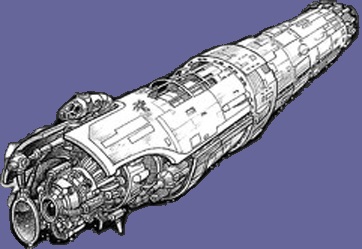  | ||||||||||||||||||||||||||||||||||||||||||||||||||||||||||||||||||||||||||||||||||||||||||||||||||||||||||||||||||||||||||||||||||||||||||||||||||||||||||||||||||||||||||||||||||||||||||||||||||||||||||||||||||||||||||||||||||||||||||||||||||||||||||||||||||||||||||||||||||||||||||||||||||||||||||||||||||||||||||||||||||||||||||||||||||||||||||||
Characteristics Darksaber was essentially a cylindrical spaceframe built around a superlaser similar to the one mounted on the Death Stars. Based on a set of blueprints that Durga stole from the former Imperial Palace on Coruscant, the new design dispensed with the hangar facilities, living quarters, turbolaser emplacements, and other features which had occupied the spherical portion of the Death Stars. Durga was only interested in the main weapon, although the cylindrical body still had space to house several hundred Hutts. Viewing a hologram of the finished weapon with the superlaser firing, General Sulamar remarked that it looked like a Lightsaber. The weapon's name was conceived as a pun. History Construction Durga recruited people to design and oversee the construction of Darksaber. she was constructed in secret in the Hoth asteroid field. The engineering team also designed and built a set of Mineral Exploiters to harvest minerals from the asteroids and convert them to construction supplies. The construction was carried out by the Taurill, a hive-minded race. Flaws Darksaber was an ambitious project, but was doomed to fail from the start. The Taurill were clever and hard-working, but often distracted, and each member was unable to see beyond the particular part they were working on. This resulted in shoddy construction, with parts of the weapon being built in the wrong place, or the wrong way, or left out altogether. Even worse, the weapon was controlled by a set of old, outmoded computer cores located by General Sulamar. The engineers chose to abandon ship before the Darksaber embarked on its maiden voyage, reflecting that Durga's mistake had been trying to build a superweapon at minimum cost. Destruction When the New Republic learned of the Darksaber's location, a small commando team was able to infiltrate the weapon's interior. When a New Republic task force arrived, the Darksaber was chased into the Hoth asteroid field. Even without a test-firing, Durga was completely confident that the weapon would function as planned. Drawing close to a pair of moon-sized asteroids, Durga gave the order to fire. Predictably, the superlaser malfunctioned and died with a fizzle. The Darksaber was crushed between the two asteroids, ending the lives of Durga, Sulamar, and those few others on board. Critical Analysis Despite Darksaber's lackluster performance, she remains a real and true threat to the security of the Rakatan Galaxy due to her probable abilities, had she been properly constructed, and the fact that she was built in total secrecy- The Second Republic knew nothing of her until she was practically finished. Should a second one be built especially by a group with more fiscal responsibility, this one may well prove to be a tougher nut to crack. It is rumored that the New Imerium and a Dark Geh 'Dia group have built a version that includes dozens (or hundreds) of fighters (or drone fighters). It is known that the Syhith Orders, especially the Palpatinian Order, have these terror weapons, though to date none have even threatened to use them; It's been speculated they may in fact only have them for use against each other. | ||||||||||||||||||||||||||||||||||||||||||||||||||||||||||||||||||||||||||||||||||||||||||||||||||||||||||||||||||||||||||||||||||||||||||||||||||||||||||||||||||||||||||||||||||||||||||||||||||||||||||||||||||||||||||||||||||||||||||||||||||||||||||||||||||||||||||||||||||||||||||||||||||||||||||||||||||||||||||||||||||||||||||||||||||||||||||||
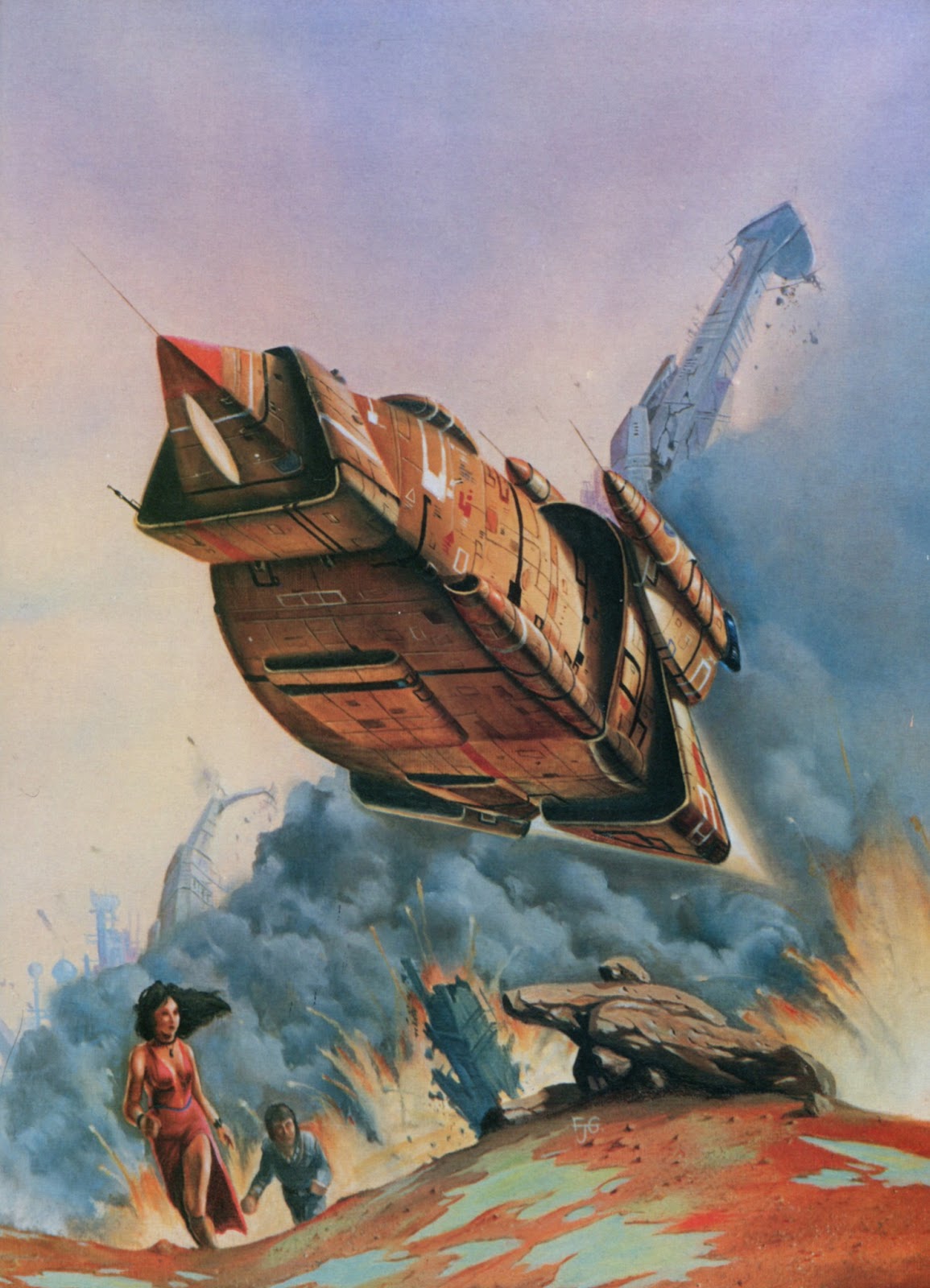 |  | |||||||||||||||||||||||||||||||||||||||||||||||||||||||||||||||||||||||||||||||||||||||||||||||||||||||||||||||||||||||||||||||||||||||||||||||||||||||||||||||||||||||||||||||||||||||||||||||||||||||||||||||||||||||||||||||||||||||||||||||||||||||||||||||||||||||||||||||||||||||||||||||||||||||||||||||||||||||||||||||||||||||||||||||||||||||||||
| The pride of the once-mighty Phalan Empire, the Interceptor was comprehensive destroyed when they attempted to manipulate the UGC into a war with their own enemies using a "bait" ship to draw the Council's attentions. The Interceptor had served over a thousand years by this point yet was as advanced against anything before this as the UGC's ships would prove to the before the Interceptor; Whereas the Interceptor was almost equal to any previous empire's warships, not more than a few Veritechs could make short work of a Phalan warship often before the warships realized the degree of danger they were in. An expedition led by Patrol Commander Mor MIKISS eventually traced down and, for a brief time, neutralized the Phalan threat, stealing a Interceptor in the process. His ship, the VENTURER, was shipwrecked on Phalan Prime with the intention of taking the crew prisoner in order to keep the secret; In the course of escaping, MIKISS destroyed the Phalan's main port. While two of his crew fled from the devastated landing apron, Mor MIKISS struggled to retain control of a captured Phalan Interceptor in the desperate escape from their captors (the circumstances for the dramatic painting Phalan Interceptor by Fred GAMBINO). Another faction delivered the crew to a ship that would take them home to report to the UGC about the threat the Phalans presented. For reasons that never became clear, the Phalan Interceptors were all destroyed after the war; A fleet of at least 100 were to be kept for research purposes, but somehow were not. The last known Interceptor is thought to have been used by Special Battalions on one of their missions, ending the longest active serving fighters in the known universe, and amongst the top 10 longest serving space and aero-spacecraft. (GM's; The Reserve Fleet was secretly transferred to the yard; over 1,000 of the best-condition examples were kept.) |  | |||||||||||||||||||||||||||||||||||||||||||||||||||||||||||||||||||||||||||||||||||||||||||||||||||||||||||||||||||||||||||||||||||||||||||||||||||||||||||||||||||||||||||||||||||||||||||||||||||||||||||||||||||||||||||||||||||||||||||||||||||||||||||||||||||||||||||||||||||||||||||||||||||||||||||||||||||||||||||||||||||||||||||||||||||||||||||
Painted by Fred GAMBINO. | ||||||||||||||||||||||||||||||||||||||||||||||||||||||||||||||||||||||||||||||||||||||||||||||||||||||||||||||||||||||||||||||||||||||||||||||||||||||||||||||||||||||||||||||||||||||||||||||||||||||||||||||||||||||||||||||||||||||||||||||||||||||||||||||||||||||||||||||||||||||||||||||||||||||||||||||||||||||||||||||||||||||||||||||||||||||||||||
 |  | |||||||||||||||||||||||||||||||||||||||||||||||||||||||||||||||||||||||||||||||||||||||||||||||||||||||||||||||||||||||||||||||||||||||||||||||||||||||||||||||||||||||||||||||||||||||||||||||||||||||||||||||||||||||||||||||||||||||||||||||||||||||||||||||||||||||||||||||||||||||||||||||||||||||||||||||||||||||||||||||||||||||||||||||||||||||||||
| SC 520B (nicknamed the Stellar Cow by her crew) was an REF super-fueller. She served during the Pioneer III mission. SC-520B's callsign was Babel One Seven, and she was particularly noted for being the only tanker on the mission capable of serving starships. She was also noted as "the fighting tanker" for her captain's willingness to enter into direct
SC-520's future career read much of this; Her crew became particularly adept at towing stricken vsls off the line, and eventually gained a degree of fame for it. She disappeared at some point; It's believed she was decommissioned during the Global Civil War and mothballed, but when and where is lost. SC-520's fuel capacity was rated at 100,000 gallons of hydrogen, but rarely carried more than 75,000 gallons on board at any given time. Typical fueling was at about 2,000 gallons per minute. Her hull was strictly dictated by necessity, but lent to her nickname. The "horns" of the ship housed sensor arrays to protect against sneak attack, giving the ship the time to move away from danger. The "tail" and "legs" housed refueling lines and reels, though she could only safely refuel 2 ships at a time. Her extraordinarily unique "hump" housed the dockside reloading equipment from which she took fuel on, both for her own use and for deployment to the fleet; Her own fuel bunkers were not directly connected to the fleet's fuel inventory, but could be cross connected in an emergency (which happened on a few occasions). Launch and recovery tubes for a pair of SF-45 Saker Repair Vehicles were also located here. Few fail to notice her hull number and official name is SC 520B, indicating a previous ship; In fact this is not so. SC 520 was build, but then very heavily damaged on the launch ways before she could be launched. She would have been scrapped, but the REF needed the ship too badly to spend the time to do so. Also, by serendipitous chance, this afforded the opportunity to stretched her hull 15 feet, increasing her capacity by several thousand gallons and increasing her total crew by 25%, both of which eventually reduced her crew's workload by around 12% when she deployed on the Sentinel Campaign. SC 520'S crew of 20 officers and 60 enlisted was EXTREMELY low, especially considering the scope of her duties, placing incredible stress on the crew; As a result, they were an unusually close family, with these relationships continuing well after the war, so much so that SC 520 Veteran's Association finally disbanded when the last surviving child of the crew passed away (she had hoped that the grandchildren would continue the association, but this was not to be). Proposals to build a fleet of clones of SC 520 have been floated, but these proposals regularly get shelved in short order. Few will say it out loud, but SC 520'S history was so unique that it's feared a clone will be jinxed as she is measured up to the original, or removing the mystique that fundamentally is SC 520. Either way, the deepest respect for her permeates- SC 520 one of the very few ships individually recognized with a place at President's Point in the form of a 1/10,000 scale model in the main lobby to the Halls (not just "somewhere" around the station, but obnoxiously front and center to the representatives of the people of the UGC). She also has a second model at Kyhron KRAVSHEEVA Militry Academy on the #3 Messdeck (where every Cadet will see it eventually, and can not help but not it's "odd" appearance). Well after the conflict one of her crew members, Samuel R. DELANY, wrote a novel entitled Babel-17. The name was based on his ship's wartime callsign. It would go onto win the Intergalactic Nebula Award for Best Novel (not just best science fiction). The ship is also noted for the painting of her under fire by Commander Peter ELSON, who served aboard the SCIROCCO, one of the ships pulled off the line by SC-520. | ||||||||||||||||||||||||||||||||||||||||||||||||||||||||||||||||||||||||||||||||||||||||||||||||||||||||||||||||||||||||||||||||||||||||||||||||||||||||||||||||||||||||||||||||||||||||||||||||||||||||||||||||||||||||||||||||||||||||||||||||||||||||||||||||||||||||||||||||||||||||||||||||||||||||||||||||||||||||||||||||||||||||||||||||||||||||||||
 |  | |||||||||||||||||||||||||||||||||||||||||||||||||||||||||||||||||||||||||||||||||||||||||||||||||||||||||||||||||||||||||||||||||||||||||||||||||||||||||||||||||||||||||||||||||||||||||||||||||||||||||||||||||||||||||||||||||||||||||||||||||||||||||||||||||||||||||||||||||||||||||||||||||||||||||||||||||||||||||||||||||||||||||||||||||||||||||||
| After the Battle for Mars exposed the weaknesses in various Terran ship designs, the Terran Defense Authority sat down to critically review and overhaul their shipbuilding program. Wartime had forced the The TDA put out a call for the high-powered atmospheric interceptor in late 2155. The design competition was won not by any of the large aerospace manufacturers, but by the relatively unknown outfit of Dixon-Bourne, designers of atmospheric race vehicles. The design entered production in 2156 and the first units were flying patrols by December of that year. The Barracuda proved to be as fast, powerful, and maneuverable as advertised. Though unarmored, it was heavily-armed, and simulations suggested that it would be superior to the larger and bulkier Piranha in a dogfight. Barracudas were widely deployed on Mars as well as on Earth, and flyovers of strategically important points were a common sight during the war, both as a training exercise and as a reassurance to the population below. The Barracuda suffered from a few early design flaws, including a tendency for the vertical stabilizer to delaminate during high-speed maneuvers in Earth's thicker atmosphere; This problem was speedily corrected. Due to its oversized engine, the Barracuda also suffered a great deal of airframe stress, and the technical inspection crews always had to be on the lookout for structural fatigue. In addition, the Barracuda, perhaps echoing its roots in racing craft, proved to be fairly temperamental and had a higher rate of breakdowns and needed more maintenance than originally planned for. As good as it may have been in simulations, the Barracuda was never used in combat during the Proxima War. A second invasion of the Sol system never occurred, and attempts to utilize the Barracuda during the ground war on Proxima ran into problems as its high maintenance needs made it unsuitable for the rigors of that action. The Alphan militry purchased several Barracudas for defense of Alpha III, and they proved as popular with Alphan pilots as they had with Terrans, but Proxima's ability to strike into Alphan space had already been spent by that time. Still, they formed the backbone of several planetary defense units and the Barracuda remains in service to this day. | ||||||||||||||||||||||||||||||||||||||||||||||||||||||||||||||||||||||||||||||||||||||||||||||||||||||||||||||||||||||||||||||||||||||||||||||||||||||||||||||||||||||||||||||||||||||||||||||||||||||||||||||||||||||||||||||||||||||||||||||||||||||||||||||||||||||||||||||||||||||||||||||||||||||||||||||||||||||||||||||||||||||||||||||||||||||||||||
 | Battle Cruiser.  The annexation of the Remulous Empire by the UGC led then current owners of CLEPONJI to risk surrendering their ship; They could not know the Galactics intentions with her, and did not want to see her destroyed. Fortunately, the UGC left physical possession of the vsl in their hands, under the condition that UGC researchers could board her and conduct any non-destructive testing they wished at any time, conditions the Cleponji's (as they'd taken to calling themselves) found fully acceptable. The design has been as fully reverse engineered as is possible for the UGC at this time, and being unequipped for and incapable of supporting space and aero-space fighters the REF has dismissed further consideration, despite Spacy interest in the ship for limited interdiction duties. Sector defense forces have the right to build these ships, but to date none have taken the option. The original CLEPONJI is currently semi-permanently berthed at Milraahn Station as a museum piece, though the descendants of her owners at the time of annexation have the unfettered right to board her at any time and can even live on board if they really wanted to (they don't, she's a warship not a hotel). Once every 10 years Cleponji's get underway on a so-called "turn around cruise" circumnavigating the Milraahn's equatorial belt and then returning to her berth backwards so as to keep her sides equally exposed (but mostly for public relations reasons). In 2481, they took her on an orbit of Milraahn's parent planet to demonstrate she could in fact operate independently, but afterwards agreed that public pressure to prove she's not "just an old toy" would not shame them into cruising her any more than necessary to complete the turn around cruise. 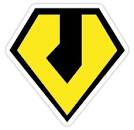 Class Erukelto Dakan (report ship/shuttle)  The shuttle was of very simple construction. The main hull was rectangular, with four main engines in the back, two more engines underneath the hull in the sponsons. Two more engines, used almost exclusively for orbital ascends, were placed in the upper rear of the shuttle. Numerous attitude and maneuvering thrusters were located over the hull of the craft, with two main braking engines in the extreme nose. Five reaction mass tanks were mounted partially externally on the rear half of the hull. The propulsion installation also included an anti-gravity pods, making the LIEWNEUATZS capable of unlimited hovering and slow ascends without using significant quantities of reaction mass. The simple designed allowed it to be manned by 2 T'sentraedi, with up to 20 T'sen or 100 tons. They with all arms of the Regular T'sentraedi Forces and Border Fleets from 1690 onwards. After Kara Qalliph Diel'are Kah Yar (the 'rain of death'), the United Earth Government had intended to scrap the entire fleet (along with the majority of T'sentraedi equipment), but the estimated cost to merely cut up the LIEWNEUATZS fleet was 20 millioncredits (with an estimated income of around 50 million credits), to refurbish them to mi'cronnei standards would run 15 million credits, or to simply store them 5 million credits. At first the decision was made to cut up 2,000, convert 1,000, and simply store the rest (eventually choosing Hygiea). However, during the conversion process for the 1,000 selected, it was discovered they already had mi'cronne conversion installed, presumably for use by Derurigaado. With this, the fleet was tripled, the number to be cut up halved, and the rest interned until their final disposition could be decided. In the midst of all fo this, it was noticed that Space Fold Generators were piling up- Quickly. Even when only parts of the Generators could be re-used, the pile had gotten pretty big- Well over 15,000 usable units were recovered in only a few years. At first they were simply being stored in the same yard as the LIEWNEUATZS-Class, so it was quickly conceived to store them on the LIEWNEUATZS. However, it didn't take much to realize they could be fully installed on the shuttles, making them independently space fold capable. For around 100 years this went quietly unnoticed, until a stable and fast-growing trade with new sectors of the universe in other galaxies increased demand for space fold capable ships- The merchant fleet didn't need space fold once they were in a galaxy, but to make the crossing between galaxies absolutely requires space fold. The LIEWNEUATZS fleet had found their salvation, of a sort; They now began forming the very backbone of intergalactic trade, with one shuttle capable of moving fleets of hundreds of thousands of merchant ships in an increasingly wide and remarkably stable network of trade routes. Most of the LIEWNEUATZS fleet has not been upgraded in terms of armor and weapons; It's not needed for their main duties, since galactic transfer points are well known and thus heavily patrolled by various militry vessels, and they rarely stray much from those areas (other than returning to home port on fairly regular intervals). However, it us not unknown to find these ships that have been armed and armored (10 times the armor, 2 to 4 T'sentraedi Heavy energy Weapons turrets, and often shielding that effectively triples their armor). They're also equipped with independent FTL drives to give them Class 5 capability, making them very quick in their own right. They're very rarely used as actual cargo and personnel shuttles anymore, but mechanically not much has changed in the 500 or so years they've been in Terran service. In fact, around 10% of the current fleet are the original ships converted to mi'cronne use with FTL and fold generators installed, and nothing more. The most unusual change it the installation of full proper galleys on some (around 10% of the original fleet), the rest using portable galley equipment more like an expanded coffee break space in an office building than a galley. Often, not even this little bit is done, just a coffee pot, half refrigerator, and microwave. Variants: SF-1; Space Fold equipped variant. These are by far and beyond the most common variant, with just over 10 million units. AS-1; Assault Shuttle 1. These have additional armor (1,000 MDC to the hull, 250 MDC to thrusters) and a pair or quartet of Light Laser Turrets. Around 5,000 units. AS-2; Assault Shuttle 2. A pair of Heavy Laser Turrets on the waist. Used to bombard planets for Demonstration Of Force Exercises (DOFE; bombing a planet into dust to show potential enemies of the futility of fighting the UGC). These have also been fitted with a Lancer Space Fighter cockpit with the Dragonfly Single-Operator Piloting System, and three unmanned shuttles slaved to the manned units. Around 1,000 units. AS-3; Assault Shuttle 3. Unmanned version of the AS-2. Slaved to a manned unit, targeting the same points as the manned unit. Around 3,000 units. Patrol; The nascent Spaceways Patrol And Enforcement received 200 of these to use in whatever manner Admiral SERLING saw fit; He 'saw fit' to convert them to a general purpose cutter, capable of serving in all three major duties his new service required, combat, SAR, and ATON at the same time. They can engage in front line combat, rescue Veritech pilots who's fighters had been destroyed, AND recover, service, and re-deploy marker beacons at the same time. To underscore this point, Admiral STRELING personally took command of cutter HAMILTON (WGDC-001) during the Carbonaran uprising to demonstrate her ability to do so. She passed with flying colors, while Adm. STERLING commanded his fleet. (This would be the last time a Patrol Admiral personally commanded a ship for over 100 years.) NB-1 through 5; Navigational beacons. Rarely manned, these are used to give others a point of reference to aim for. The variants indicate the type of navigational equipment on board. All NB-5's are manned, but these are also used as main navigational beacon stations for a given system and typically used as a staging point for customs agents. Unknown total number of units, but well into the hundreds of thousands. Colonization Variants: There are thousands of LIEWNEUATZS-Class shuttles converted to colonization ships, with no two identical. Some were converted to be essentially small city sized RV's, others simple material shippers, others other ways. A not uncommon version is to alter the ship several times, first as a boxed home shipping unit, then material shipper, then as a colonist shuttle, and finally as a temporary space defense platform (dorsal and ventral heavy energy turrets, dual waist light energy turrets, and dual forward and aft missile tubes). Most often, the hull is sold as soon as the colony is capable of building their own defense platforms. MDC By Location: Cockpit 100 Main Hull 200 Length: 168 feet, 8 inches. Beam: 110 feet, 3 inches. Clearance: 58 feet, 9 inches. Weapons: Typically none. Crew: 2 to 5, depending on configuration. Powerplant: Twin Zentral HH-123 Fusion Reactors. Top Speed: 1,975 knots. FTL: When equipped typically factor 4. Space Fold Drive: Specific Variants Only. Cargo: Up to 100 tons.  (or Hover Pod).  Vehicle Type: Transportation Crew: Can accommodate 1-5 full sized T'sentraedi comfortably. MDC By Location:Main Hull: 20; Depleting the mdc of the main body will complexly destroy the vehicle Speed: 50 mph (80.45kph) Weight: 18 tons Weapons: None Bonuses: None Known Variants: Badger The Terran Malcontent Era Badger hovertank was built from a hoverpod, with a T'sentraedi Chillaid Rodrup Z-PR Mk.VIII (Assault Rifle) along the centerline, and a Nilke Gadra (MRM Launcher) on one side and a Delke Gadra (LRM launcher) of the main gun (from a Gluuhaug and Serauhaug respectively); Because the vehicle was DIP and no photos taken, it's not actually clear now which side was which. Bits of Serau-Ger (Heavy Battle Armor) were cut and welded to the hull, with additional componets around the cockpit (taken from an American F-15 Eagle fighter); The cockpit was canopied by well-cut and fitted segments of clear covers off of the amor, with a visor that had been cut and formed around that as an emergency drop cover (in the event of heavy combat). Lastly, an M-49 ring mount with a twin M-2 on Mk93's were installed right over the Chillaid's mount. Badger was an unusually novel prototype that, had she been allowed to be fully completed, might have been a game changer; As it was, she took EUG and successor states an entirely new direction in armored warfare development that hasn't been changed on actual battlefields since. However, Badger's limitations were exceptional, due to the limited abilities of her creators; They simply did not have the materials to go much further than a very heavy, awkward infantry support vehicle. Known Derivatives: Louisa In 2060 an enterprising ships captain, Marc IAN, took grav pods off a wrecked T'sentraedi warship and installed them on an abandoned river barge naming her Louisa and began carrying all sorts of products (livestock and meats, produce and seeds, metals, plastics, lumber, every sort of finished goods, etc). This became the start of the ELEPHANT-Class Landship, from which all other landships are derived.   The Cygnus was a derelict vsl, her true history lost, discovered circling a supermassive gravitational object (a black hole). It was thought at first she was a Haydonites vsl. The IPA had just that year passed a law making all |
When it was discovered that the ship wasn't Haydonite, the PLENIPOTENTIARY COUNCIL ordered her release to academic circles for further study; The Yard's then commanding officer, ASF General O'NEIL, realized the dangers of handing this ship over to anyone, himself included, and hatched a desperate scheme to save her. First he reported that the ship had already been destroyed. The ship was then nosed into a SkyBase and dressed up to appear as a common after-market office building, complete with heads that were installed just for this purpose. The IPA sent officials to investigate the claims; As the IPA officials arrived, the Gen. met them at the receiving area, introduced his assistant Sgt Mgr. HARRIMAN, and then asked to be excused to attend to his other duties. Sgt. Mgr. HRRIMAN did not know of the deception, though he knew something was going on, whereas Gen. O'NEIL knew exactly what was going on, though not entirely how. All Sgt. Mgr. HARRIMAN had to do at this point was follow his previous orders, escorting the officials around The Yard and show them everything he knew of, then allow them to leave. It was afterwards that he was informed of the ruse, to which he swore secrecy (though he left in his final testament a confidential letter to The Yard confessing his actions, "to be opened and read only after the passing of Gen. O'NEIL"). The ruse worked; The Council continues to think the ship is lamentably gone and ordered that no ship in the future shall be disposed of without approval. The ship itself is just over a mile long. Her condition is extremely fragile, since she was not taken care of for several centuries before the UGC discovered her. Efforts to restore her are well underway, but the efforts are hampered by the degree of damage. The various contractors working on her think she's a Haydonite vsl, a few have noticed she doesn't follow proper Haydonite methods and have been told she was "experimental." Cygnus has been the subject of several conspiracy theories; the most popular ones center on the circumstances of her destruction, ranging from accidentally destroyed by bureaucratic failing to being fully restored and underway as the private palace of the Chairman (every commentary on Cygnus refers for her as 'a beautiful creation,' 'a work of art in her own right'). There's even a few accurate versions out there, which the GIS undermined by adding these stories to their own website and confirming it was true- Since the very same people being accused of lying confirmed the lie, people ignore it. Currently she's at Berth #68, deep in the center of the main fleet in order to help keep her hidden from the Council itself. 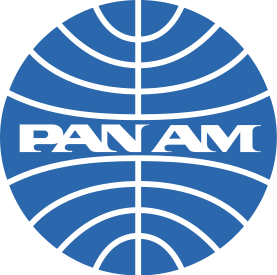 
About the size of a Boeing 737, they can seat 32 passengers and at least 5 crew members (2 flight attendants, flight engineer and two pilots). Each seat is equipped with a seatback monitor and a 5 point restraint (though only 4 points, the shoulder and lap, are typically used; the fifth point, up through the groin, is typically only used in emergencies). They are equipped only with one very small head (toilet and sink only) and wheels for a landing. They are equipped with aerospike rocket engines and jet engines for atmospheric flight. The main aisle is elevated above the main seating area to help prevent passengers from floating into it. There are eight rows of four seats, with each column being two seats wide, and 2 human sized doors (one forward portside for boarding, the other aft starboard; both were used for disembarking). One large cargo door (aft portside) is typically used for passenger baggage. All windows on the spaceplane are tinted to protect against excess sunlight, though Block 6 forward removed the windows for safety reasons (pre-block 6 units were never required to be retrofitted to windowless configuration, though PAAS recommended it). In Block 3, the dorsal fuselage was redesigned from uniconstruction frames to partial frames to allow for easier conversion to straight cargo variants when the spaceplane's service life as a passenger craft was exhausted (the outer fuselage is stripped to bare metal along the dorsal shell lines, the fuselage then cut along said line, and the shell frames unbolted from the rest of the fuselage; the two part dorsal doors and related equipment are then installed). The UEG took particular interest in the Orion III-Class early on to encourage increased space travel; A light, reliable, and cheap frame being needed to encourage business to start, the Orion became an early favorite (mostly due to the advanced state of development at that point), and the UEG fully funded the restoration of the Pan America Company to show their support (hardly a great feat in the end, as the company itself had ceased to exist over a decade earlier). Few and far between at the UGC territories were an Orion can't be seen on at least a daily basis. The Orion is somewhat novel in that it remains a vertical launch/horizontal land craft in surface/orbit operations, despite the advantages that grav pods offer. In fact, wing mounted grav pods are used in the launch stage, but for aesthetic sake the craft still vertically launch (the Operator Manual specifically direct this) despite it not being specifically required. Specifications: Number Built: Millions. Length: 100 ft. Displacement: About 20 tons. Beam: 12 ft 6 inches fuselage, 36 feet wingtips. Clearance: 35 ft. Powerplant: TjY-13 fusion Reactors. Propulsion: Twin Jh-1a thrusters and Tractioning Drives. Complement: 5. Passengers: 32. Cargo: 12 tons. Armament: Defensive Sheilds. Top Speed: Mach 25. Range: 500k miles. 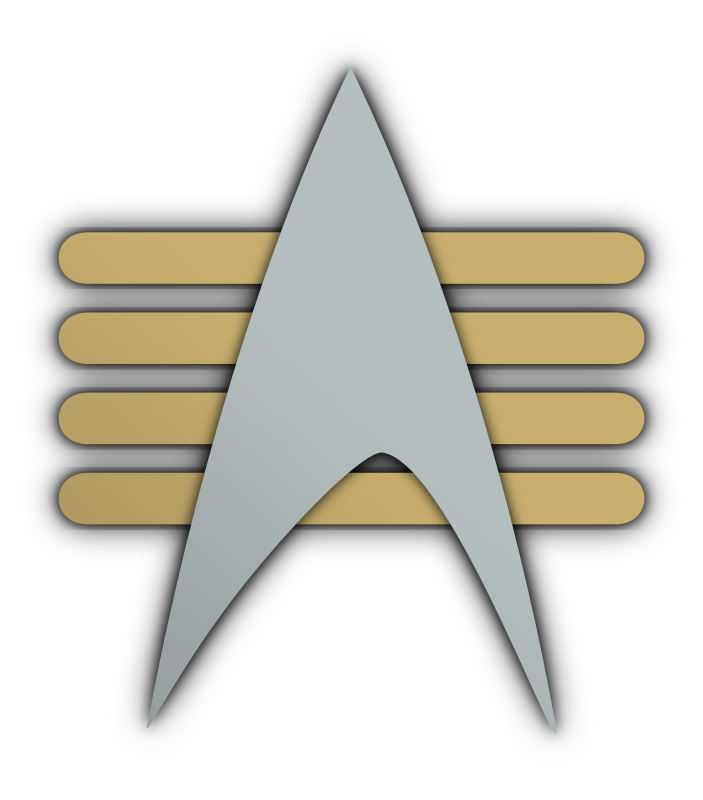  200 years after the fall of the Federate (just before the arrival of the UGC), the Soong Collective announced the deployment of the D'TARAN-Class Starships, a hybrid of Remulous and Federate technologies. In a move of incredible espionage, the Collective managed | Since then, the collective have been deploying these ships in some numbers, mainly harassing Remulous fleets and spying on the Beorge. The Soong Collective has refused to divulge any secrets of the ships to the UGC, and aren't required to. However, the UGC learned the ships secrets anyways, and showed the Collective what they knew quickly 'in the spirit of transparency.' The ships had a new style of wing attaching the warp nacelles to the hull, a twin-wing design that both increases crew efficiency and safety and ships survivability; If a wing is destroyed, there's a probability the other wing can hold the ship together long enough to escape and evade. UGC observers have long observed in the wings were inverted, a connection directly from the saucer section to the nacelles could be accomplished, an observation the Soong have accepted under advisement but will not be implementing. The ships have been observed at Warp 9.9, and the Patrol suspects they're capable of 0.09 Warp more. While not Warp 10, this is as close as any ship can come without creating a paradox. Technical Data The technology reflects the hybrid nature of the design; The power core was Romulan Singularity Drive, but the rest more or less seamlessly blended the two technologies. The process of blending these was the reason it took so long for the new ships to finally come out; The development team wanted the ships to work, without failure. The process of merging the two took a long time to work out. Nowhere in the ship is the technologies exactly 50/50; some places the Federate tech led, in others Remulous. However overall the ship is a perfect balance of the two. Physical Arrangement The D'TARAN-Class was the first attempt to hybridize Federate and Remulous Empires. It was mostly successful; The hull layout of the double-winged star eagle reinforced the warp nacelles, and speaks to the way the Remulous Warbirds used a double-hulled and Federate star eagle configurations. Weaponry The main weapons are Remulous style disruptors, though Federate phasers and deflectors are used for any-missile defense. The ships were designed from the outset to use one and two man shuttles as fighter/bombers, which was very new to the Remulous thinking in any form; The Federate used shuttles but not fighter/bombers, and the idea to develop such a craft began with these ships. Operations The D'TARAN-Class cruisers are used as both warship and research vsls by the Soong Collective exactly equally; They can switch back and forth even in the middle of one or the other without actually ending the operation it was engaged in (though switching from combat to scientific missions is not a normal operational action). Blocks One could be forgiven to believe there was only one block of the ships, since the Soong's industrial capacity is limited. However, there are at least 5 full blocks of the ships. Block 1: The original Remulous ships. These were only modified in so far as was necessary to steal the hulls from the Tal Shiar. After acquiring the hulls, the Soong converted them to matter/antimatter powerplants and installed a phasing cloaking system. 8 ships total. Block 2: Laid down as exact clones of Block 1. 12 ships total. Block 3: Improved weapons systems and sensors. 12 ships total. Block 4: Improved weapons systems and sensors, plus improved encryption to the comms system. Additionally, the life support systems, which are not strictly speaking necessry for the Soong, were upgraded significantly as the Soong began aiding anti-Remulous factions throughout the galaxy. 24 ships laid down, and another 20 of previous blocks retrofitted. Block 5: Installed conduits directly from the saucer section to the warp nacelles, making transfers faster, safer, and easier, though it makes detaching the saucer slightly more complex. 24 ships laid down, 48 retrofitted (the entire then-current fleet). Block 6; The saucer sections was doubled in beam without lengthening the hull, making it ovoid shape. This was done to accommodate 2 additional torpedo tubes without otherwise adversely effecting the ship's missions. No additional accommodations were made to increase capacity, though ships that know they are heading into battle will convert non-mission critical spaces to magazines and carry up to 1,000 times as many torpedoes anyways, "Regulations be damned" (L-41 Renalla). 28 hulls laid down, 78 hulls retrofitted constituting the entire fleet. Current Inventory; 100 ships. Shipboard Life Species or not, these are still Soong. The niceties most species require for survival aren't applicable to them. As a result, berthing on a D'TARAN-Class are much more spartan than most other ships in the known universe, though each member has a one man stateroom. Messdecks are included, but primrily for the comfort of embarked non-Soong members. All the usual types of facilities are also included, and not necessarily for the comfort of others. Strategic Outlook: For the UCG's purposes, the strategic outlook for the class is fairly non-existent. The Collective has the ability to produce many more of this class, but the concerns of a Soong Threat are not even stated. The Collective know the UGC could destroy them at any time, and have specifically chosen not to. The Collective, in turn, has chosen not to provoke a conflict with the Council that would lead to their own destruction. The D'TARAN-Class are powerful compared to Atran Galaxy technology, and could more than theoretically go toe to toe with Rakatan Galaxy ships, but compared to the REF the entire Soong Fleet is woefully inadequate. The REF isn't in any particular hurry to obtain a working example of the D'TARAN-Class either; The only thing even vaguely of interest is the fact that the class is on the verge of Warp 10, and while that would allow them to travel anywhere within a galaxy instantly, it's useless in intergalactic space. They can't even leave their own galaxy, so the threat simply doesn't exist. More pragmatically, the threat from the Soong is at most a minor one. The Soong have no interest in a conflict with the UGC, and only a passing interest in assisting others who aren't friends with the Galactiques; Many of the UGC's enemies are enemies of the Soong anyways. The most 'threatening' the Soong have ever been is a slight degree of friendliness to the Beorge-Traue.   History | The DANUBE-Class was first commissioned in 2368 as a small, mid-range interstellar transport. Even after the development of the DEFIANT-Class the DANUBE-Class were still widely used. After the fall of the Federat, the Remulous Empire (now the Remulous Homogeny) became frustrated by the shuttle's ability to slip past their patrols as Federat loyalists attempted to flee to the Clingohn Alliance or neutral With the arrival of the UGC and the tipping point it became to Atran politics and diplomatic matters, Federate loyalists attempt to defect with their ships; Most were surprisingly successful (though those coming from the Remulous Empire territories were rare); After studying the ships the UGC decided grudgingly to take the design on for the REF as part of the transition of the Atran Galaxy to the Clariont Flag. The Spacy found some use for them but not enough to justify transition, but the Marine and Patrol found extensive use for the ships, particularly in landing Marines (as both troop transport and light infantry support tanks) and in interdiction duties in concert with MAXIMILLIAN STERLING-Class SAR and MIRIYA PARINO-STERLING-Class Interdiction cutters. There's little immediate plans to expand the fleet, though the Marine in particular have made requests to include 20 ships in each Fleet for initial forcible landings, and the Patrol has specifically refused to take theirs off the active duty list where they are in place. Technical data Specifications Length: 75 feet 9.5 inches Beam: 44 feet 11 inches Height: 17 feet 8.5 inches Operations According to many who've flown them the DANUBE-Class "practically fly themselves." They were built with automatic helm control but also included manual overrides, and learning fly one was very easy- The ships were in fact originally intended for low-level qualification training but happen to lend themselves to much more sophisticated duties. Under the Federate the DANUBE-Class were intended to have a maximum crew of 4; Pilot, copilot/quartermaster, flight engineer, and if necessry a coxswain. Under the Remulous the standard crew was increased to 7, pilot, copilot/quartermaster, two flight engineers, weapons system officer, defensive systems officer, and coxswain, a pattern repeated by most users with any financial backing, though private ferry craft were typical one or two crew max. The hull of a DANUBE-Class ship was made up of metallic composites that could interact with magnetic fields. Lost ships could be found by using a differential magnetometer to detect fluctuations in the hysteresis curve. In the case of low power, each shuttle had a contingency fuel cell to provide an emergency supply of power. The vessels also had the ability to eject their antimatter pods if so needed. A shuttle could be modified so as to prevent sensors from picking up its power signature by modulating the engine's power emissions, reconfiguring the deflector shield grid, and installing field buffers around the subspace emitter coil. If done properly, it could be made to appear as a Lissepian transport. However, if not done correctly, the field buffers would distort the shuttle's power signature, causing it to appear to outside scans as to be operating with malfunctioning subspace field emitters, a malfunction that could be passed off as problematic phase modulators. Defensive systems For defense, the shuttles were armed with phasers and photon torpedoes. The torpedo launcher assembly was accessible via a hatch on the deck of the forward cabin. A shuttle was small enough to be able to get close enough to another ship in order to overload the other ship's shield generators with directed phaser fire. The ships were originally only designed with 6 phasers and to carry a dozen photon torpedoes. Specifics varied, but everyone increased the phaser tanks to at least twice as many, some to three times as much, and often carried additional proton torpedoes in cases (typically located in one of the amidships compartments), with as many as 200 being reasonably common. Interior configuration Ideally, a shuttle was piloted by two crewmembers, although one pilot would suffice. The pilots' consoles faced forward upon two large portholes. The cockpit had stations for up to four crewmembers. The two large portholes were equipped with retractable blast shutters. Small square viewscreens mounted within the forward corners of the cabin were used for video communication and ship status displays. In the original configuration, a food replicator and a compact personnel transporter were located immediately behind the cockpit stations. After the class underwent a refit as hostilities arose between the Federation and the Dominion, the transporter and replicator were moved further back and a secondary tactical console was positioned in the cockpit. The transporter was capable of transporting multiple persons simultaneously. The rear of the craft could be configured as a passenger cabins complete with sleeping and dining areas for extended travel. This area could also be used as a cargo bay. In the center of the craft, between the two wing pylons, a series of replaceable modules could be connected. These modules could be swapped to suit mission requirements. Examples of available modules included science laboratories, crew quarters, and photon or quantum torpedo bays. The craft was also equipped with an emergency unit for medical emergencies. Also carried aboard shuttles were medkits, covariant oscillators, communications probes, portable generators, and a stasis chamber. The shuttle was equipped with at least one manual emergency hatch, located amidship on the port side of the vehicle. A small Jefferies tube was also present, immediately underneath the warp core that ran along the spine of the vessel. Technical Manual
The shuttle's modular platform allowed easy configuration for a multitude of missions. Two such modules were the "mission module" and "sensor pod." The shuttle could carry four different sizes of mission modules.++ The Technical Manual also states that the USS Danube (NX-72003) was the prototype of this class, constructed at Utopia Planitia Fleet Yards in 2365. 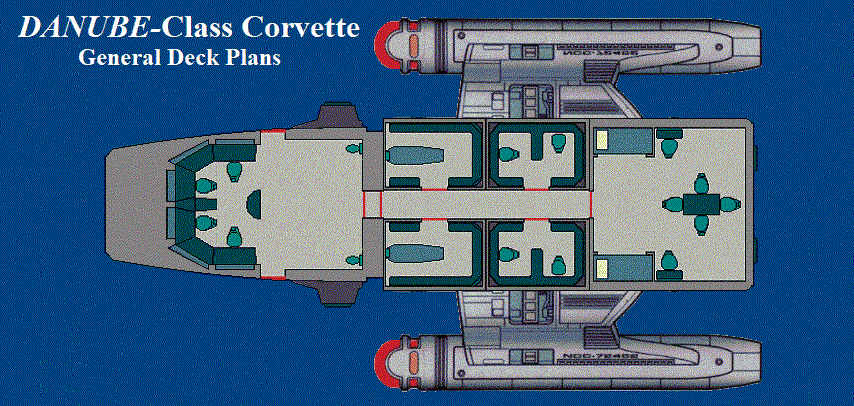 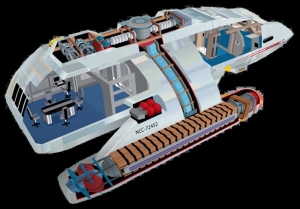 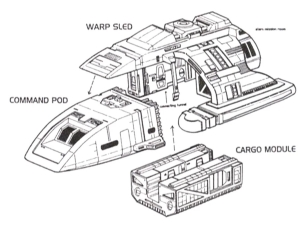 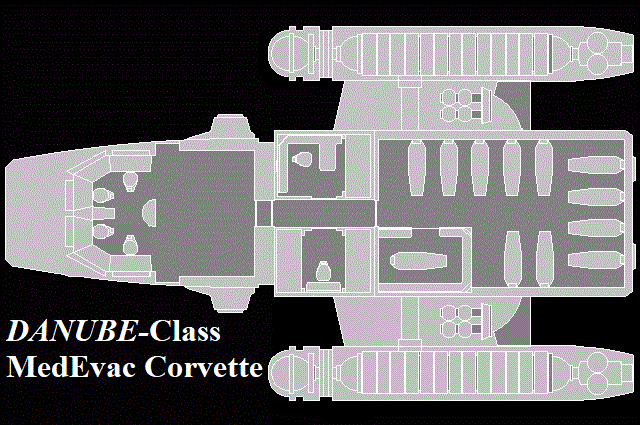  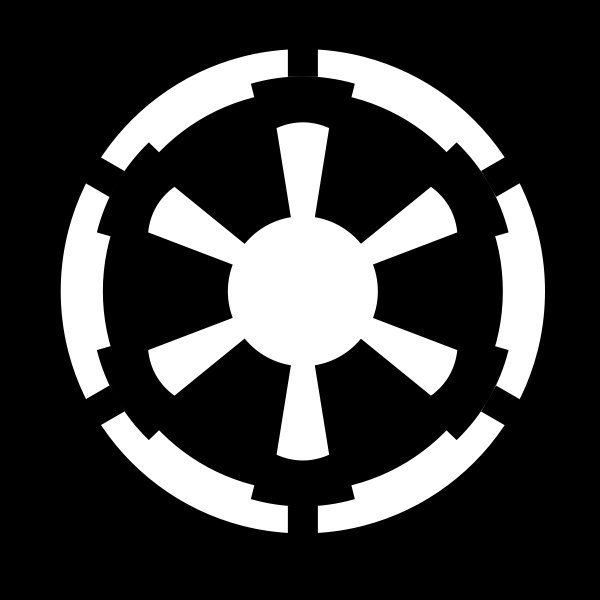
Characteristics Atmospheric Assault Landers were used to deploy stormtrooper forces. The Sienar-Jaemus Army Systems' Atmospheric Assault Lander was a combat-zone rapid-deployment transport designed to ferry twenty stormtroopers into combat in less than thirty seconds. Measuring 17.83 meters in length, it carried an additional gunner and veteran TIE pilot. It featured a disembarkation ramp at the front of the vessel, where two squads of stormtroopers in a low-light troop compartment (to preserve trooper's night vision) would disembark as a bright spotlight above the ramp brightened the landing zone, dazzling the enemy in the process. Located directly behind the searchlight was a forward deflector augmenter and sensor array. On top of the front section of the craft, there was a troop compartment emergency hatch. The cockpit was located near the stern, and was so narrow that the pilot was required to stand when operating the lander. The transport was maneuvered by a single veteran TIE pilot in a small, rectangular space above the vessel to provide maximum visibility, but could be controlled via consoles in the crew compartment below—albeit with less precision. Assault lander pilots were not generally concerned by the exposed vantage point, but complained of the ship's lack of maneuverability compared to that of a starfighter. The lander had two pairs of robust landing gear underneath for hard landings, and had one ramp actuator on either side of the front to stabilize the craft when the ramp was lowered. The lower sides of the craft included atmospheric ducting, heat exchanger fins, atmospheric processing, and life support systems, as well as the forward repulsor array used during landing. On the outside were two pairs of terrain sensors near the stern. The troop cabin was also large enough to accommodate a pair of 125-Z treadspeeder bikes. It was also possible to destroy an AAL by setting it to self-destruct, something Jarek Yeager showed during the rescue of Tamara Ryvora. Armament And Defenses A single stormtrooper gunner protected the lander during its final approach to the drop zone, scanning the terrain from an elevated dorsal turret mounting a F-Z0 antipersonnel blaster cannon. The turret provided a 240-degree field of fire and could also be maneuvered from the crew compartment, while an elevating footplate raised the gunner into position. The blaster turret power cells were located in front of and beneath the gunner. A deflector shield generator was located on top of the craft, with a main forward deflector projector located slightly in front of it. Inside the prow was a forward deflector augmenter and sensor array for extra protection further up the front of the vessel, located behind the spotlight. Each lander had a smooth, armored hull that used voids of inert gas to dampen blaster bolt impacts, with additional external armor used to protect the engines from incoming fire. Stormtroopers were deployed the moment the boarding ramp was lowered, with a first group of troopers rushing out to establish a perimeter. To do this, the soldiers often used FWMB-10 repeating blasters, which offered a good cover fire. Two squads, consisting of twenty soldiers, would disembark in standard two-abreast formation, and could begin combat operations in as little as thirty seconds, allowing the lander to evacuate the drop zone. The gunner would maintain his or her position until the drop zone was secured by the deployed troops, while the pilot acted as spotter to identify any threats. Propulsion Systems Each craft was powered by a reactor located in a sturdy reactor compartment in the rear, and featured four SJAS-210 sublight ion engines that were kept powered up during landings in the event rapid extraction was required. These engines required numerous reactant ducts and pumps and an acceleration compensator to function fully. Furthermore, to give the pilot greater control of the craft, electromagnetic thrust vectoring fins were stationed over the engines exhaust, and ion drive thrusters, an ion collision bar and ion acceleration chambers further improved the assault landers maneuverability. Additionally, several power cells were located underneath the engines, sheltered under the frame of the vessel. History The Atmospheric Assault Lander was used by the First Order 30 years after the Battle of Endor. They were used to deploy stormtroopers to restore order to the Pressy's Tumble refinery complex in the Pressylla system. Commander Poe Dameron of the Resistance had access to one, labeled 226, and he used it on the mission to discover Admiral Gial Ackbar's location after the admiral had been captured by the First Order. Dameron diverted to a planet to rescue the protocol droid C-3PO. Two of the transports were deployed on an assault platform during the search for the famed explorer Lor San Tekka. During the occupation of Castilon's Colossus platform, the First Order used the transports to deport residents who had been arrested for defying them. When Z'Vk'Thkrkza, Hype Fazon, Grevel, and Nod were to be sent away in a transport, Kazuda Xiono and Torra Doza helped them overpower their stormtrooper escort and steal the ship so they could escape the planet. Aunt Z decided that she and Fazon would go to Takodana, where she had a friend, and Fazon flew the transport offworld. A year later, the Colossus Resistance used their stolen AAL to rescue Tamara Ryvora from the ocean planet Castilon. However, they were captured and taken on board Commander Pyre's Star Destroyer where they escaped by crawling out from beneath the landing gear and they set the ship to self-destruct. Before the destruction of the Star Destroyer, they commandeered the transport, with Kaz telling Torra to not fire on them as they escaped. Just after the mission to Pressy's Tumble, four Assault Landers and Kylo Ren's command shuttle departed from the RESURGENT-Class Star Destroyer FINALIZER and arrived at Tuanul, a village on Jakku, to discover information about Jedi Master Luke Skywalker's exile. The landers deployed multiple squads of stormtroopers, who proceeded to engage in combat with the villagers. The landers were also used to deploy stormtroopers to Takodana Castle on Takodana in an attempt to secure BB-8, an astromech droid which had been given the information leading to Skywalker. During a mission on Pasaana, the First Order used two such crafts to deploy stormtroopers and to transport Chewbacca, who was captured during the mission. Rey later destroyed one of the transports with Force lightning, after she got into a tug of war with Supreme Leader Kylo Ren. The First Order had an occupation on the world Kijimi and used their Assault Landers to take prisoners and "new recruits" back to the orbiting Star Destroyer. Current Status The Sith Eternal military employs the AAL-2100/9.5 atmospheric assault lander, an updated model of the AAL-1971/9.1 Troop Transport. The Geh 'Dia Order obtained around 500 AAL-1971/9.1 with the defection of 501 and 502 Legion; The Order didn't adopt them per se, but allowed the legions to keep them. With the annexation of the Rakatan Galaxy by the UGC (especially after the fall of Ryin), the UGC demanded 10 units be handed over for study, they didn't really care who handed them over. All the factions handed at least 2 over except the Palpatinian Order, which refuses to cooperate with the Galactiques in any fashion (and as a result aren't allowed in UGC allied systems). The REF Marine and Patrol worked the craft over and eventually developed a version with a hull lengthened by 10 feet to accommodate 25 Rifleman Power Armors, dorsal main turret (twin L-15's), twin sponson support weaps (each mounting an L-02), and 16 wheels that can be retracted entirely into the hull (IWA App 43; 8 on each side). An FTL variant was tested, and while it certainly worked well enough the offset was there was no troop space onboard. The Patrol is considering a variant for certain routine patrol duties (no turret), but no final decisions have been made. Among the modifications made for the Marine/Patrol variant, the pilot house was moved into the aft compartment and the topside gunner's turret removed in place of the aforementioned main turret. This places the main turret fairly far aft, but negates space taken from troop transport duties. The gunner sits right beside the pilot (in point of fact, both stations are equipped for both duties, though they can only be used for one or the other at any given time). The sponson guns can be retracted if necessry. The AAL doesn't have a specific status in and of itself; All factions use it to some degree, including private parties. Some of the smaller shipping concerns use FTL equipped versions as well (though the UGC will not sign off on this version due to "safety concerns").  A Complicated Failure. 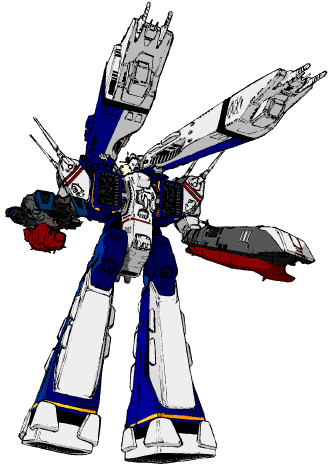
As early as 2008 the UEDF had begun work on a successor design and had commissioned a number of studies into the subject. The start of the First Robotech War had accelerated that process, but also ended up inadvertently splitting the team. Those that were stranded on the SDF-1 had the advantage of being able to study the T'entraedi weapons first hand, as well as getting immediate feedback from the pilots engaging them. From this, they accepted that the VF-1's biggest deficit was its lack of a heavy cannon armament compared to the Battle Pods it was facing. A concept emerged from this feedback, tentatively dubbed VF-X-4. The design team chose to focus on the main weapons first and foremost, arming it with a pair of heavy beam weapons for intercepting enemy craft. Acceleration was also deemed a priority, as the craft would need to deal with the T'entraedi Fighter Pod. Finally, while atmospheric maneuverability was important, it was seen as a secondary requirement to what was intended to be a primarily space-based craft. While the design looked solid on paper, a lack of resources meant that it would not progress beyond that point. The SDF-1's manufacturing capabilities were stretched thin keeping their existing forces operational and could not afford the disruptions needed for tooling up to produce even a working prototype, let alone actual production. As such, the VF-X-4 would languish as a purely theoretical design and would not progress any further until the reconstruction era. The first prototypes were built in late 2013 and began testing near the end of the year. Despite the disruptions caused by the destruction of the SDF-1 and 2 and the loss of New Macross City, the development of the VF-X-4 continued forwards. Early testing of the YF-4 prototypes looked promising, with the fighter mode meeting or exceeding all of its intended performance goals. The twin beam cannons proved to be especially effective in mock dogfights, giving the craft a considerable punch against airborne opponents. However, there was one persistent issue during the test period. The transformation system proved to be troublesome and experienced a very high failure rate. On numerous occasions, test pilots would attempt to transform out of fighter mode, only to have the system simply fail to engage. Efforts were made to rectify the issue, with the prototypes undergoing extensive modifications and rebuilds before finally reaching a satisfactory operational rate. While the UEDF raised concerns over this shortcoming, the design team suggested that it was in fact a 'teething problem' coming from the hand-built prototypes. Based on this, the craft entered limited service as the VF-4A in mid-2015. The growing Malcontent Uprisings saw a need for new weapons that the enemy would not be familiar with, with the UEDF pushing the new craft to frontline service. Several VF-4A squadrons were formed, as well as VF-4As being used to augment existing VF-1 units. These squads were deployed operationally across the Americas where it was hoped that they would give an edge to UEDF forces against the insurgents. Instead, the Veritech proved to be even more problematic than anticipated. Problems with the transformation system persisted in the production models, and if anything proved to be even worse when used under operational conditions. Numerous reports came on of the transformation system failing to engage, usually when transforming out of Fighter mode. While this did not compromise the craft's immediate ability to operate, it proved to be a liability to pilots who had become accustomed to the ability to rapidly switch modes to take advantage of changing situations. This led to a number of missions being aborted and even fighters being lost as their pilots were left stuck in one mode. Even worse were several cases where the VF-4A would begin its transformation only to then have the system fail mid-way. This would usually leave the craft in a completely non-functional and uncontrollable state, which would inevitably result in an emergency bail-out and crash. This failure led to a number of pilot losses through accidents, failed ejections (especially when jammed during Battloid mode conversion) and being forced to eject over hostile territory. Furthermore, the destruction of these craft through crashes limited the ability to recover those craft to find the source of the failure. Initially, the UEDF ordered a stopgap solution, which was to temporarily disable the transformation system and have the VF-4A operate purely in fighter mode. In the meantime, the development team would try to find the cause of the problem and implement a solution. However, the VF-4A had already developed a reputation as a pilot-killer, resulting in many refusing to fly the craft. Many of those squadrons simply grounded their fighters completely. Behind the scenes, the design team engaged in countless hours of testing to try and find the solution to the problem, but with little success. However, the final blow would not come from any problem with the design, but from outside instead. The UEDF had already begun looking at alternatives and had been impressed with the VF-X-6, a new design put forward by Maxwell Dynamics, a private developer. In many ways, it was the antithesis of the VF-4A, being a compact, lightweight craft that made only minimal use of new technologies in its construction. While it lacked the Lightning's heavy beam cannons, it made up for it with a staggering internal missile payload. Interested in the new design, and perhaps wanting to wash their hands of the whole situation, the UEDF ordered construction of several prototypes for evaluation. The YF-6 series, designated as 'Alpha' exceeded all their expectations, while also proving to be both cheaper per unit and more reliable than the VF-4A had ever been. Based on this evaluation, the UEDF ordered the craft into production as the VF/A-6A, while at the same time formally cancelling further development of the VF-4. While the transformation problems were never fully solved, several overhauls saw the system come up to an 'acceptable' level of functionality. However, by that point, the remaining VF-4As were not being deployed in active theatres, and pilots would rarely have any reason to engage the transformation system anyway. As if to underscore the point, the VF-4A never even saw use as a space interceptor, the role it was initially designed for. The Veritech's only truly notable employment was during ZERAAL'S resurgence in 2019, when Pegasus Flight, commanded by Major General Rick HUNTER, used VF-4As to hunt down the renegade warlord. Although the failure of the transformation system and related technical problems were what bought down the VF-4, some blame has to be placed with the UEDF for pushing the Veritech into active service before it was ready. Those craft remaining in service were transferred to second line duties and were retired by 2022. Surviving examples were either scrapped (despite their low flight hours) or placed into long-term storage. Some were hastily reactivated following the Second Robotech War, only to be destroyed in the Invid Invasion. No examples survive today. Conversely, the VF/A-6 Alpha series became the main Veritech fighter of the UEEF and would see over three decades of service. To this day, it remains the longest-lived, most heavily produced and most successful Veritech design. While the VF-4 would ultimately be a footnote, it none the less was influential on a number of other designs. The SM/A-4 Comet and SF/A-5 Conbat would both draw heavily from it with their combination of heavy beam cannons and missiles. Ironically, had the VF-4 been designed from the outset as a single-mode craft it likely would have fared far better in service. - Jang, W., Robotechnology Review (academy publications). Efforts At Renewal. The VF-4 has seen a limited renaissance in the form of non-UGC actors attempting to bring the fighters back into existence. These efforts have been extremely hit or miss, with only individual units achieve all expectations. None to date have achieved a full run. Newer powerplants, ones that were not available to the RDF at the time, have overcome some of the limitations of the original design, but the transformation process is still not fully functional. It is believed that a fully operation system will come on line as soon as 2600 or 2650, though the purpose to such an effort is questionable as other designs are already in service (such as COBRA COMMAND'S CCV-2 Seeker Fighter).   Unfortunately, the same things that make it attractive to shipping concerns also make them attractive to smugglers and pirates; Well armed, difficult to track even when they want to be tracked (this even without stealth), and in the case of pirates easily able to strip a much larger ship of suffiecent valjueables to make the operation a commercial success (especially if unnecessary equipment, such as hoverdollies and Boo Vans, are dumped), the Express-Class has a lot going for it. The ships are surprisingly comfortable inside; They carry a delivery shuttle with space inside for two hover dollies to help move heavy cargo around, and can be used in combat (the factory standard model is equipped with a top turret as well as two torpedo tubes, which can double as the 'primary lasers') as defense against pirates, commerce raiders, and various other troublemakers. They are so effective in combat they have been used in limited numbers by the UGC Spacy in support roles. The Express-Class's computer is semi-sentient. They can recognize their crew and infer certain degrees of intentions, but are not capable of true emotions. The Express-Class have seen extensive customization; One was converted into a racer by Turanga LEELA (a member of the original design team, along with her husband Philip J. FRY) to prove the ship's "flexibility." Another was converted to a medium-range passenger liner, complete with wings and wing engine nacelles (in a poorly conceived advertising gimmick). New York (colony) Fire Department "acquired" one (impounded by colonial security forces) that proved highly effective. 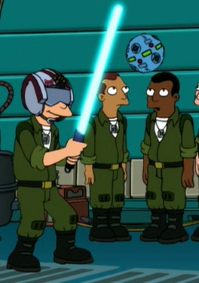 Development History Engineering Professor Hubert J. FARNSWORTH, an eccentric (most say "mad" and "perverted") engineer, needed to raise money for his unusual experiments. His engineering knowledge allowed him to design a ship's engine, hull, etc, easily enough, but he didn't know the first, last, or anything about ships per se; Turanga LEELA, an out of work social worker (she'd recently been fired over one client, Phillip J FRY), approached him for a job in Human Resources. The job she was inquiring about was already filled, but the Professor had this idea of building the ship. He'd already built one, but she disappeared under mysterious circumstances with a loss of all hands and worse of the ship's blueprints. Together with LEELA, FARNSWORTH designed a new ship, named Planet Express (not II but rather as if there hadn't been a previous ship). LEELA designed the inner hull arrangements while FARNSWORTH determined the hull and engineering. Curiously, Phillip J FRY had followed LEELA as she was "seeking new career opportunities" and thus helped in development of the ship, suggesting the cargo bay be set up with a van already on-board, allowing the cargo to be loaded onto the hoversleds at any given port for the next port, then those loaded into the van en route between ports, reducing on-ground time. (He also helped to design crew berthing, resulting in the rather odd use of fold-up double racks in a couch and the inclusion of a coffee mess in each berthing.) After a series of 3 shake down cruises, the Planet Express was determined to be fit for duty- The revisions were completed and the hull laser spec'ed to be copied and patented to prevent knock offs. Deck Plans.
Pinpoint Barrier Defense System Originally developed by researchers onboard the SDF-01 MACROSS during the FIRST ROBOTECH WAR, the Pinpoint Barrier System is a standard defense system on board all UN Spacy starships and colony vessels. 2. Full Force Barrier Field Provides 300 MDC all around. Defensive Laser Batteries Each vessel has a defensive laser batteries for anti-missile and meteorite defense. Missile Tubes Two forward and one aft, capable of launching a medium range missile. This is not a rail launcher.. Mecha Complement None. An Express-Class could carry a TBP-Z1 or similar, but at the cost of any cargo capacity; Even Atorians don't bother trying. The Autopilot In addition, the ship carries a separate AI autopilot. The ship and the autopilot are separate entities and the autopilot is "advisory only," though absent a countermanding order the autopilot's commands are priority. Alternate Configurations And Common Modifications
The original crew consisted of Captian LEELA, Phillip FRY, Amy WONG, and 6 Bender Units but mostly Bender Unit 22. Scruffy the janitor and Hermes CONRAD the accountant bureaucrat was part of larger team.
Turanga LEELA Turanga "Leela" LEELA was a social worker on New York when an discharged soldier named Philip J FRY appeared at her desk. She assigned him a job at a factory, which he refused. Her boss ordered her to kick him out, but in a strange twist she sided with her client; 'Why should he, with his history, be forced to accept the most menial task possible?' she was then fired on the spot, to which Philip asked her to marry him. She refused, but accepted the offer a decade later. Philip followed her for the next couple of days until they stumbled upon a Dr. FARNSWORTH who was trying to sell a new class of ship, and needed a crew to prove the ship's capabilities. In accordance with Turanga LEELA'S culture, her family name is her commonly referred to name; Her husband Philip J. FRY would adopt this part of her culture. Although she was born on New New York, Leela's ancestors were natives of Better ROGER'S homeworld. Philip J FRY Mz LEELA was terminated as a social worker of Philip, who then made it up to her by offering to marry her right then and there… Which she rejected in the moment but hired him on as her crewman about the Planet Express. After a decade of begging, she finally agreed to marry him; They eventually had 3 children. Phillip is a combat veteran of Doof- Unfortunately he wasn't a very good soldier. He wasn't a very good crewman aboard Planet Express, either. Leela mostly kept him around to keep him busy, and so she could bitch at him, which he seemed to enjoy. Amy WONG Amy was Dr. FARNSWORTH'S engineering student who worked at his delivery business while studying under him. When the doctor had a notion to test the ship in a passenger liner configuration Amy doubled as both an in-flight engineer and stewardess. Scruffy, The Janitor Not much really is known about Scruffy, only that he seemed to constantly be forgotten about, and that he was the janitor. His age was thought to be about halfway between FRY and the doctors (the two oldest members of Planet Express). Hermes CONRAD Hermes CONRAD was Planet Express' administrate officer (Grade 34). Jamaican by birth, CONRAD was afraid to make mistakes. His wife Labarbara often worked with him, and intermittently worked for Planet Express. Bender Unit 22 As part of the construction of Planet Express Dr. FARNSWORTH bought a half dozen obsolete bending robots and reprogrammed them as loaders. Unfortunately Unit 22 (the third one converted) developed programming quirks and eventually developed Level 3 sentience, and generally acted like owned the place. He was also a jerk to everyone around him, a kleptomaniac and pyromaniac, smoked cigars and had a habit of not drinking enough on occasion, being cited at least once for being well under the legal limit. For no discernable reason the other 5 Bender units didn't have any such quirks. Government: Private (United Galaxies Council). Ship Type: Cargo vsl. Class: Express-Class. Crew: Civilian: 10 total. Militry: 20 tops. Passengers: Civilian Configurations: 50 Militry Variations: 150.   The Bender series are able to stretch their arms long distances as well as record data. They breath fire whenever they burp. Being a girder bending machine they are very strong. They can remove their arms, legs, hands, and feet without tools in order to facilitate repairs more easily, and withdraw them into their chest when needed; They can also swap out heads, but is a difficult process and will only normally be done in the case of body damage. Their eyes will move forward when focusing or zooming on an object. Due to their nature in a high heat environment they can survive in the most extreme heat for short periods of time, one having even intentionally entered semi-cooled lava. Benders were built with a data backup unit to backup data so that if their body was destroyed they could upload the data into another body, with a set of virtual adaptor caps stored inside of them. They were originally constructed in 2998. Durability The Bender series are incredible durable, nearly flattened, hit point-blank with a shotgun, had several chips removed from their severed heads, had their lower torso melted from a cosmic electrical disturbance, been launched out of a torpedo tube then withstood atmospheric reentry, and submerged in lava. A bomb was exploded inside one (twice). Additional Info It is recommended they run on 5 gigawatts due to their6502 Microprocessor brain. They have a built in self-destruct code that causes their head to self-destruct, leaving the rest of his body intact and potentially functional. They cannot have magnets attached to their head as it will interfere with their inhibition unit. They can attached uninstalled arms and with the other as a remote operated unit, but are not as strong that way. Their antenna interferes with satellite televisions and some cellphones. The casue of this interference is not known, but it is suspected this is tied to their backup unit, as this is tied to why magnets interfere with their inhibitor chips. They weight 2 tons. Functions, attachments, and accessories
The main variant is the Bendy Boo, a 'guard dog' variant. Bender 22 took one of his fellow Benders back into a workshops of Planet Express, emerging a week later with a Bender that had been modified to a four legged version that barked. Bender Bending Rodriguez Bender Bending Rodriguez is the 22 bending unit made at the original Tijuana factory (serial number: 2716057), who early on showed sentience. bender has a defective backup system, which in combination with his inhibitor may explain it. Bender works at Planet Express as Assistant Manager of Sales, formerly chef of the company. He is one of the main characters and is known for his "in-your-face interface." Bender inherited a castle. Whether he kept the castle or not is unknown. He was briefly the president of the League of Robots, a society of robots which came to the aid of robots abused by humans leading to a duel with another robot named Calculon, severely injuring him. Bender engaged in a few "robosexual" relationships, as well as an extremely dangerous relationship with the "wife" AND "daughter" of the leader of a gang of robots who predated on other drones.
The Express-Class was specifically designed to support an on-board delivery vehicle, the Boo Van. The Boo Van in turn was designed specifically around the dimensions of a hoversled. Specifications. The Boo Van is capable of carrying up to 12 tons in packages up to 10 feet tall and wide and 25 long. The top speed in normal environments is 85 mph, with a maximum height of 18 feet. The vans can not achieve orbit on their own, and can not retain an atmosphere, however in one extreme case a Boo Van was used as an escape pod by loading an air rebreather into the cargo bay. Only one of the crew survived, the other three died of asphyxiation. There are two versions of the Boo Van, one with one set of elevators and the other with two. The single version is easier on maintenance, but the twin version is more maneuverable (as the forward elevators turn with the intended maneuver). The Infosphere is a massive biological memory bank originally built by Brain Spawn Group to catalogue all the information in the universe, even such minutia as where postage stamp glue comes from and what killed the dinosaurs. |
The intentions of the Infosphere's builders was suspicious, and a well developed plan to destroy the facility was put together. Philip FRY was tasked with the execution of Operation Whyfri to destroy it; He failed to place the Quantum Interphase Bomb (developed at great expense by the Nibblonians) correctly, but he did manage to damage the sphere sufficiently that it was no longer considered a threat. (FRY had served during the previous incursion by the Infosphere's builders, but he wasn't a very good soldier as it turned out.) Dr. Hubert J. FARNSWORTH was the first to board the now critically disabled craft, and being the first expert on scene declared himself the expert. As such he claimed the craft as his offices, and used it as Planet Express headquarters. He would spend the next 250 years trying to fully explore the sphere's full knowledge before age finally caught up to him and he was forced to retire. The infosphere remains the headquarters of Planet Express and Dr. FARNSOWRTH still travels there often to conduct research, but the facility is now solidly under the control of his child Cubert FARNSWORTH and the boy's guardians Turanga LEELA and Philip FRY. Several attempts to confiscate the facility have been made but the proceedings become stalled in the legal bureaucracy thanks to endless filings by Hermes CONRAD; When those fail Cubert's team simply move it to a new location and the process starts all over again. The core processor is in fact a biological construct, a massive human type brain with an unknown total capacity, but it's not used as the data storage system but rather as the data router and processor.
The Near-Death Star is a space retirement system for people past the age of 160. They are placed in a semi-suspended animation state, hooked up to a life support system and a virtual world where they are living in Florida. Some people under 160 are brought there but this is rare. The ship itself is ominous, as the surface is covered in metal spikes. It is served by the Sunset Squad Robots who maintain and protect the facility. Overview The people living in the Near Death Star have essentially a drawer they live in, connected to their life support and virtual reality connection. Most choose the Florida retirement scheme, although it's not strictly necessary. There is any environment the resident chooses available. One David HERMAN chose perpetual war for not apparent reason. Another resident named Alcazar chose a mall type environment where each shop was a different game room. Some have even built their own little universes. It's believed the technology of Ascension Supremacy works similarly. The Robot 1X is a new upgraded model of robot. It, unlike other robots, takes in pollution and breaths out pure oxygen |
Known Functions Robot 1-X makes a constant hovering sound even when they're not doing anything. For reasons unknown Benders dislike Robot 1Xs. They are normally kept in Robot Workers Houses (pods stacked upon each other depending on how many Robot-1X workers are owned). 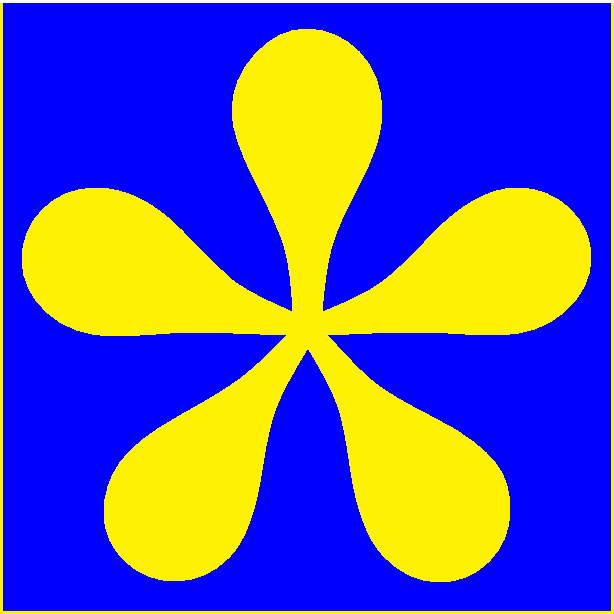  More so than any other type of vsl on this list, the Response Boat- Small (RB-S) was developed directly from a pre-existing design. They were originally intended for homeland security by the United States Coast Guard, and by many |
The RBS were discontinued in Plenipotentiary Council and United World Alliance service due to the flexibility of the Attack Craft, Light (ACL), but starting in 2250 new eyes turned to the RBS after UGS BREETAI TUL was forced to land on DdHX-303/Breetia-Kravsherra to begin building Camp Hunter (the beginning of the new ROBOTECH ACADEMY. The ACL's onboard were able to do the job, but they were slow, heavy and very difficult to handle in the dynamic circumstances of the landing. Onboard BREETAI TUL was 4 of the ancient Terran RBS's kept as reference units, and these were operationally ready- In a moment of thoughtless efficiency, an Academy instructor launched three of the boats and accomplished in a half hour what the ACL's had struggled to in 3 hours. The officer in question was ordered to stand before a board of inquiry, but this never occurred as other concerns took priority and the matter was eventually forgotten. The exercise did reveal that the RBS might serve a purpose even at this late date, and a small fleet were constructed for evaluation; The tests resulted in the re-commissioning of the design with the most minor of changes (addition of grav pods for launching but not for operational purposes and replacing the fuel tank with a generator system that powers the electric outboard motors). The RBS carry a lot of equipment, including a 100 GPM dewatering pump, extensive first aid gear, damage control kit with a variety of different sized wooden plugs, and life jackets, and a full complement of electronics including GPS, depth sounder, radar, and automatic chart plotter all interconnected on a single display screen. Additionally, they had mountings for two heavy support weapons, integrated into the Sampson's Post (bow) and stern post (astern). The new configuration placed the power plants below deck (reducing the possibility of an accident and assisting in damage control), but adding elctirci motors to the outboards for improved performance (especially in terms of maneuvering). Finally, while the aluminum hull and superstructure designs were kept, the vessel's damage capacities were improved with the addition of spider-armor (a new type of armor that is actually stronger and lighter than Kevlar and can be replaced far more easily). The RB-S have incredible maneuverability and are capable of speeds of up to 45 knots. The full cabin provides crew protection from the elements and is equipped with a state of the art navigation system, heater, shock absorber seats and a communication system capable of communicating with all other allied agencies, including local police, other mariners, nearby militry and even civilians. The boat can also be transportable by road or by any medium-sized transport plane (they were specifically designed to be loaded into a C-130), but a grav pod was added to allow them to quickly launch from a mothership. The development of the RBS proved they would be highly suitable to any non-combat situation where a ship might need to land on water (most starships land on water on under developed planets) for utility purposes; They can be used for combat as well, but are slightly limited compared to the T'sentraedi Light Energy Cannons their motherships are typically armed with and as such they normally don't carry mounted weapons. Name: Response Boat- Small (RB-S). Model Type: Small Boat. Class: Boat. Minimum Crew: 2: Coxswain and 1 Crewman. Passengers And Additional Crew: As many as 6 additional crewmen or passengers can be accommodated. Current Status:After 200 years the UGC has resumed purchasing these vsls for it's own use for special duties. For the most part, the Attack Craft, Light has supplanted it, even disarmed, but the one or two boats are standard inventory on most UGC ships capable of landing on a planet due to the ease of launching and maintenance. Most large ships land on the water due to their size and to prevent unnecessary incidents with grav pods over land. This make the presence of a small boat ideal to assist in anchoring and mooring operations.  
Computer modelling has revealed much more; Based on the known parameters, it was determined that the Terex could have used all of her guns, but not at the same time. Excessive use of speed and weapons combined would have led to catastrophic failure (either the ship goes DIS or crashes, either is a bad scenario), but since she seems to have been built as a life raft the use of weapons was probably not a priority- They may never have been connected to power, and one of the main forward guns was clearly missing. The REF's computer modelling revealed that catastrophic failure was inevitable, but with careful power management the ship could have survived long enough to reach somewhere with better facilities for reaching civilization (ie, a major spaceport). Further modelling revealed that with a slight modification the craft could operate at 100% in base design parameters- Namely the addition of either 8% hull or loss of equivalent internal space to a proper powerplant. The addition of an AT-ST torso would have sufficed in this consideration, but the builder(s) may not have had that option. Considering she was built in the midst of a devastated battlefield, the probability is they simply didn't have the tools rather than parts to do so.   Currently Open. | | ||||||||||||||||||||||||||||||||||||||||||||||||||||||||||||||||||||||||||||||||||||||||||||||||||||||||||||||||||||||||||||||||||||||||||||||||||||||||||||||||||||||||||||||||||||||||||||||||||||||||||||||||||||||||||||||||||||||||||||||||||||||||||||||||||||||||||||||||||||||||||||||||||||||||||||||||||||||||||||||||||||||||||||||||||||
